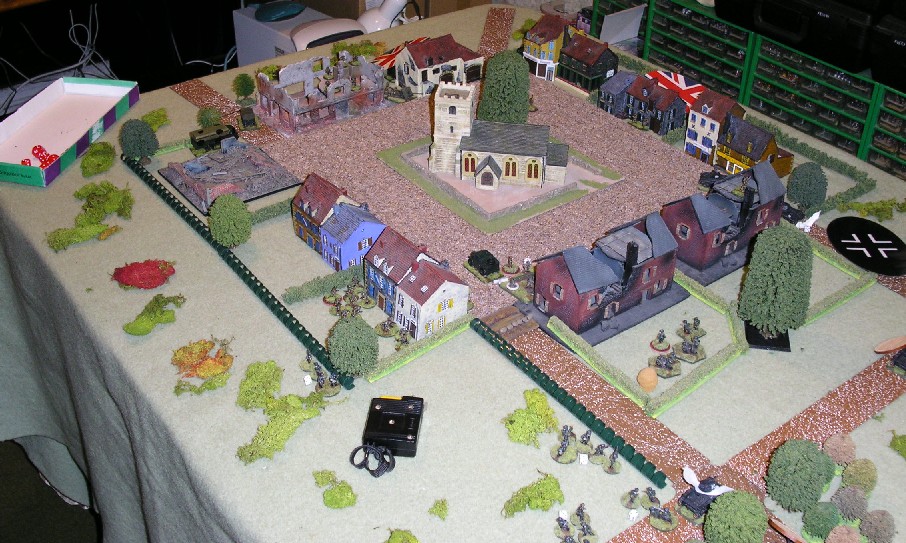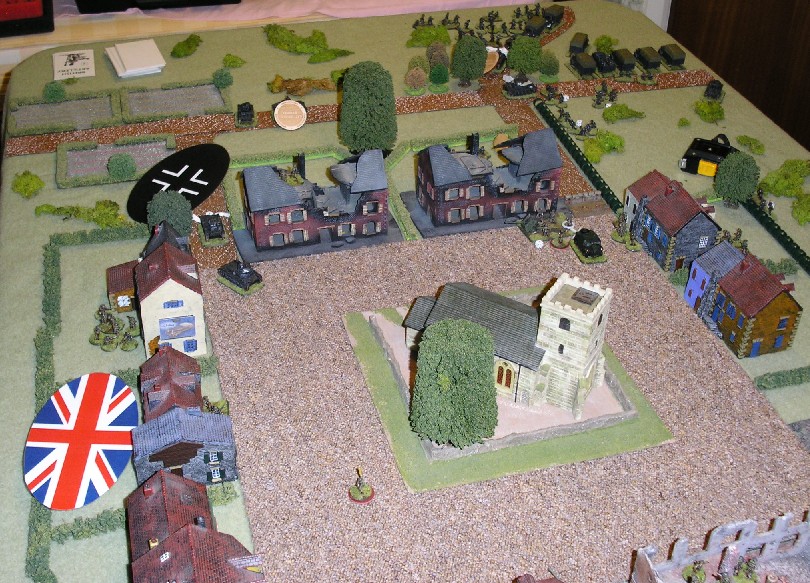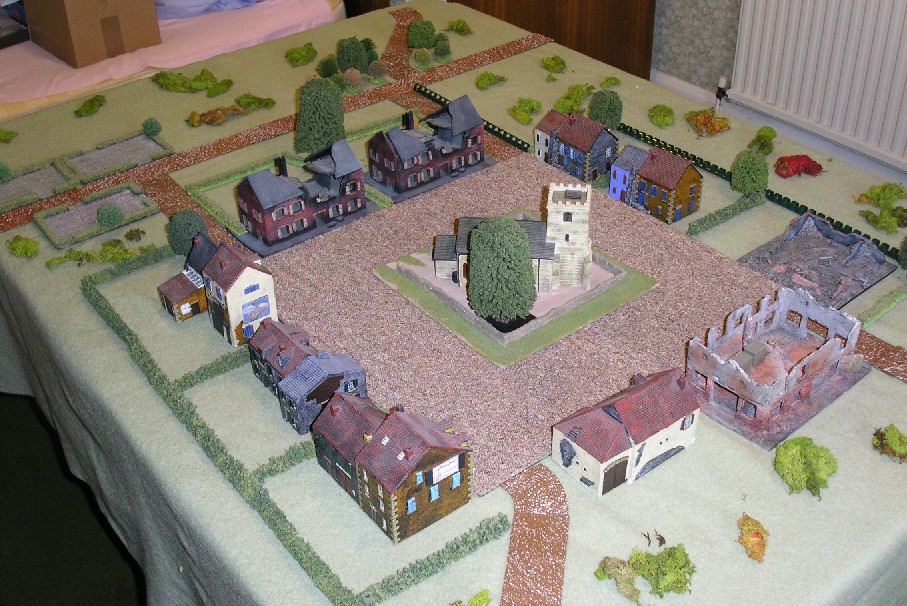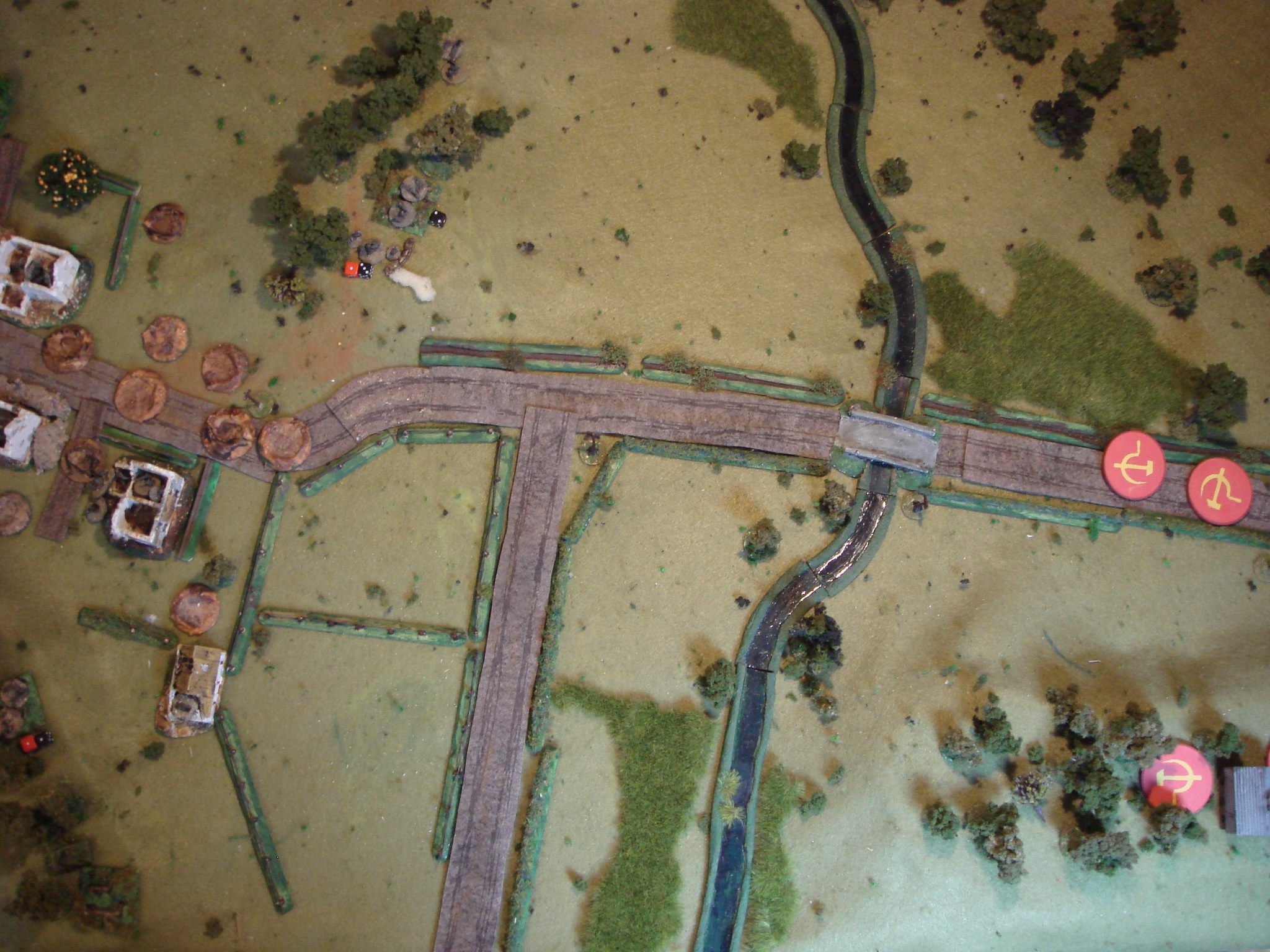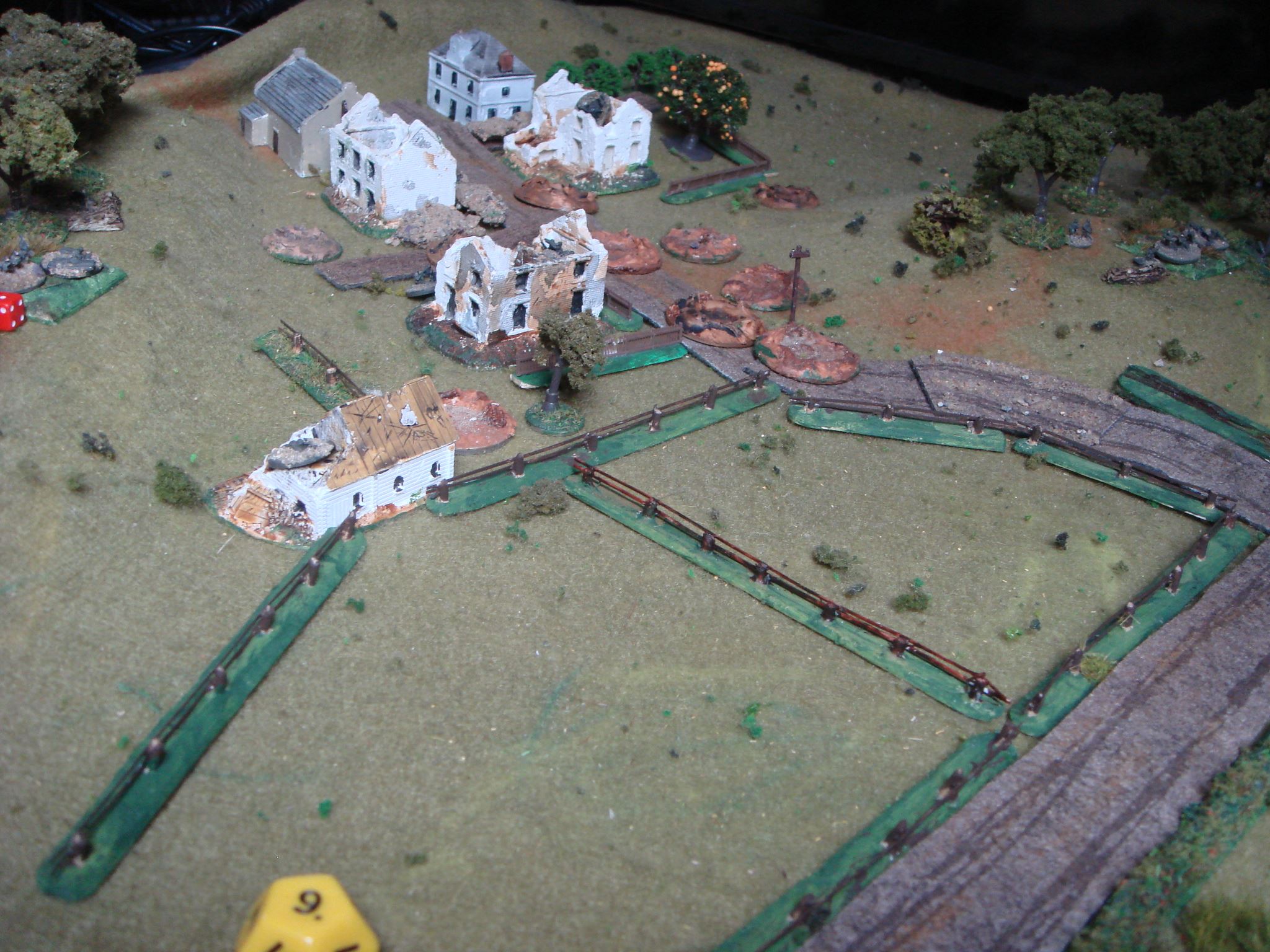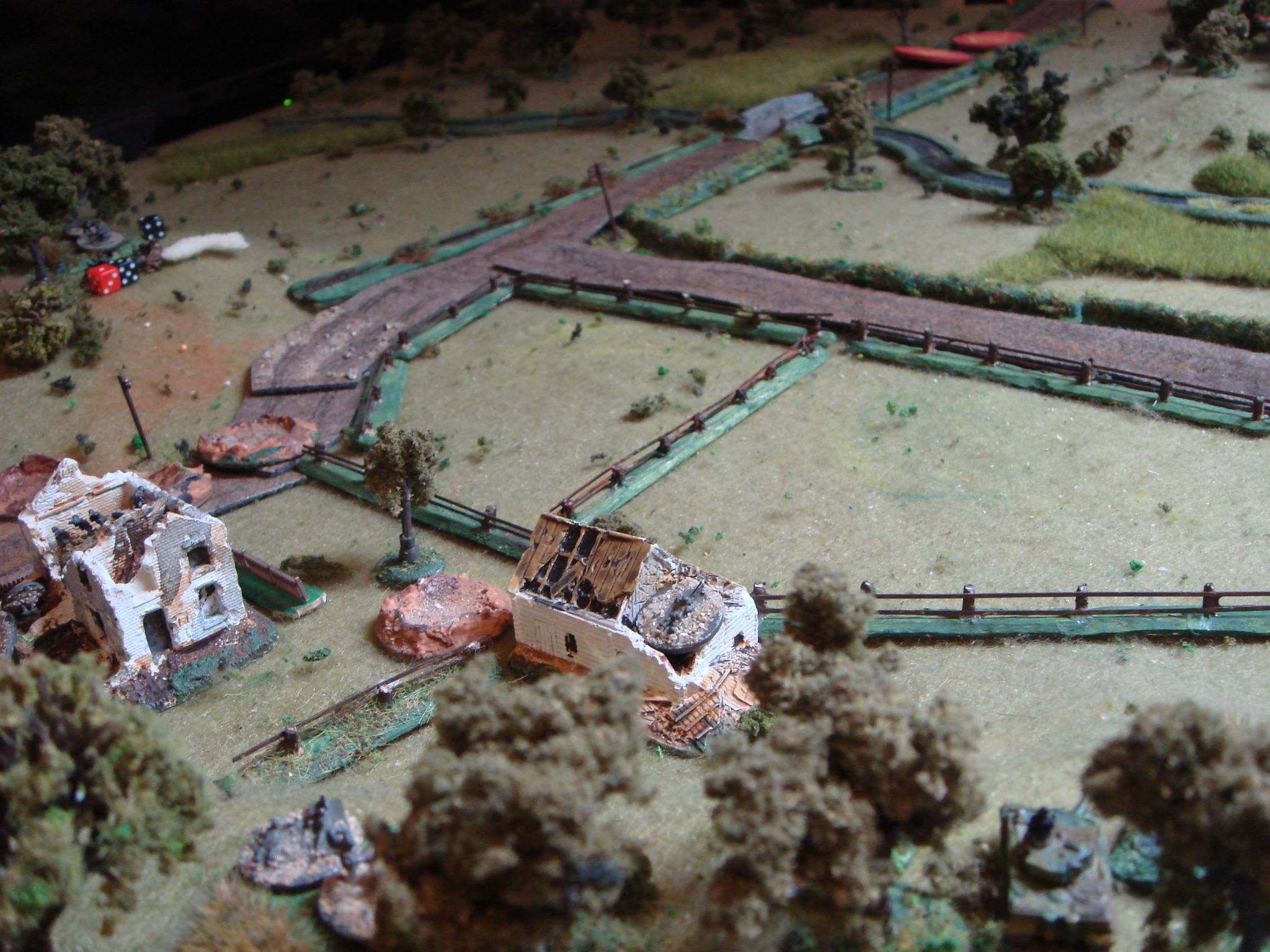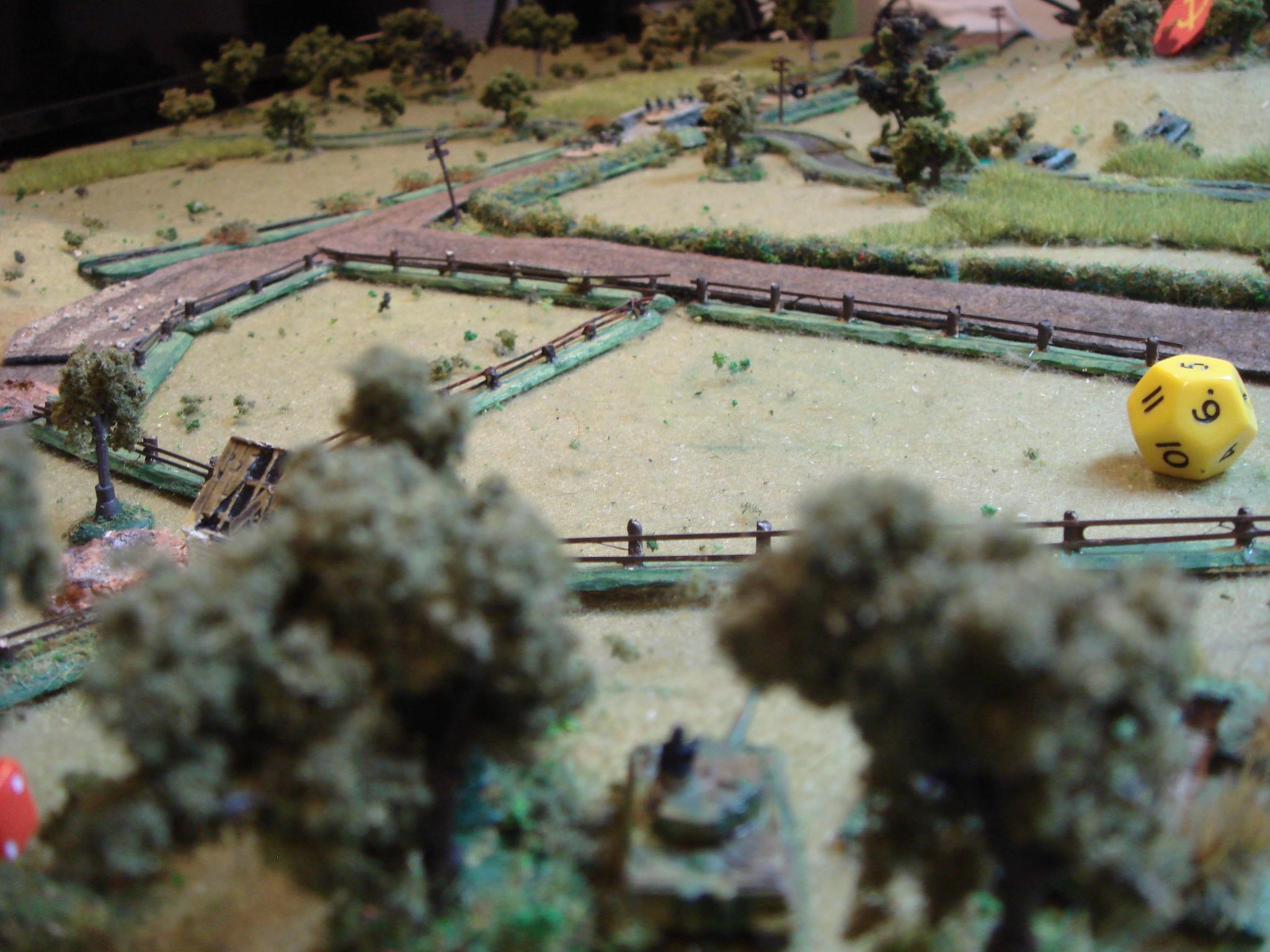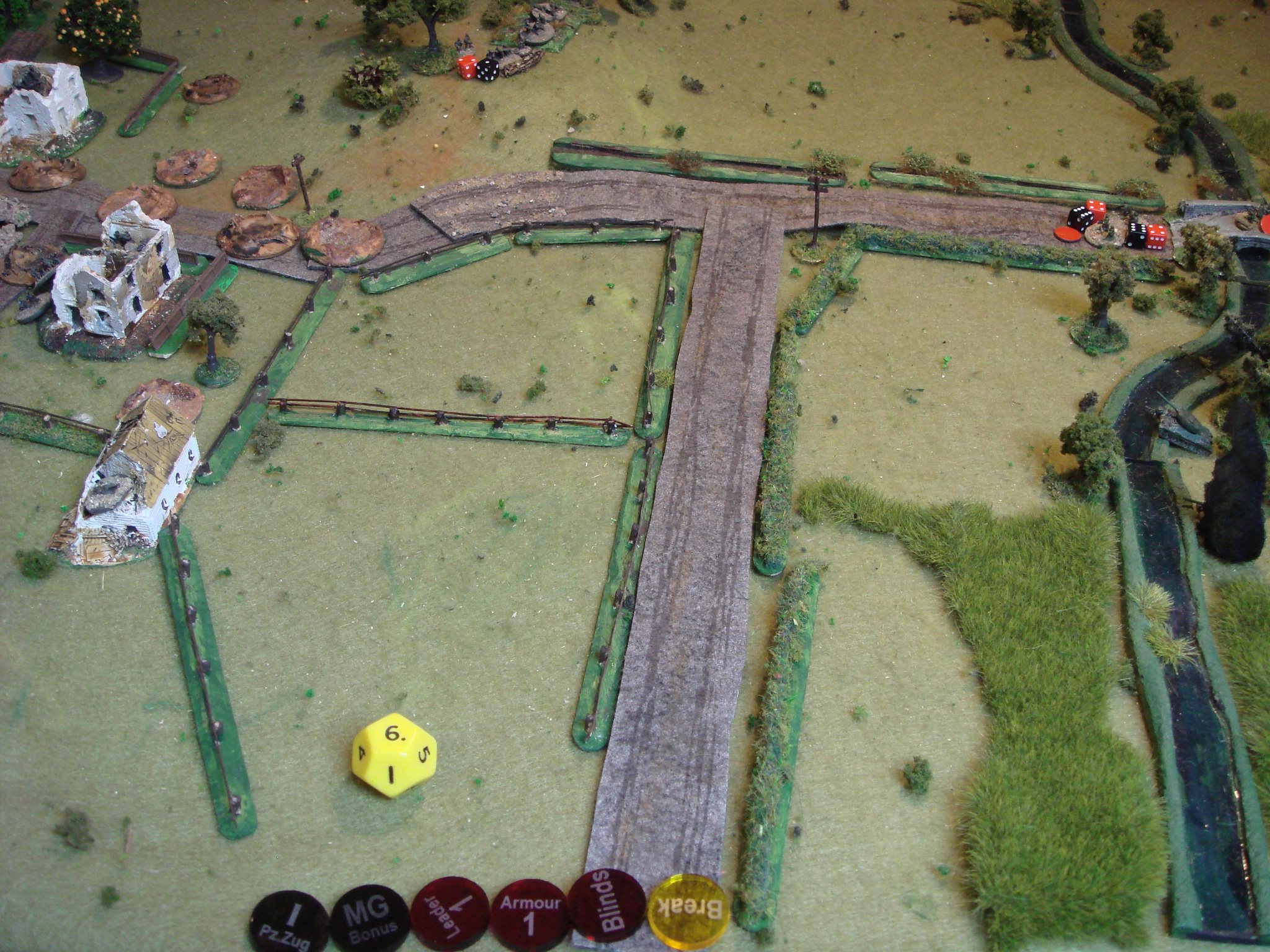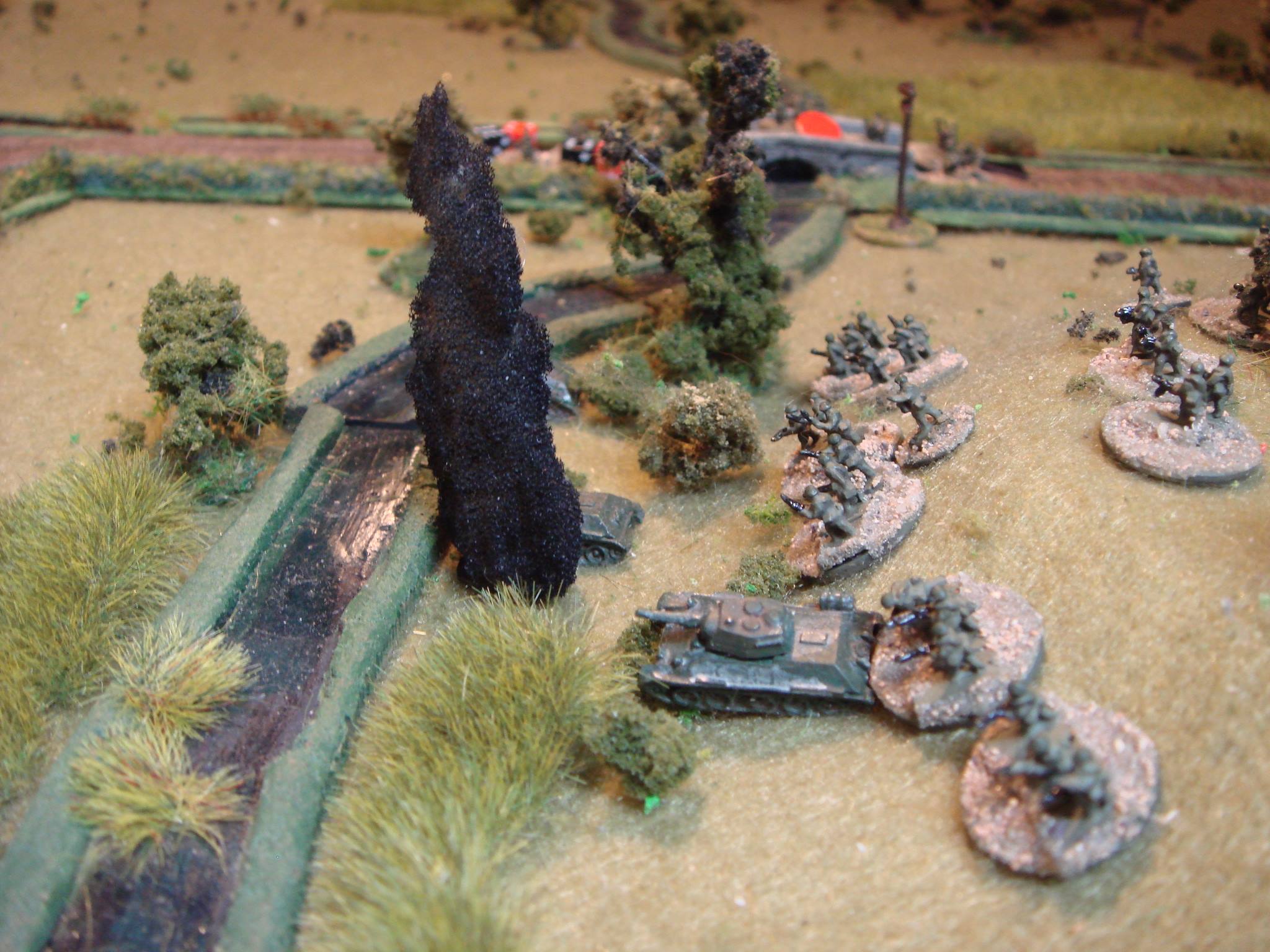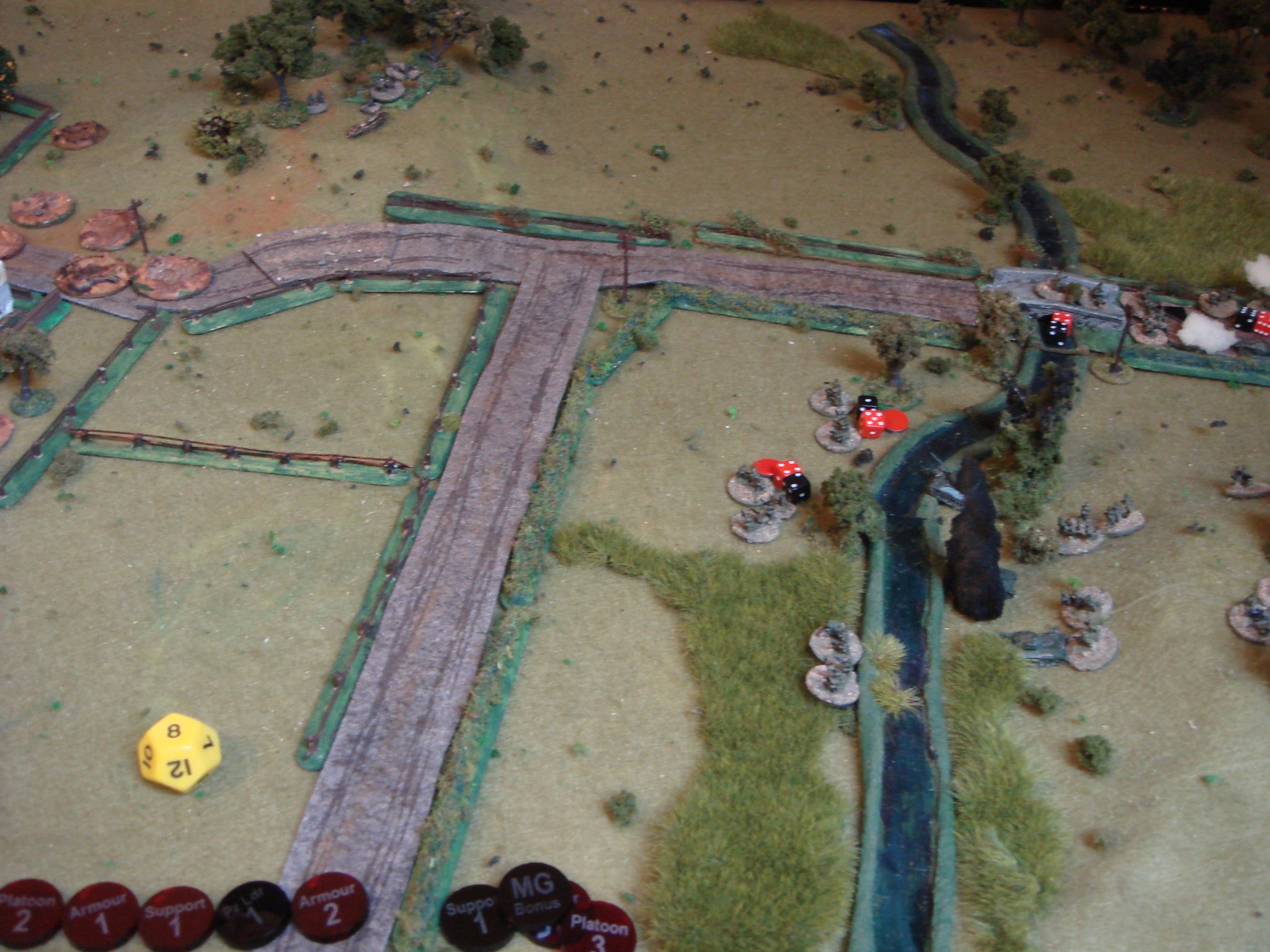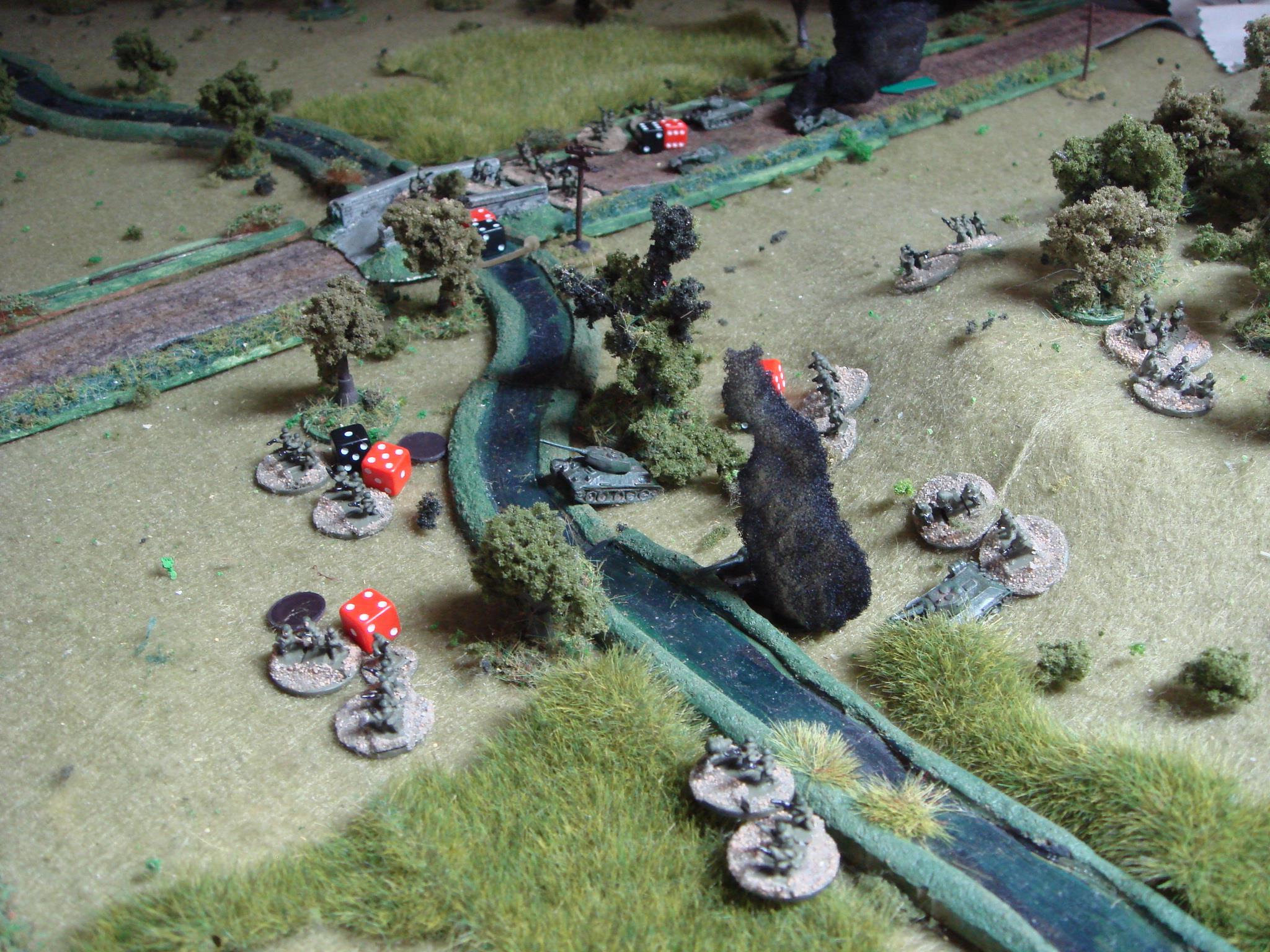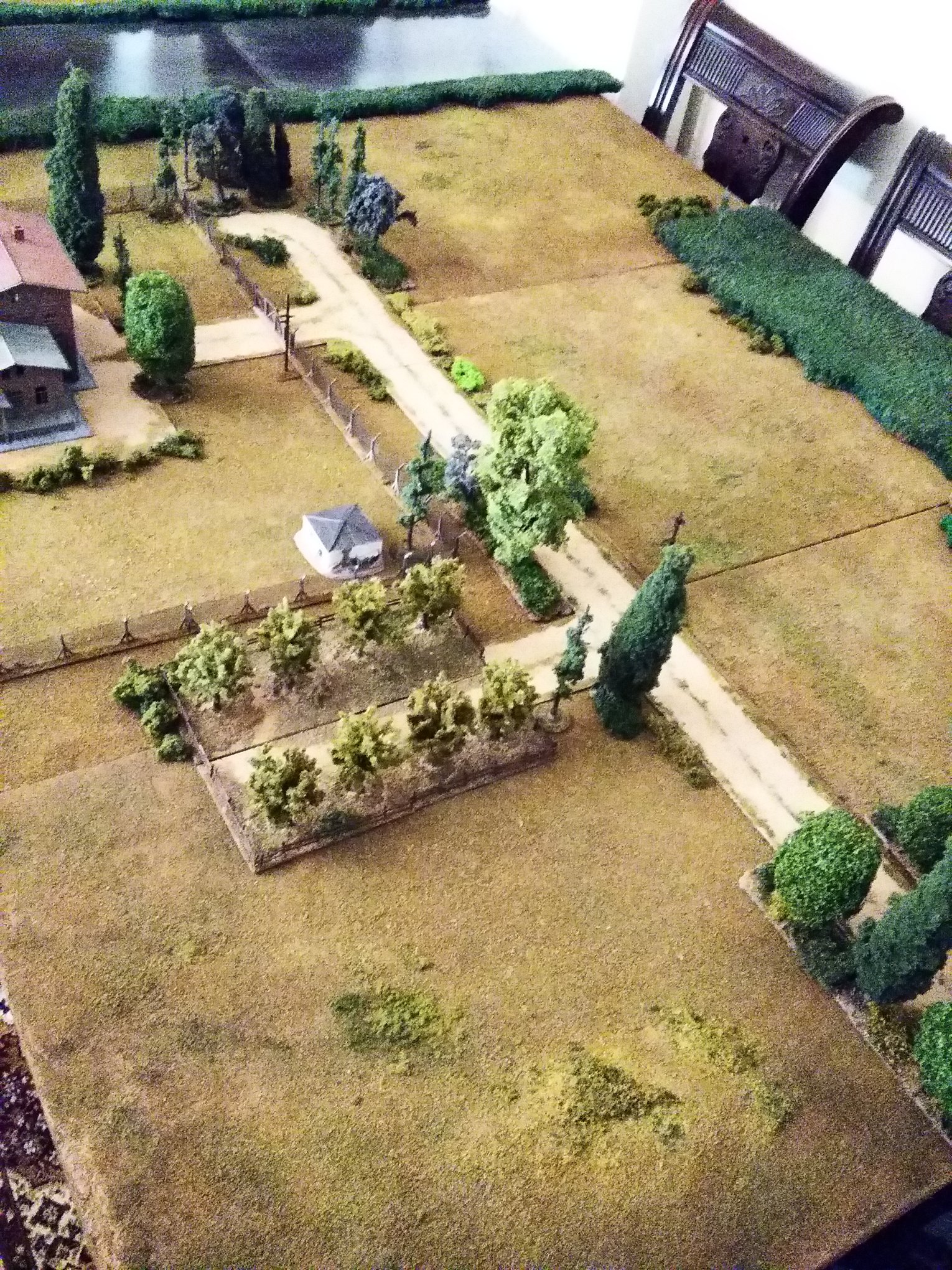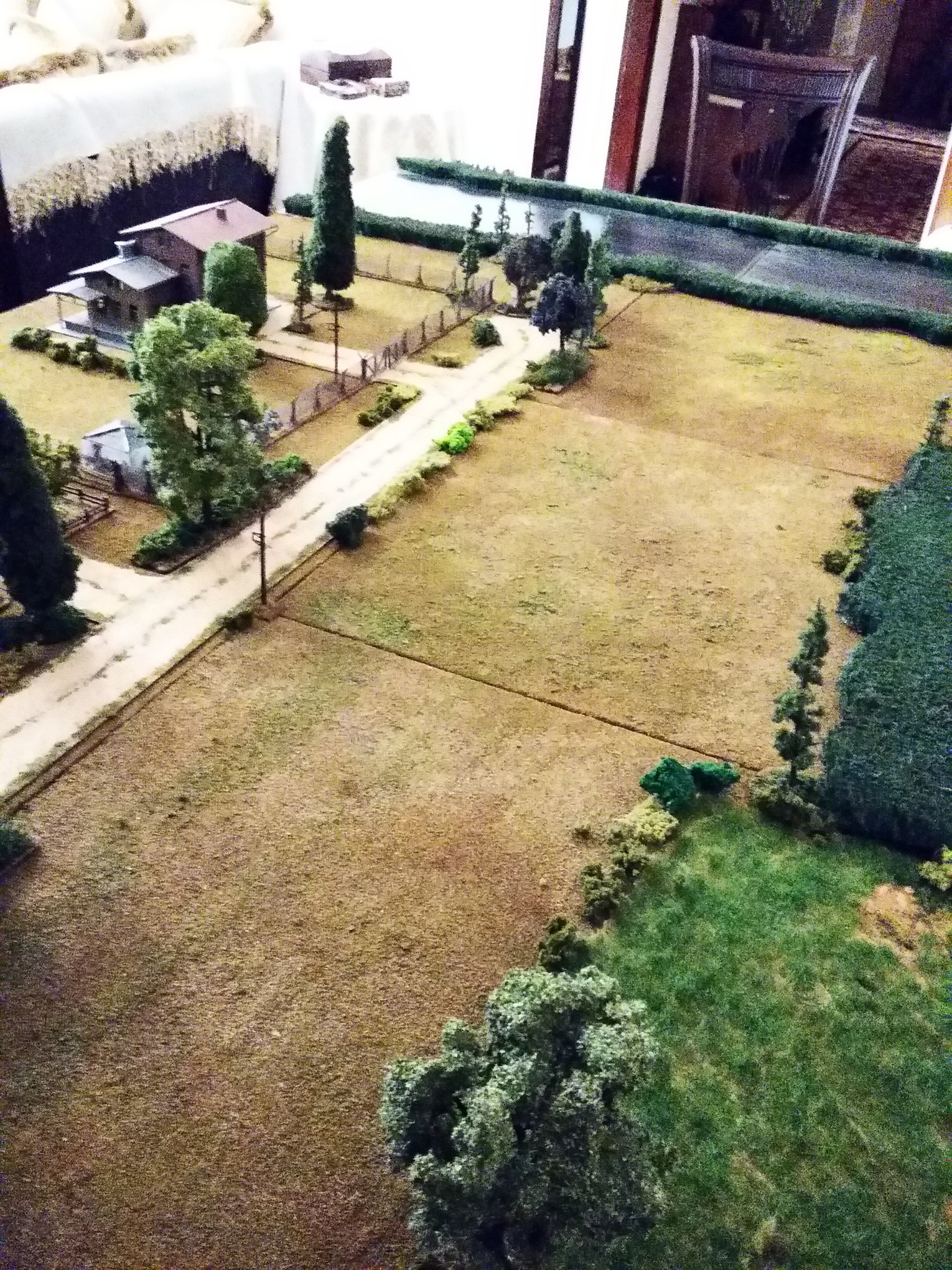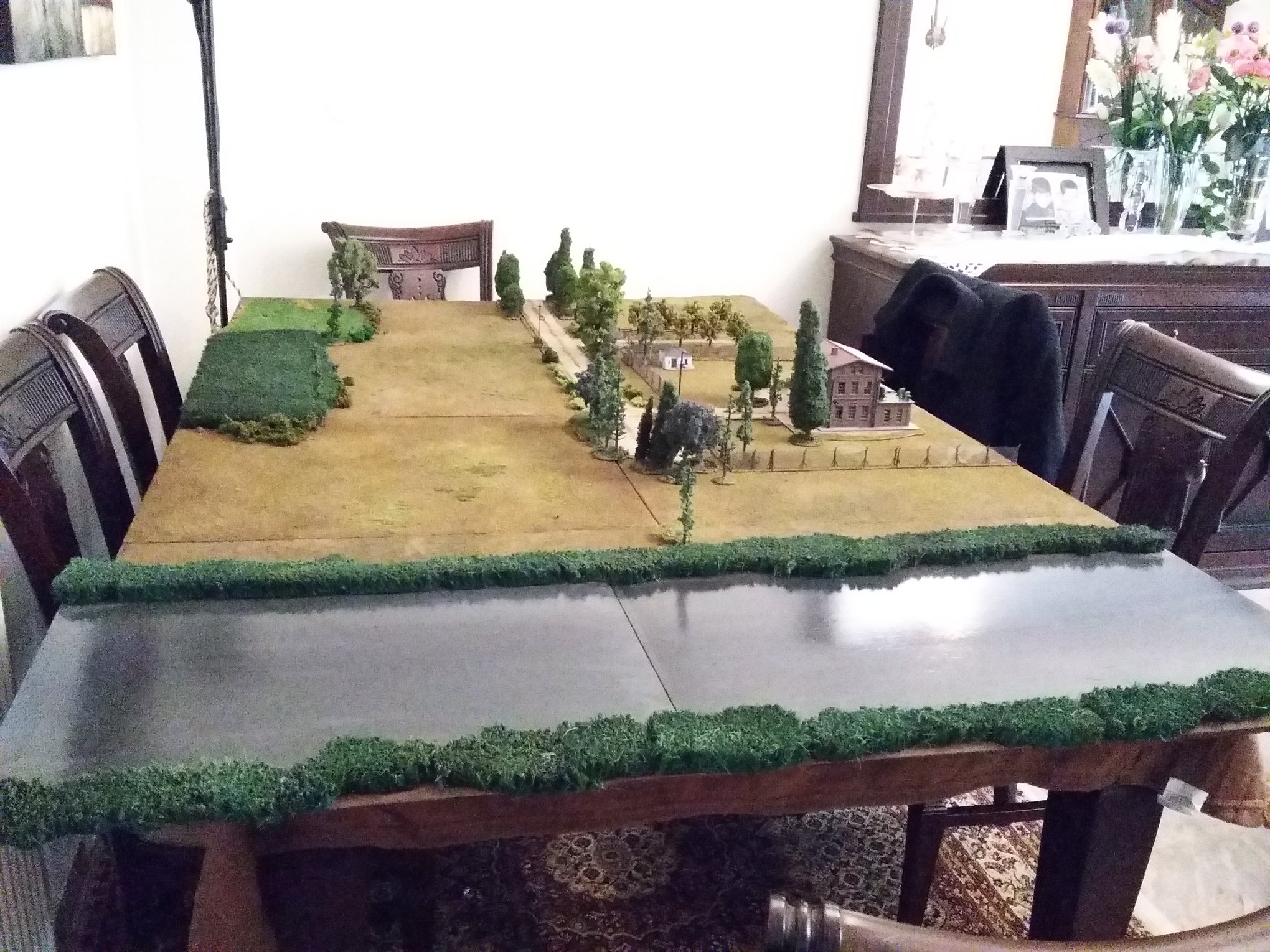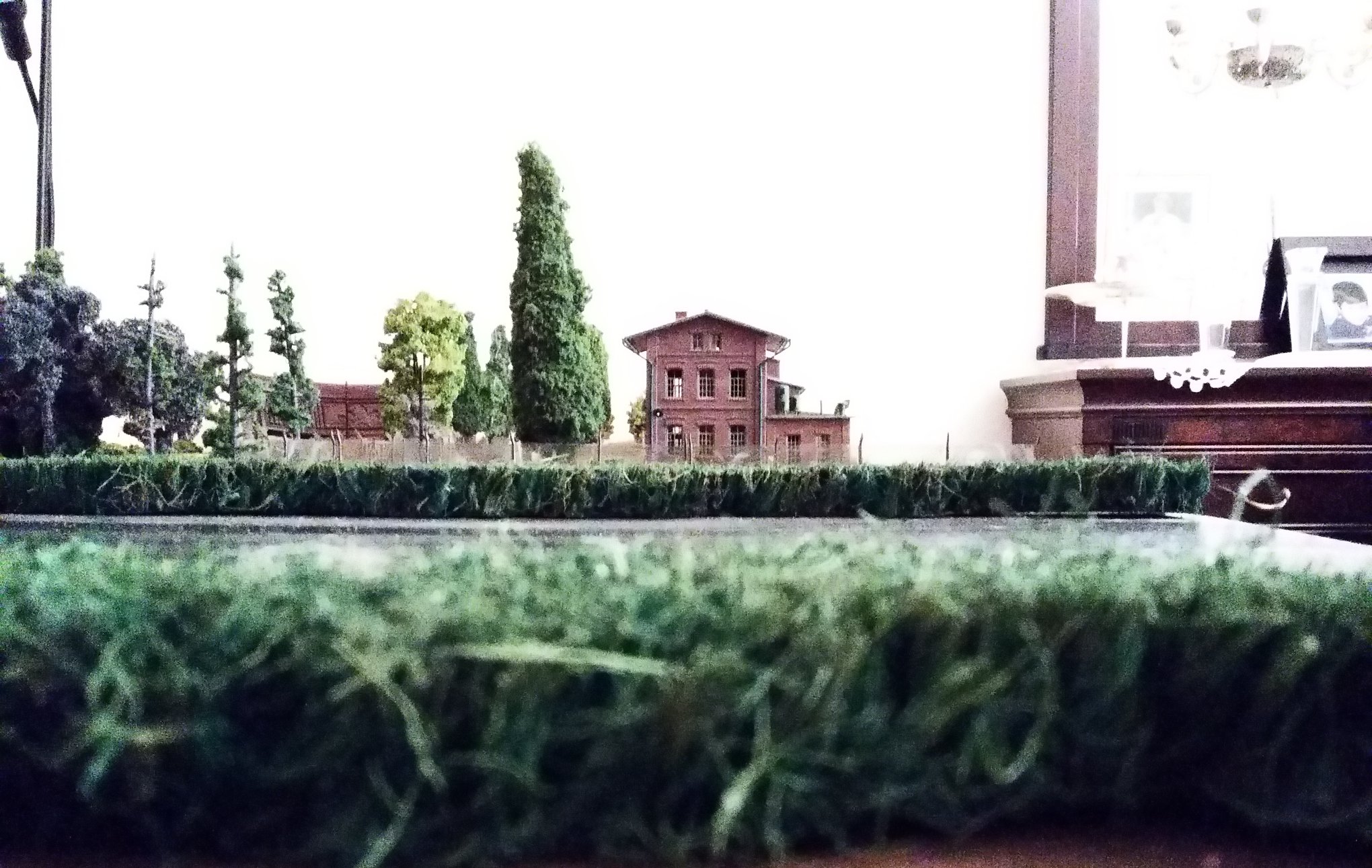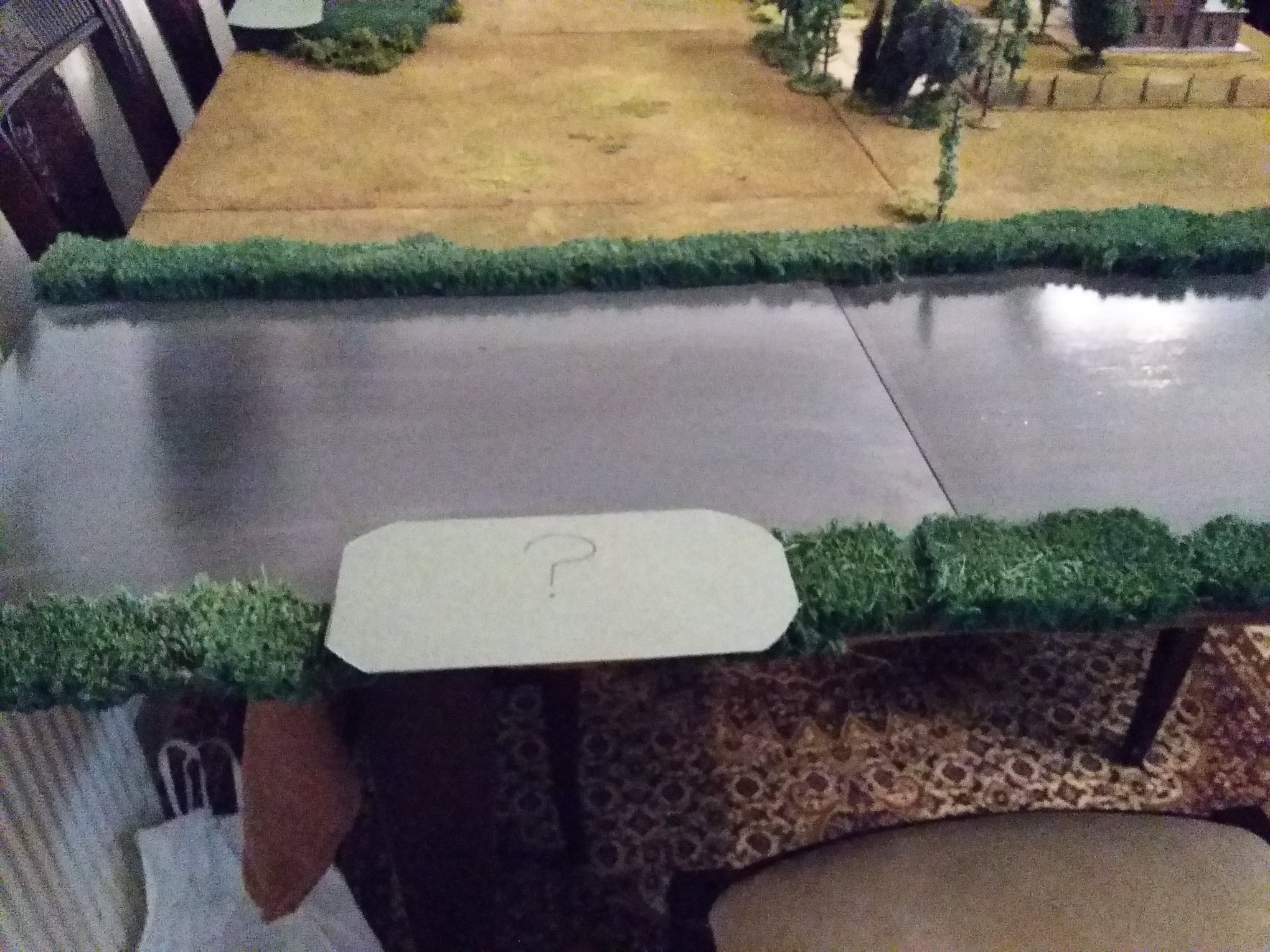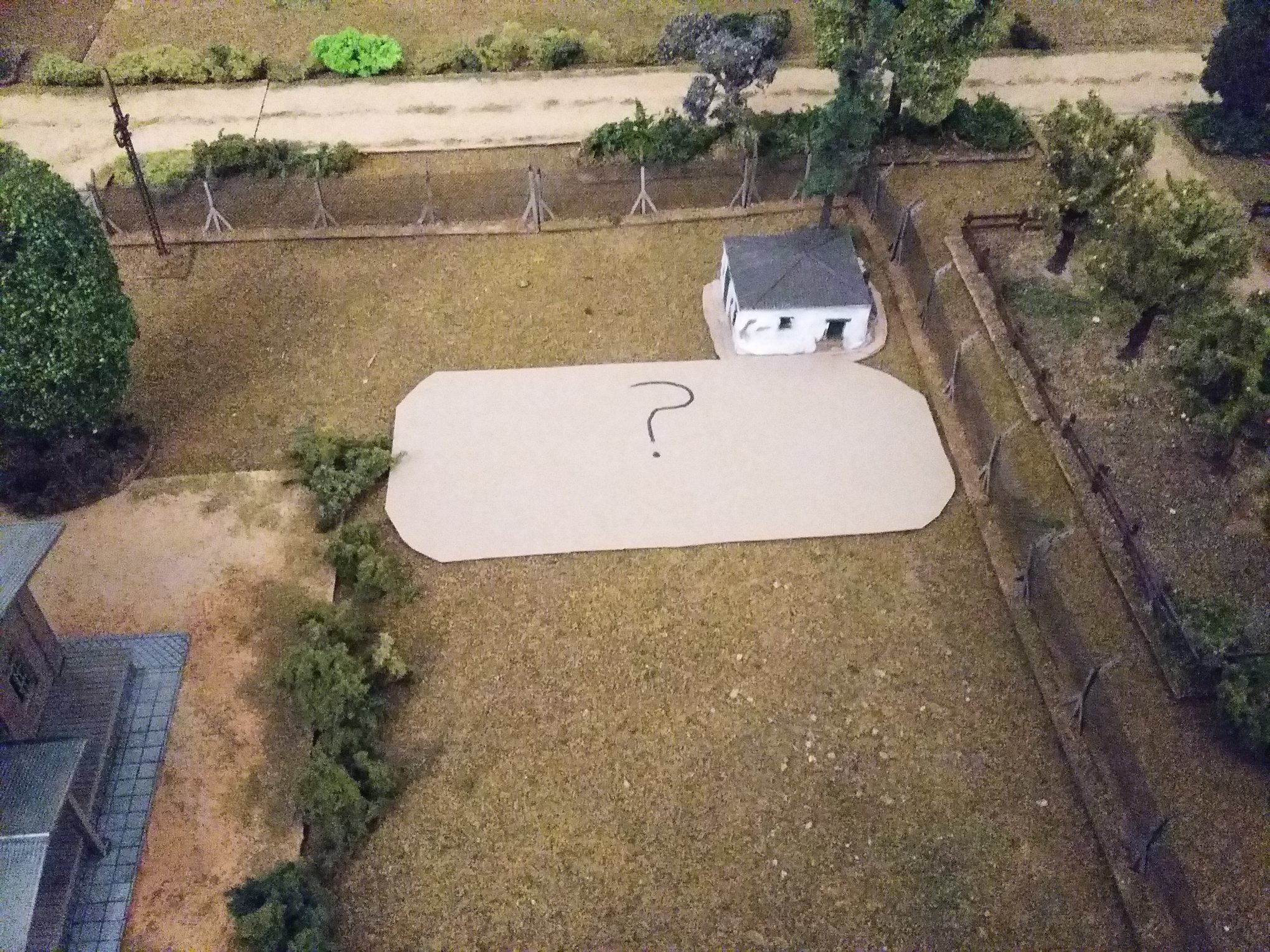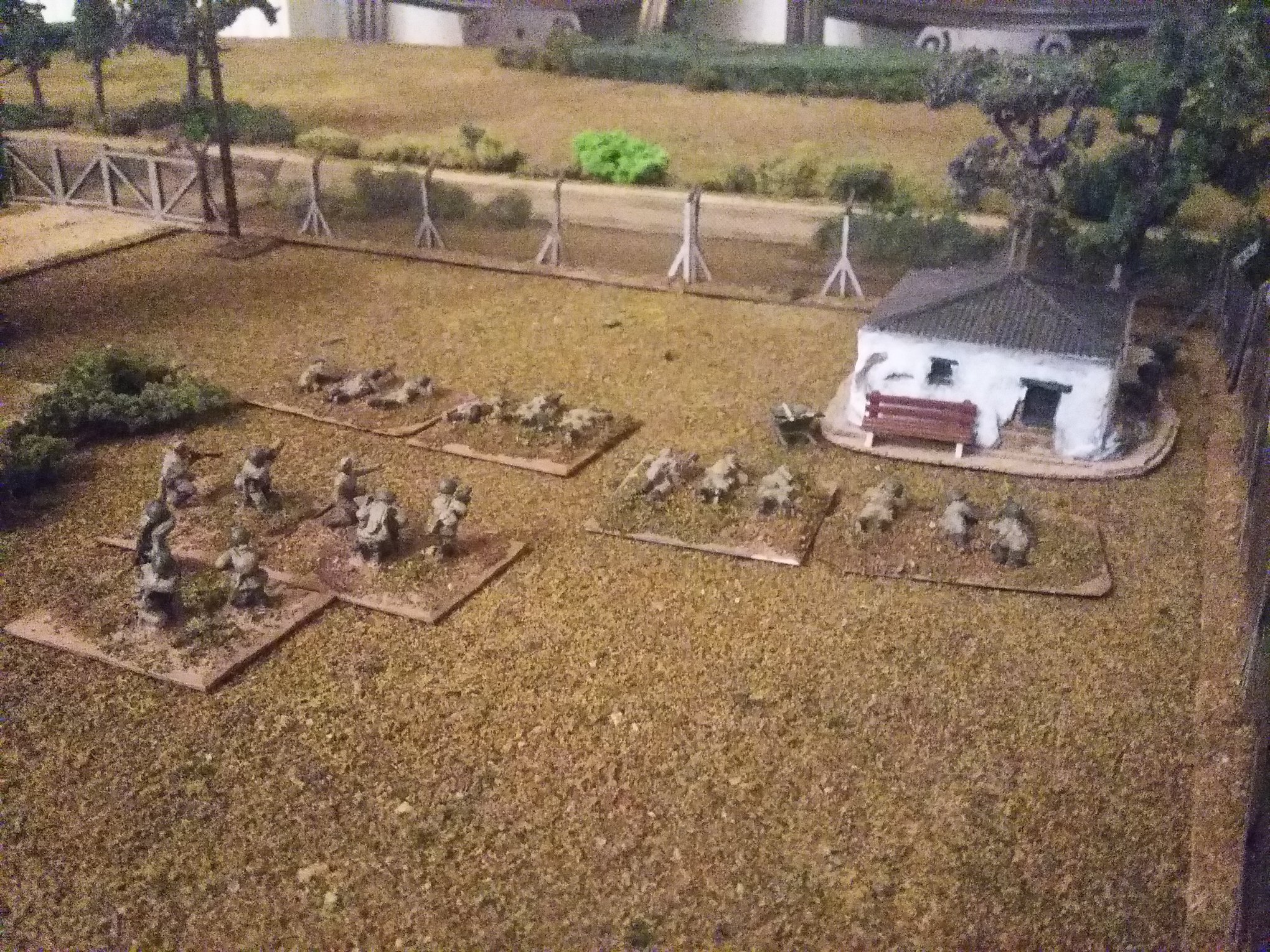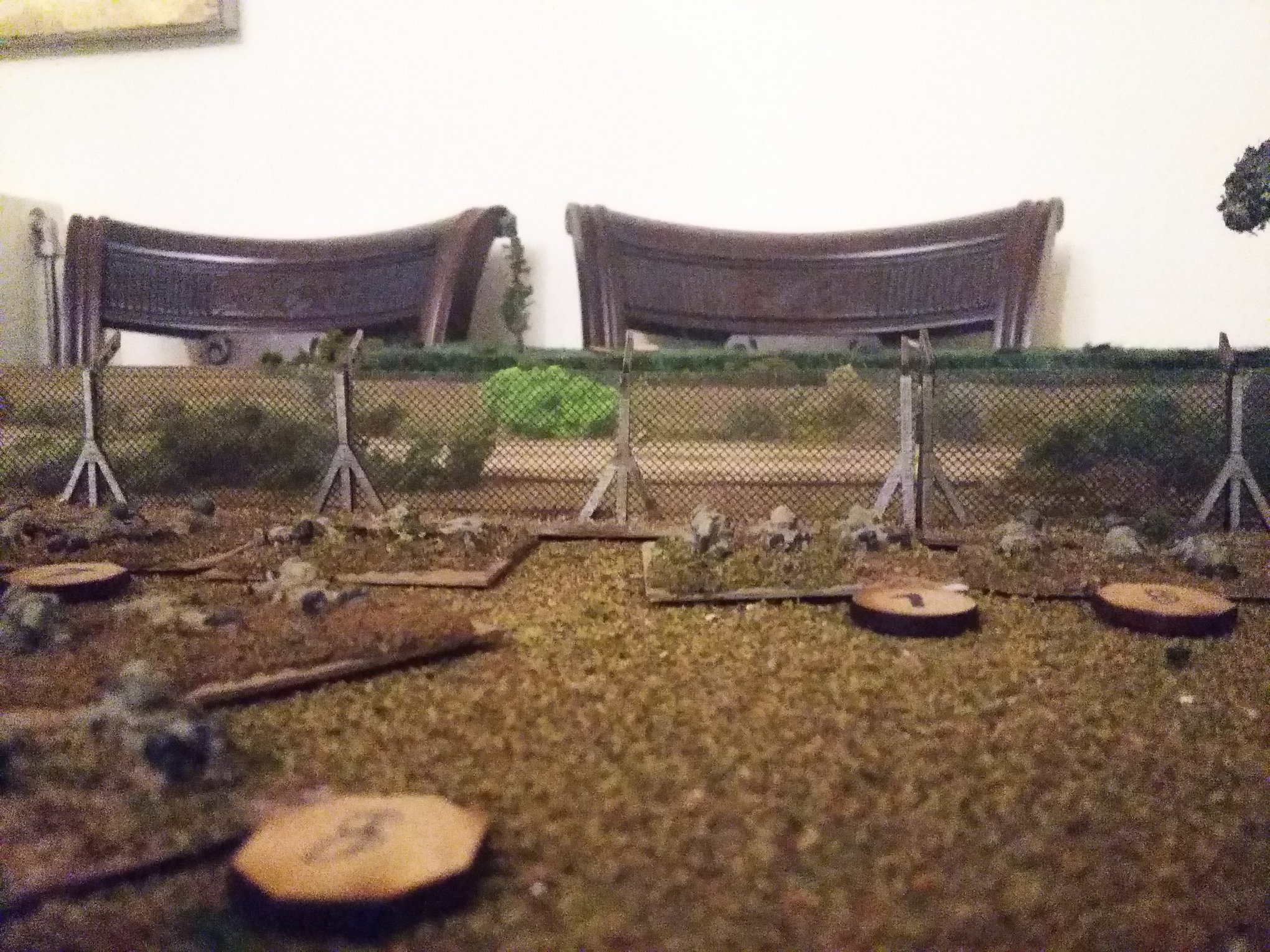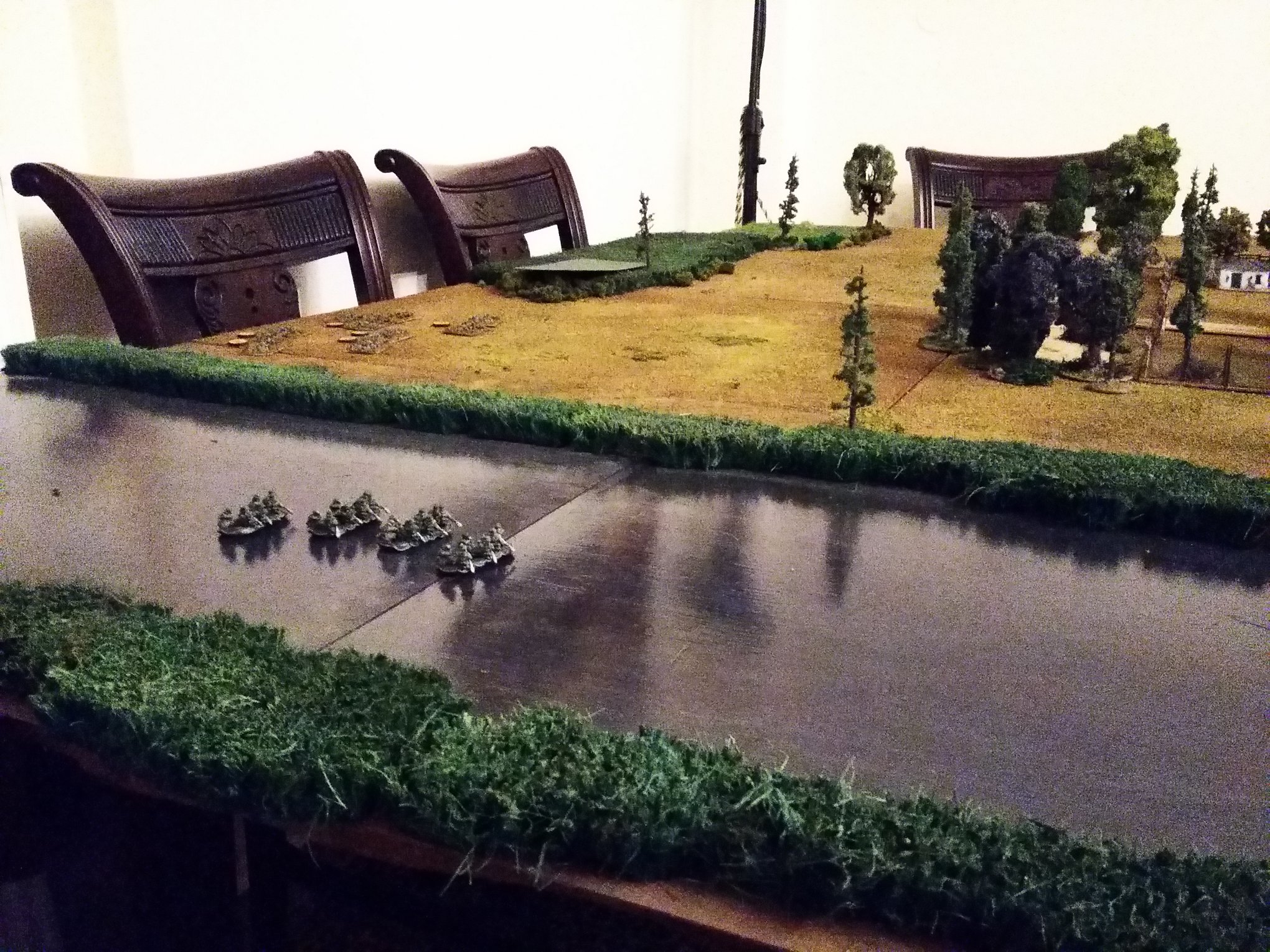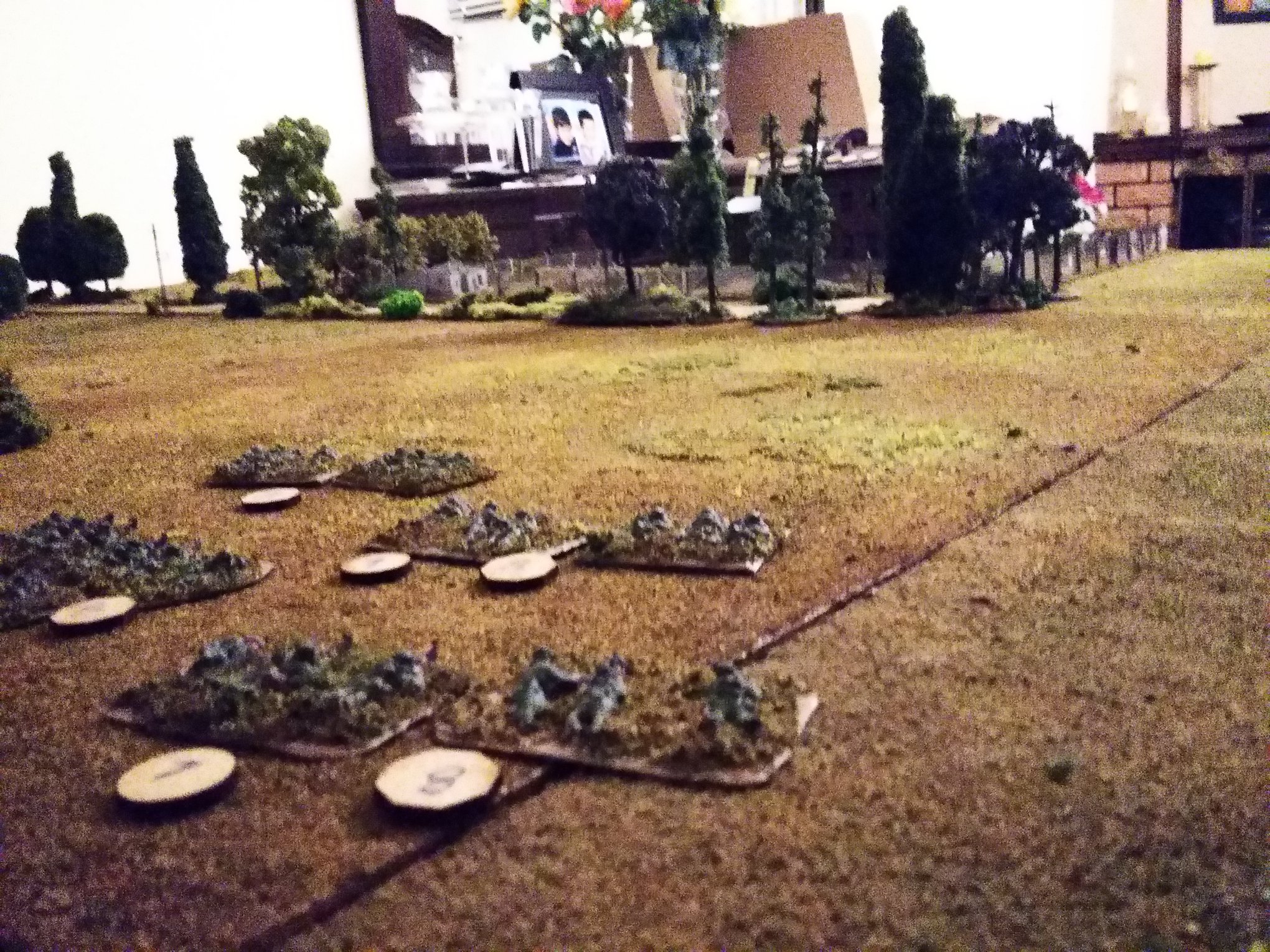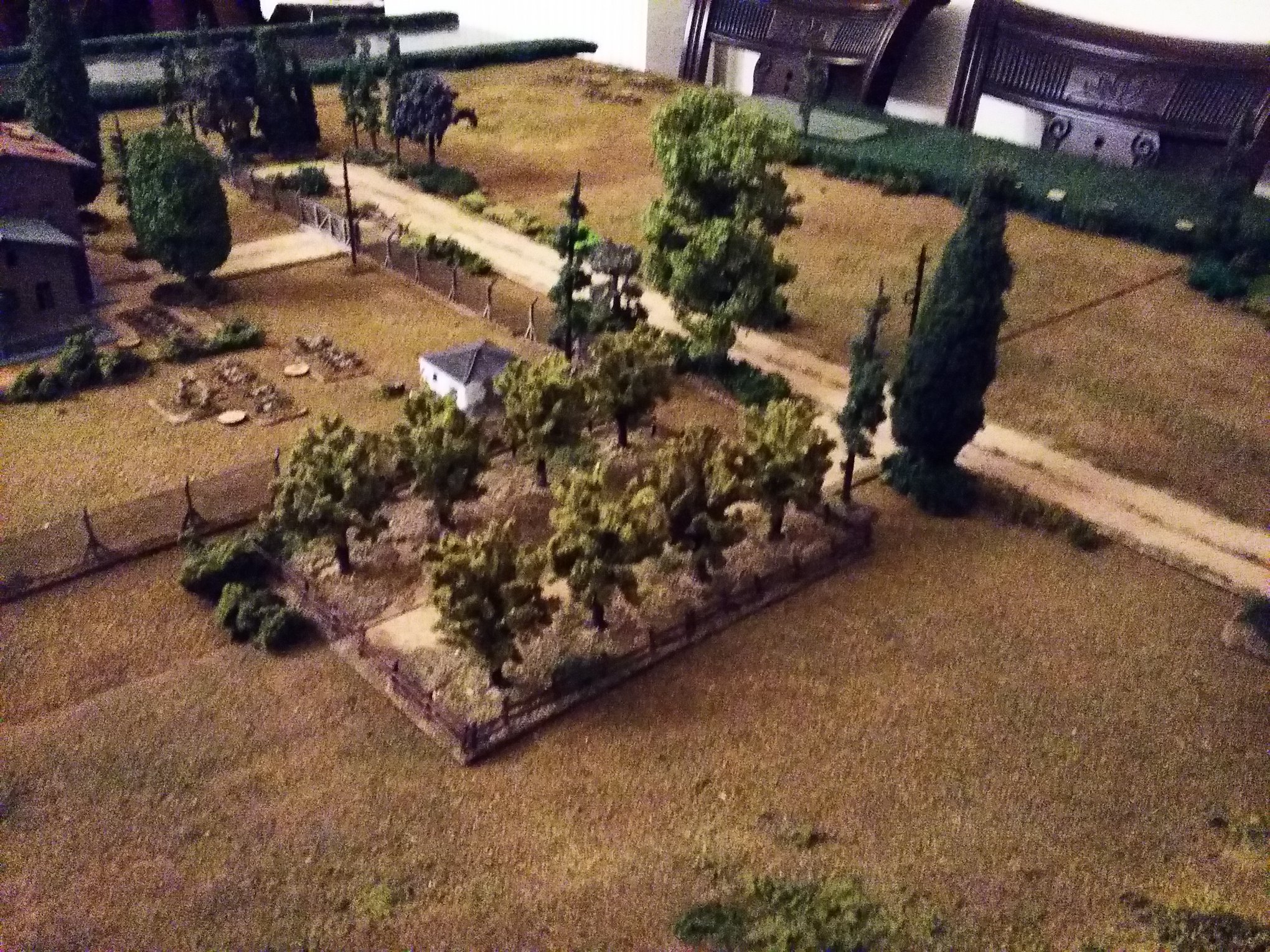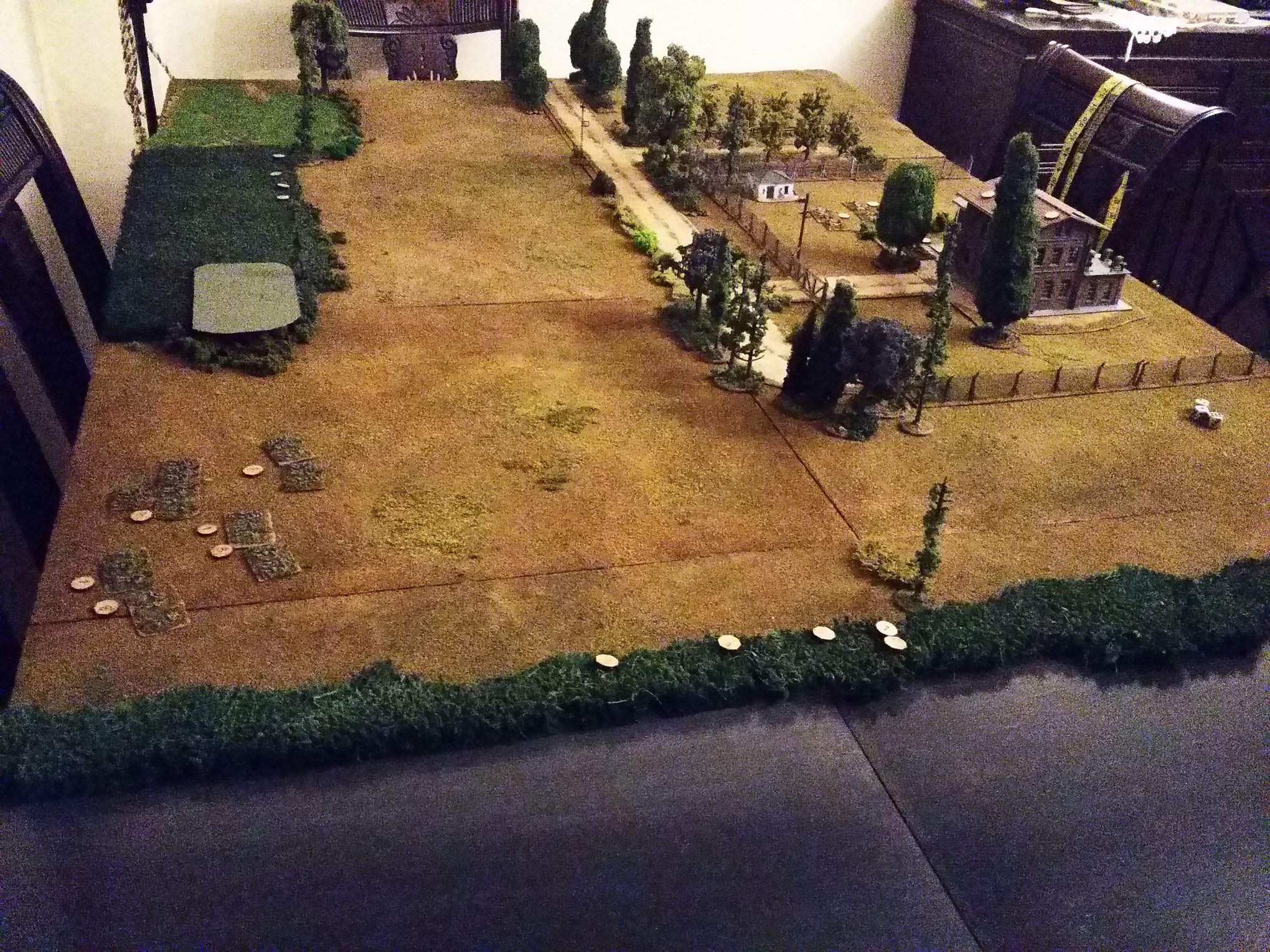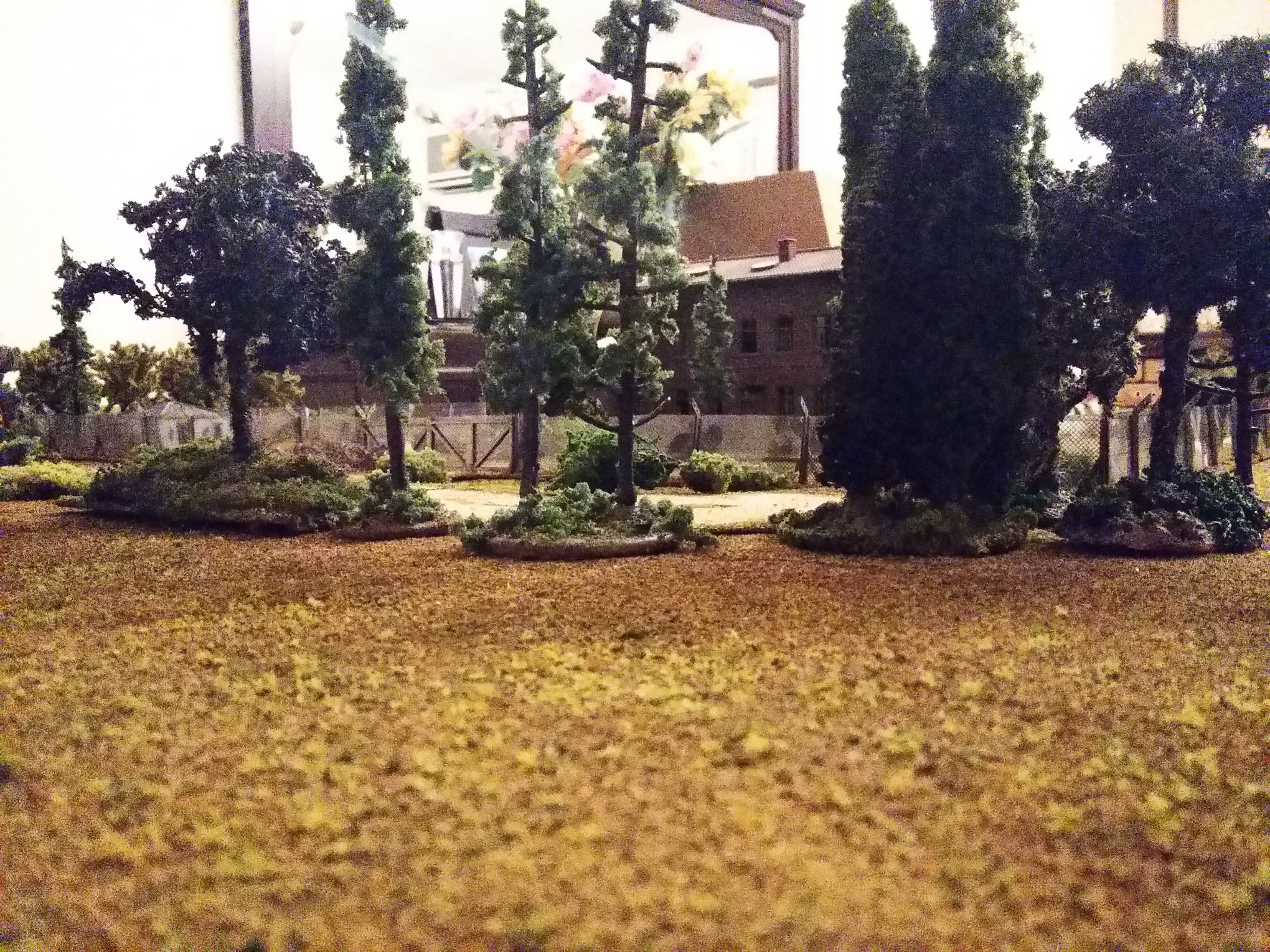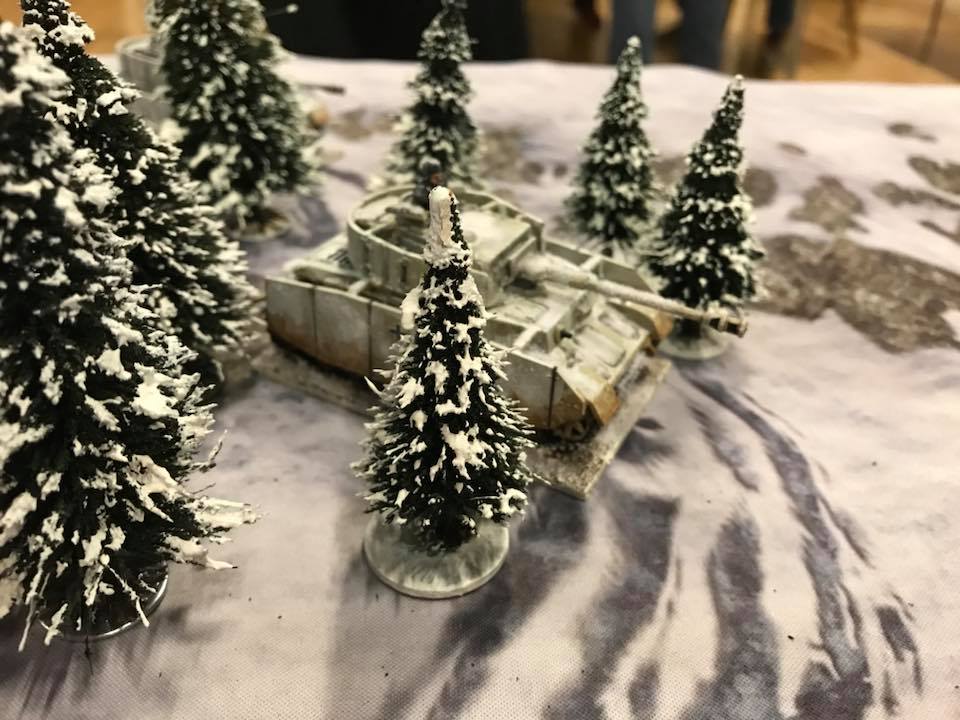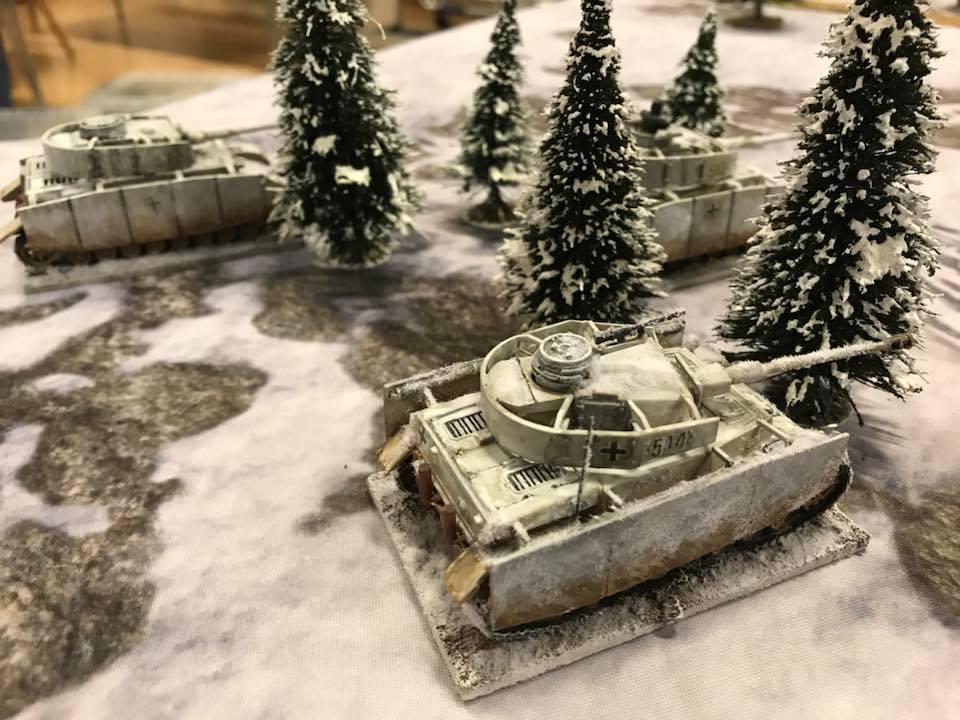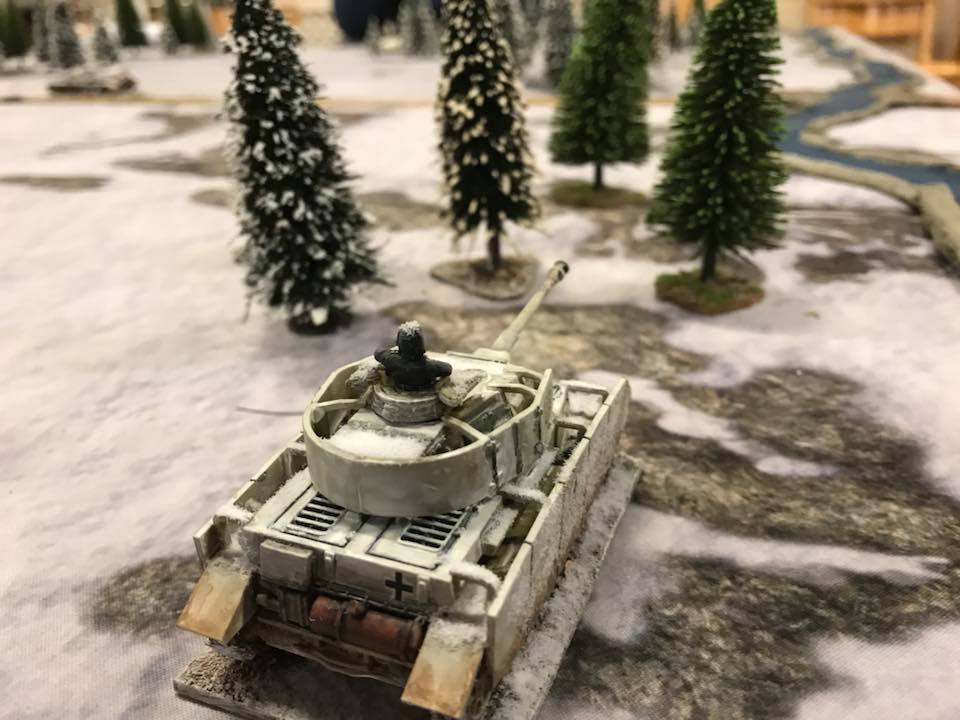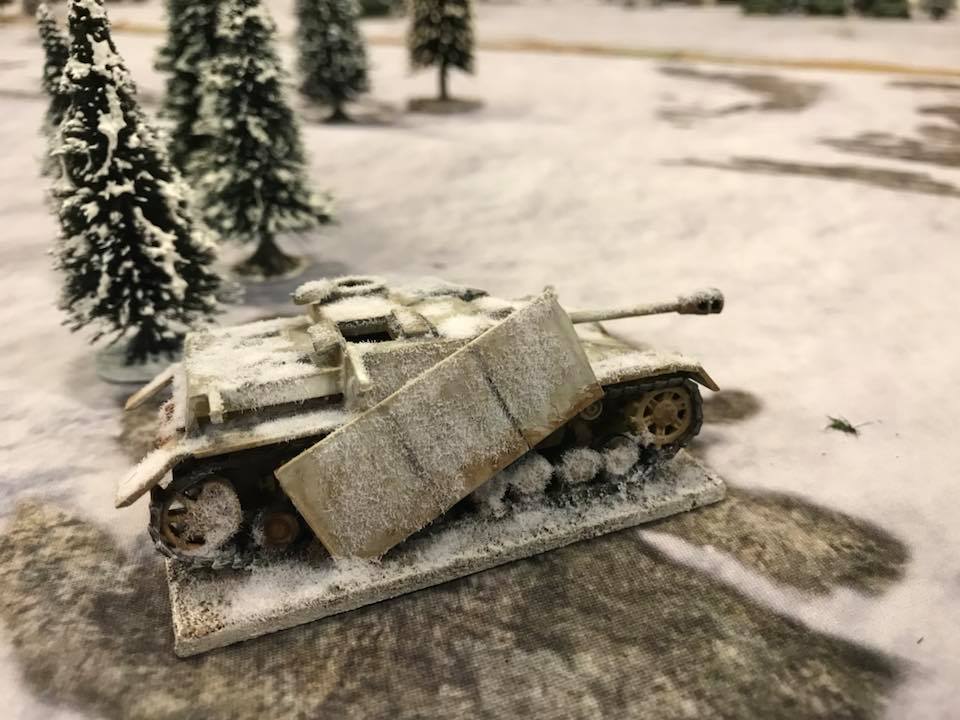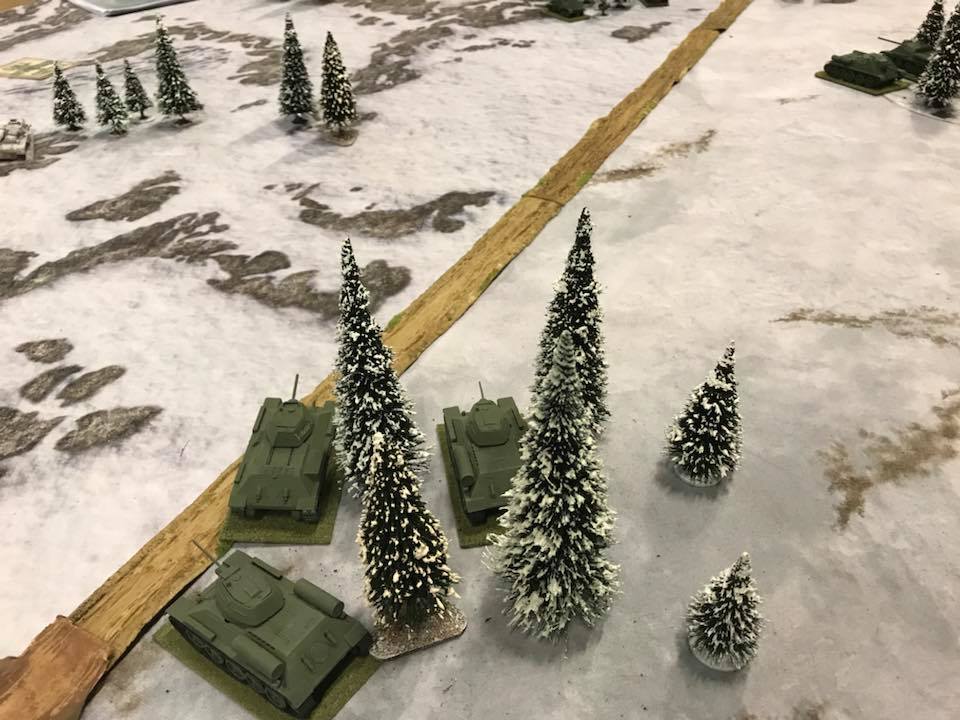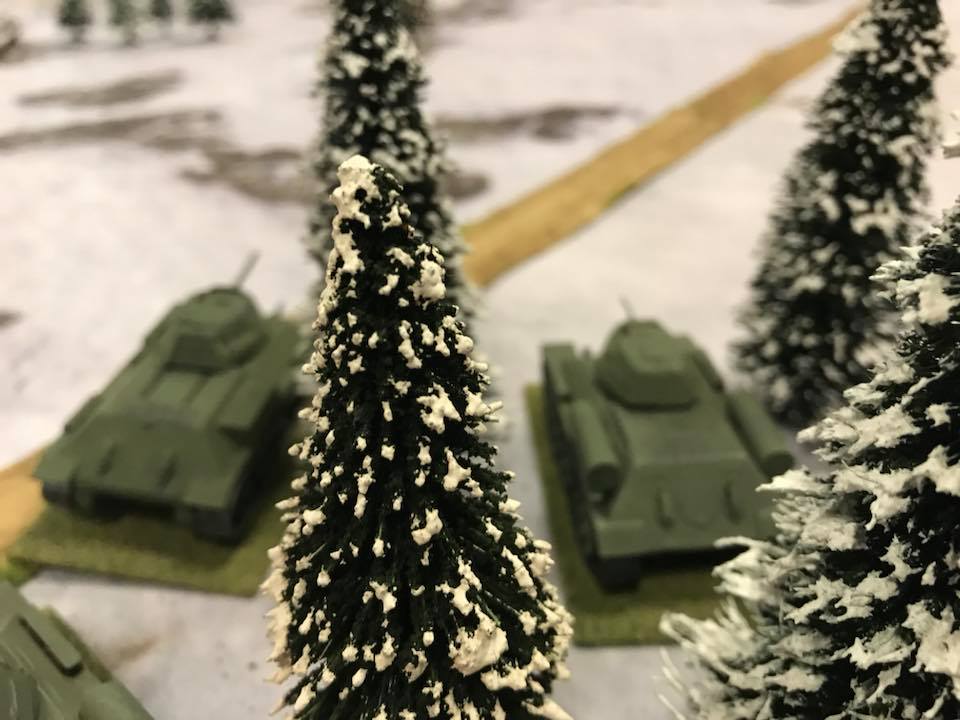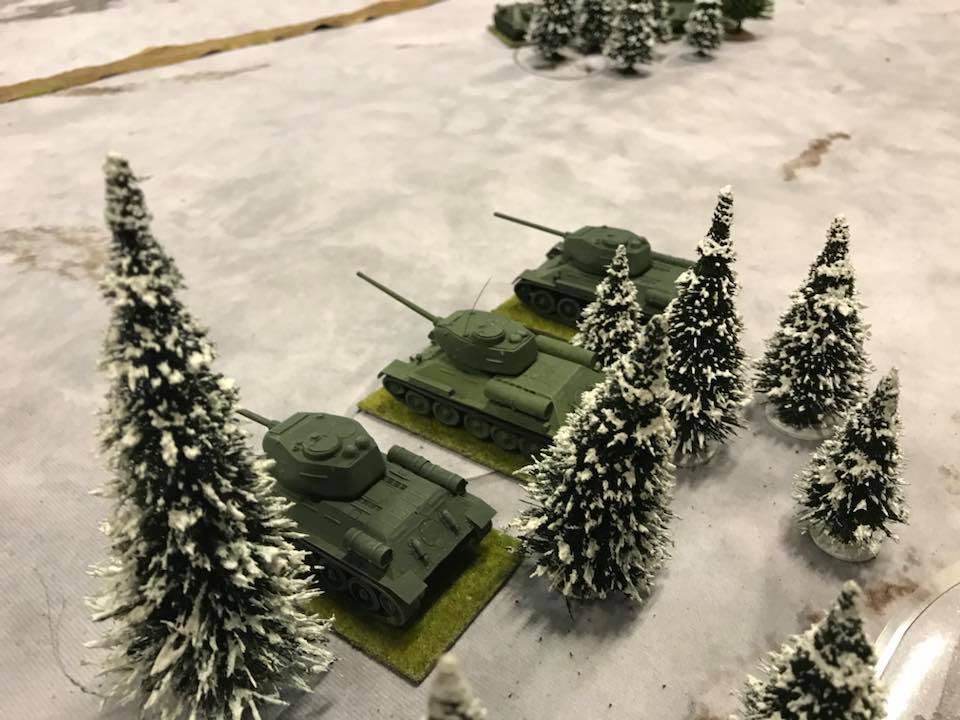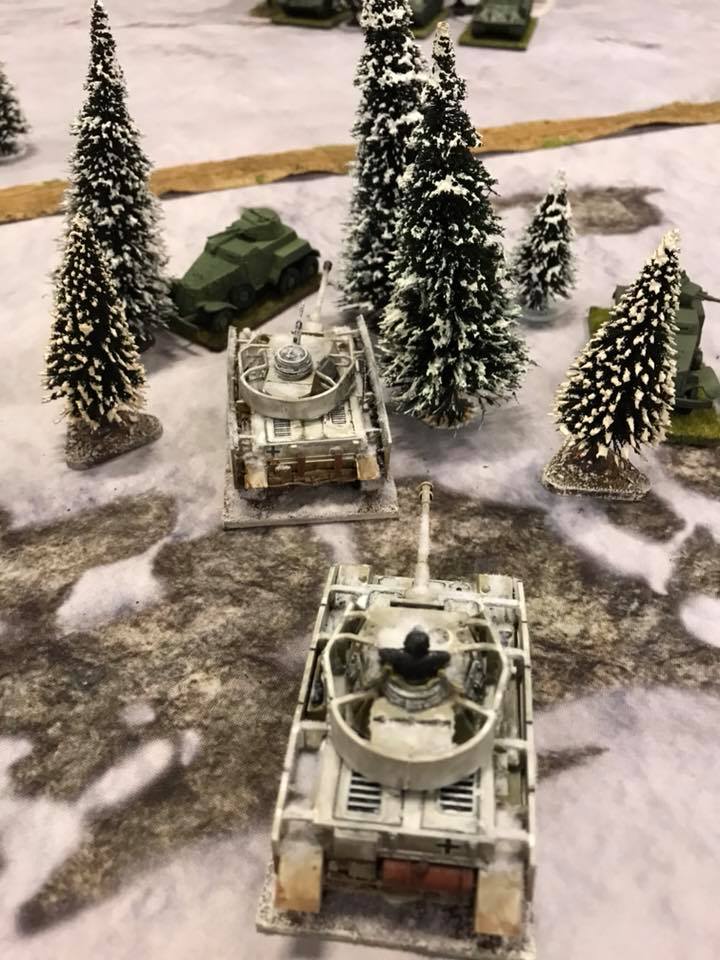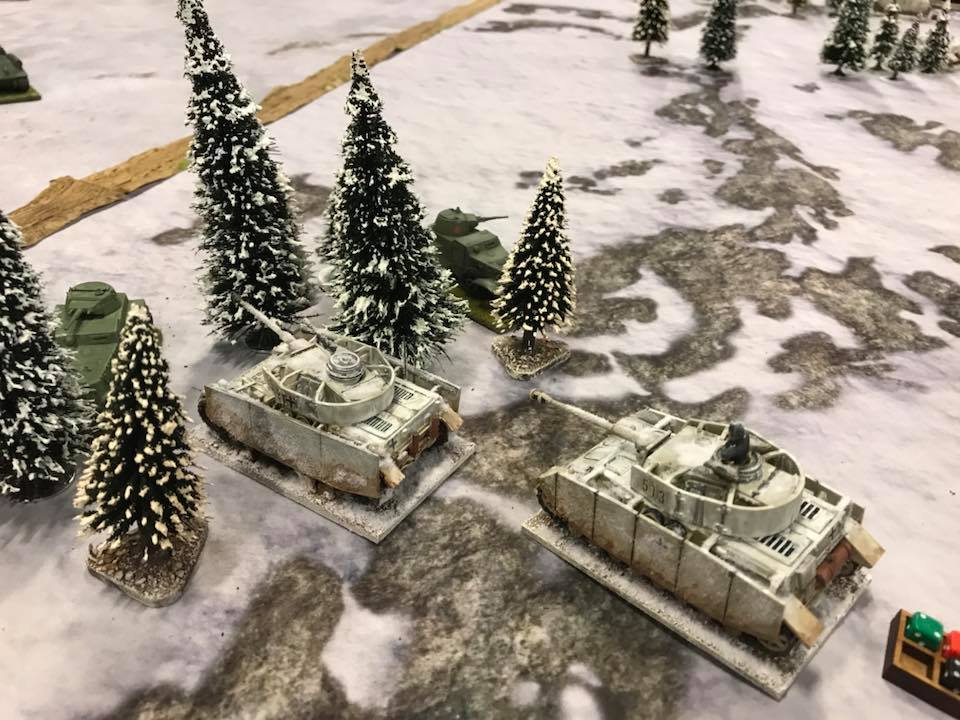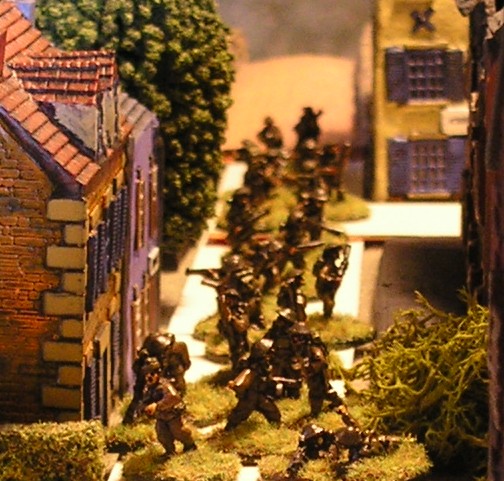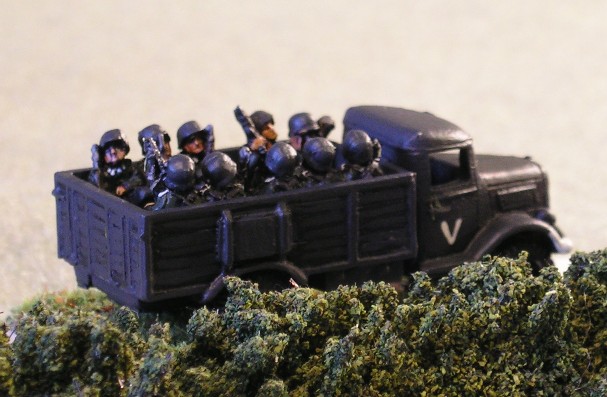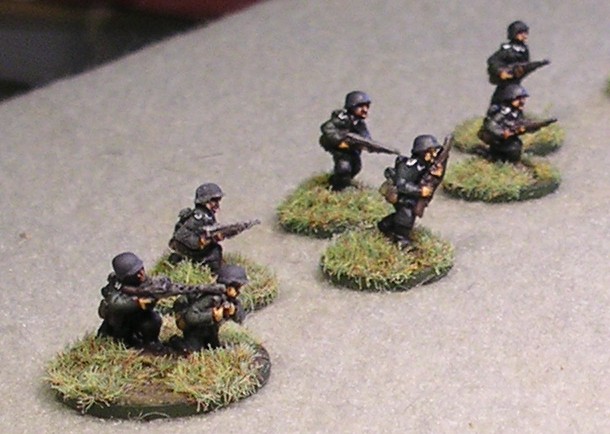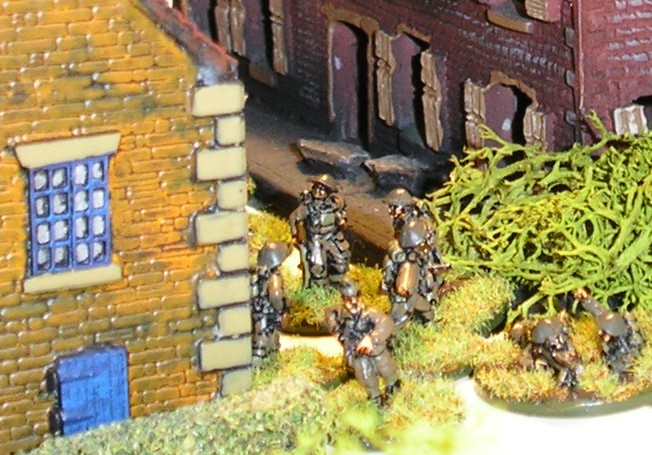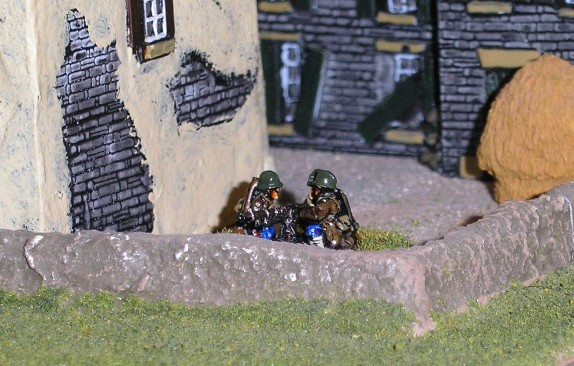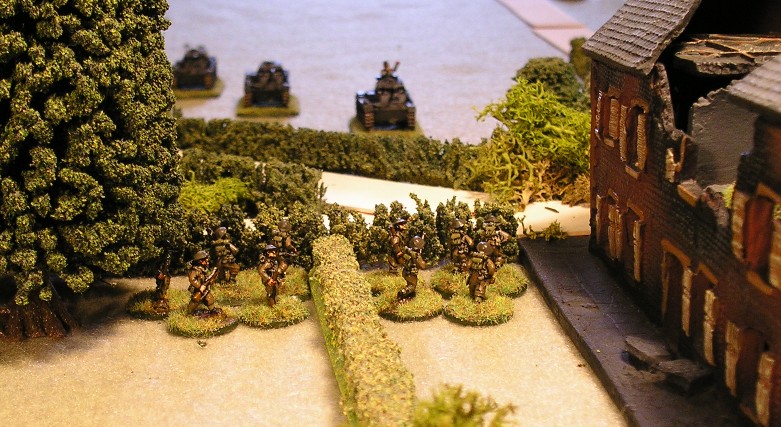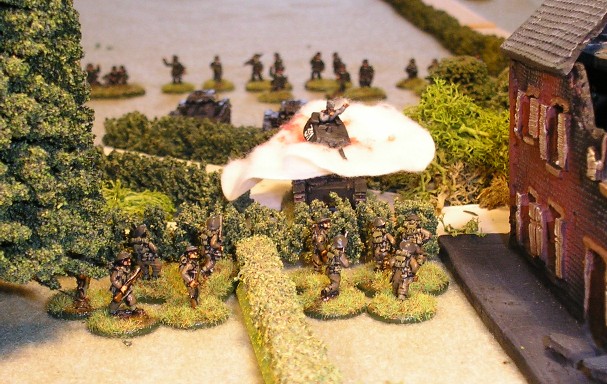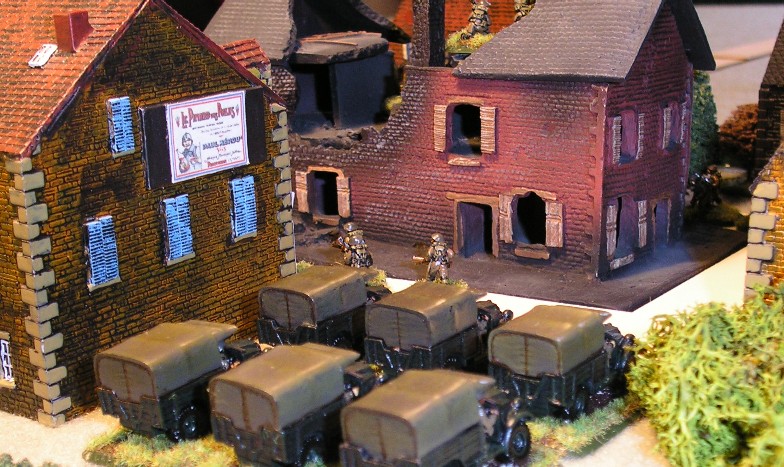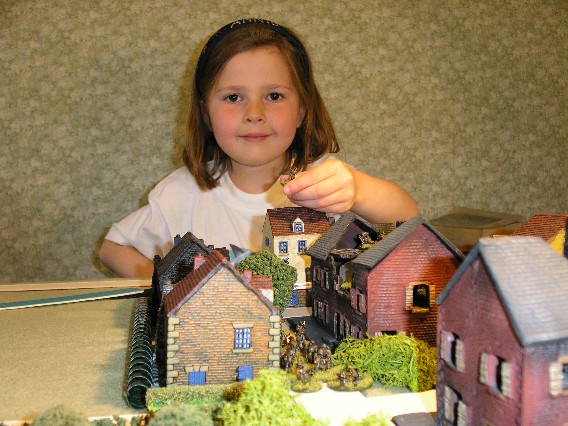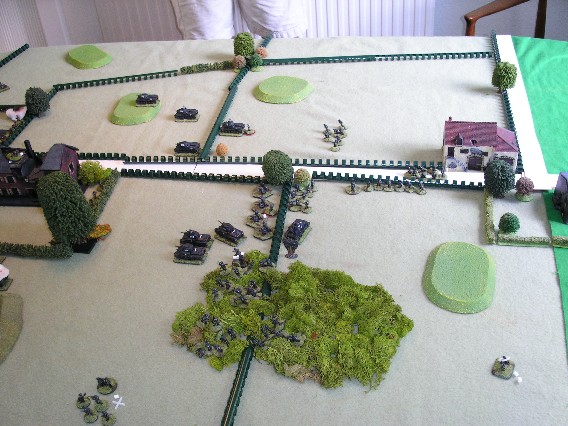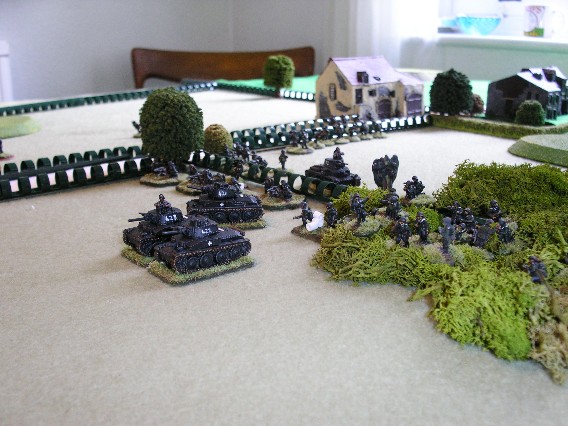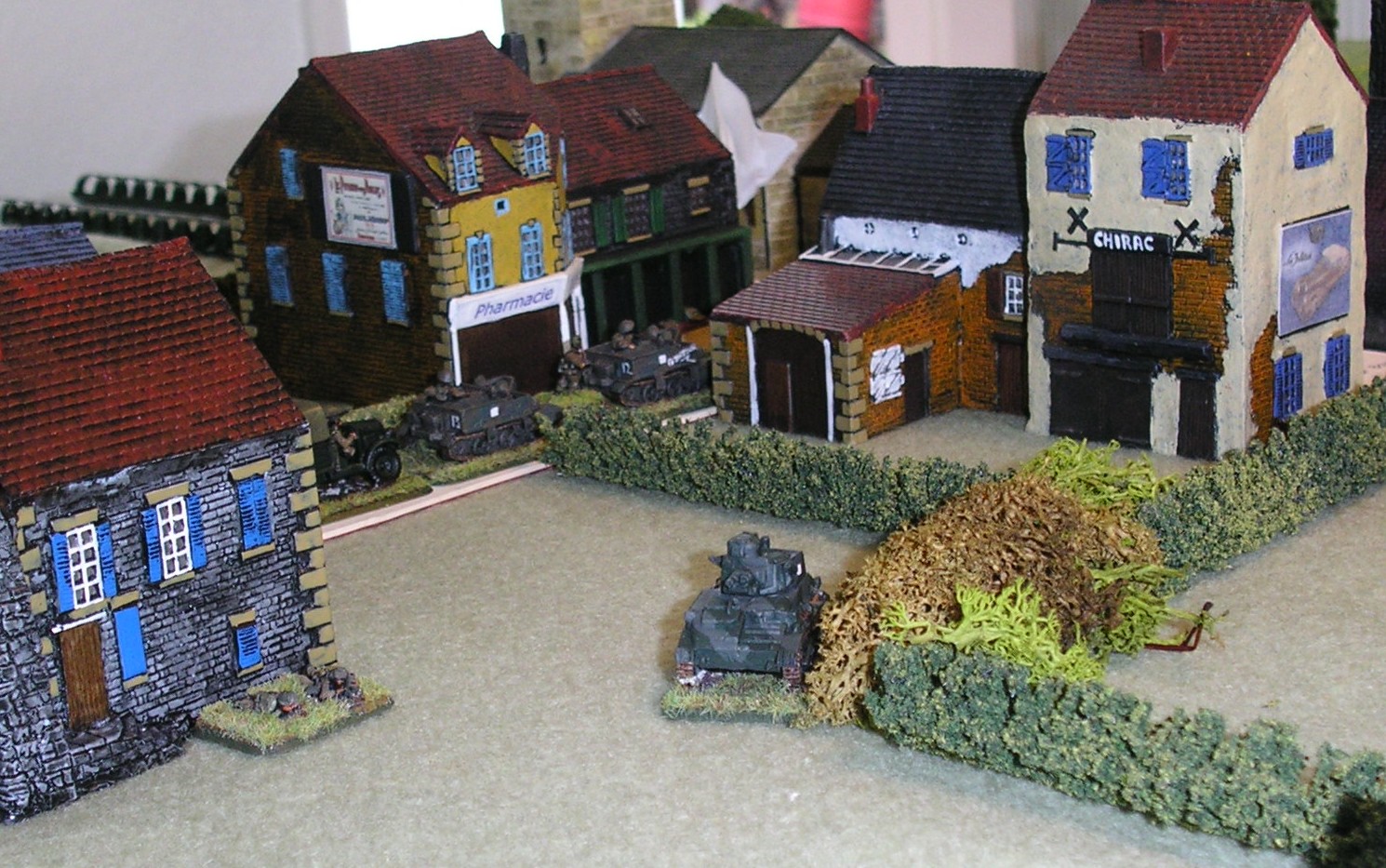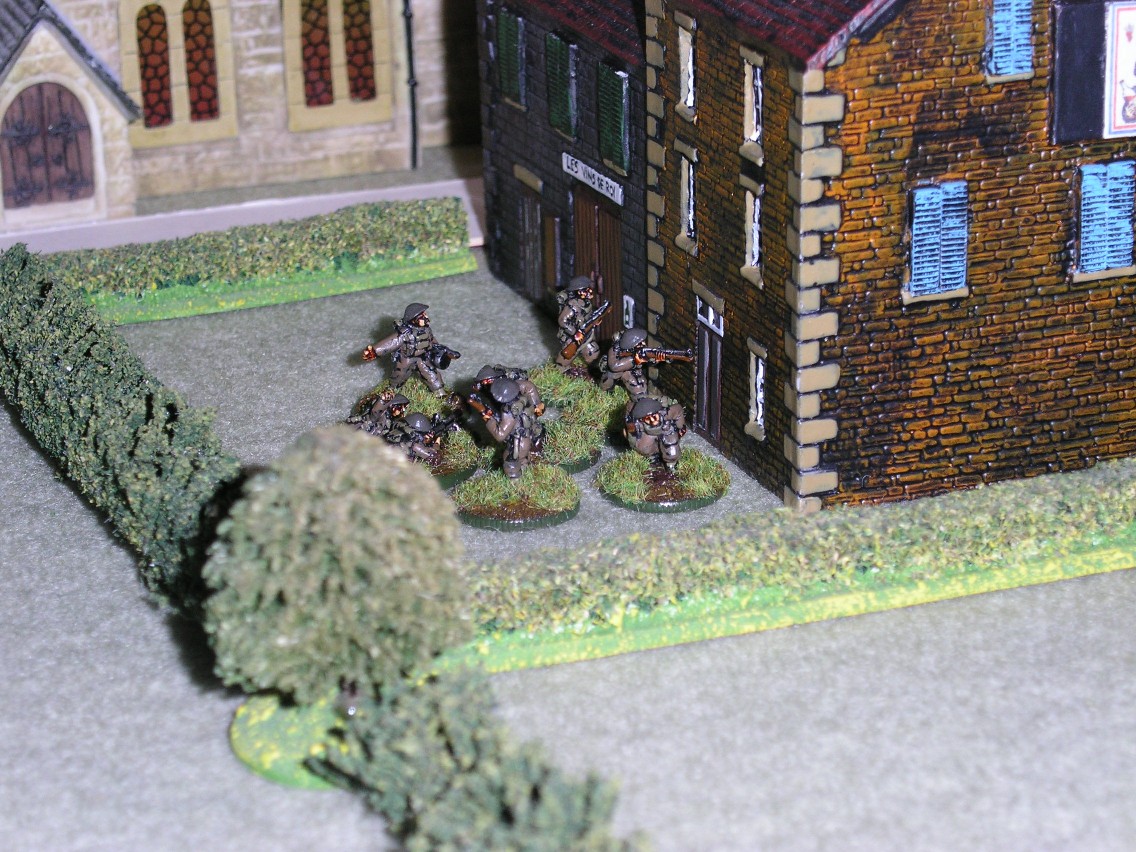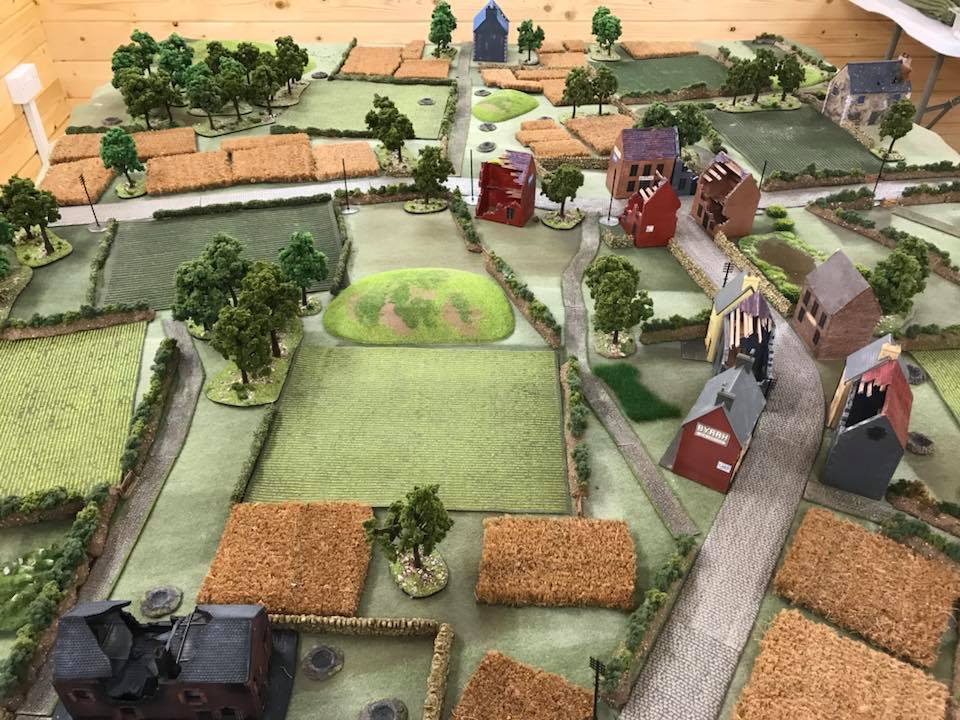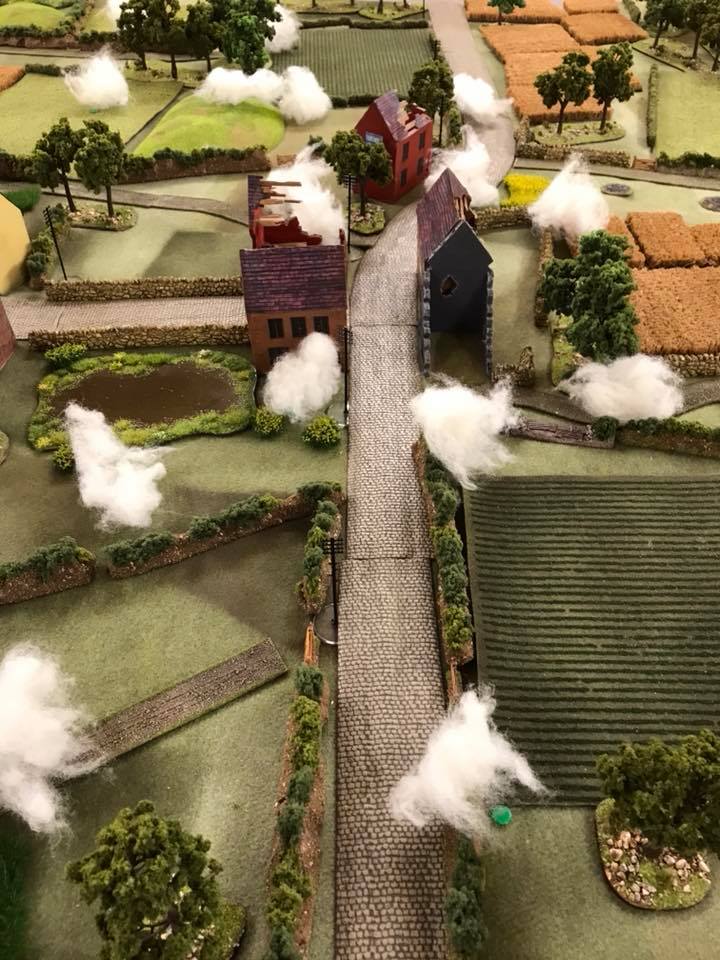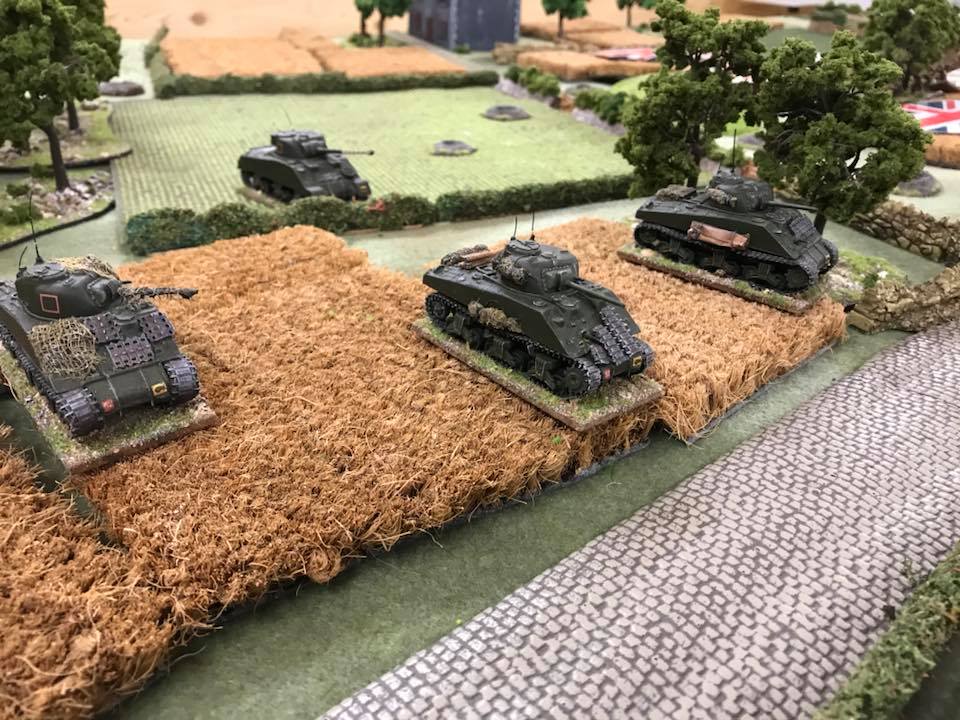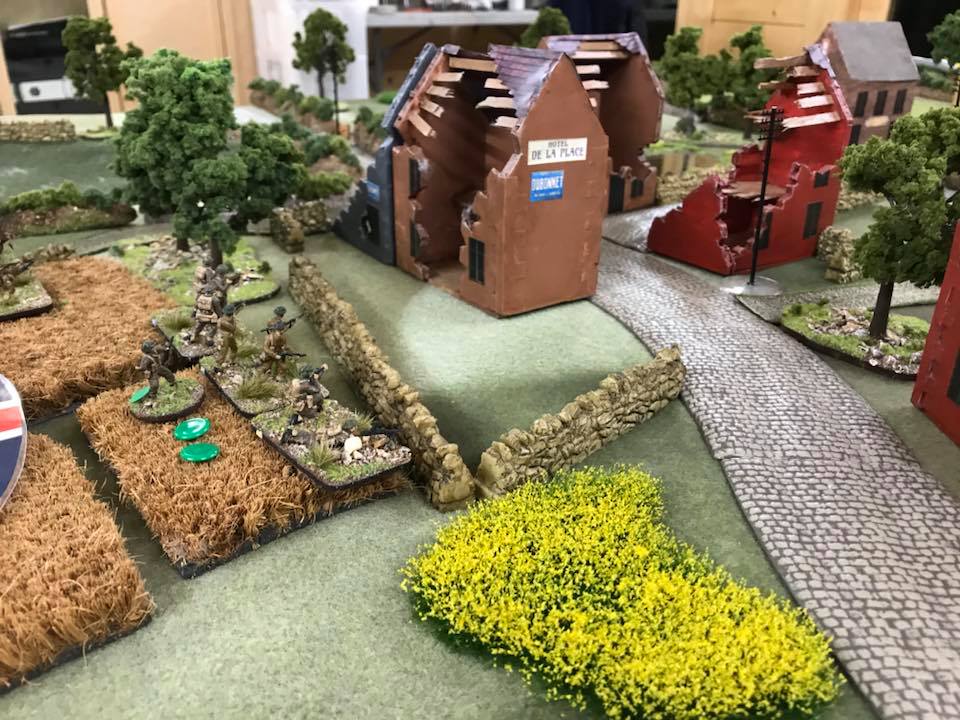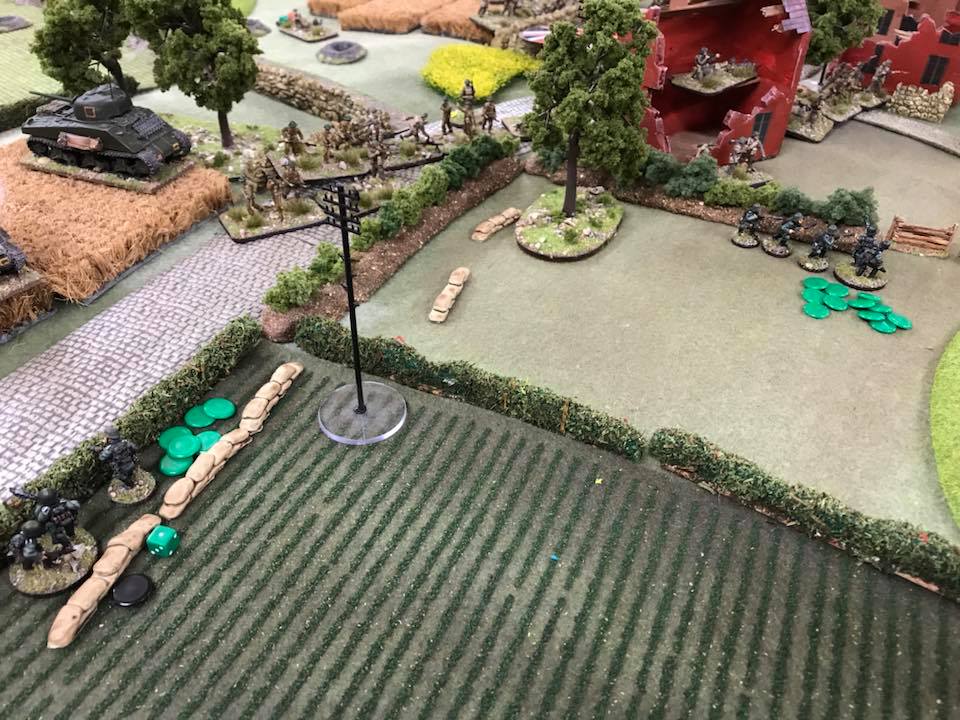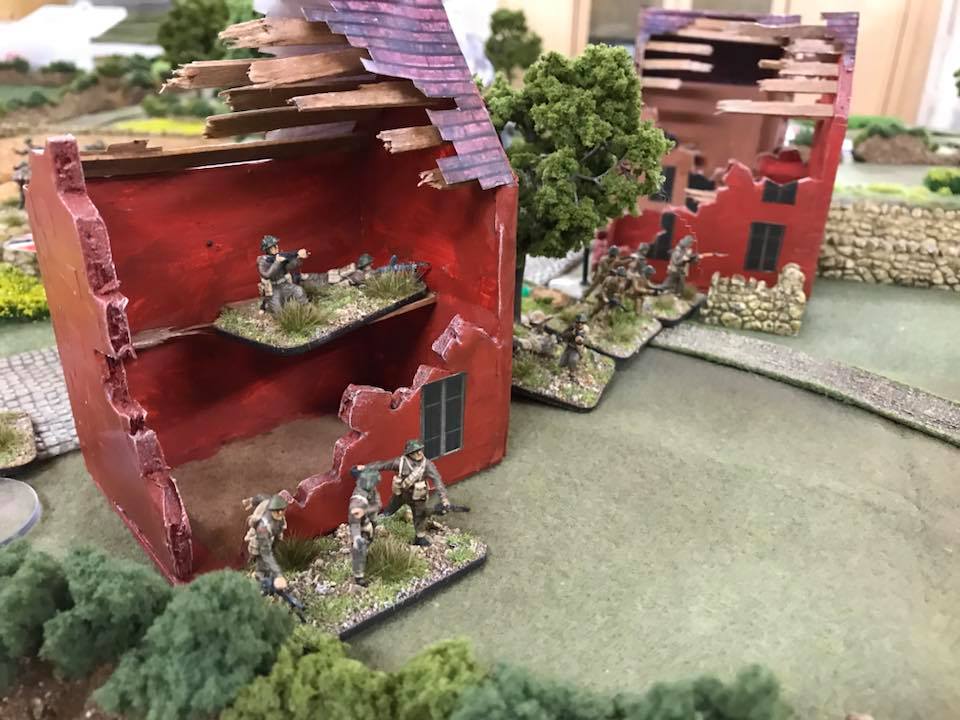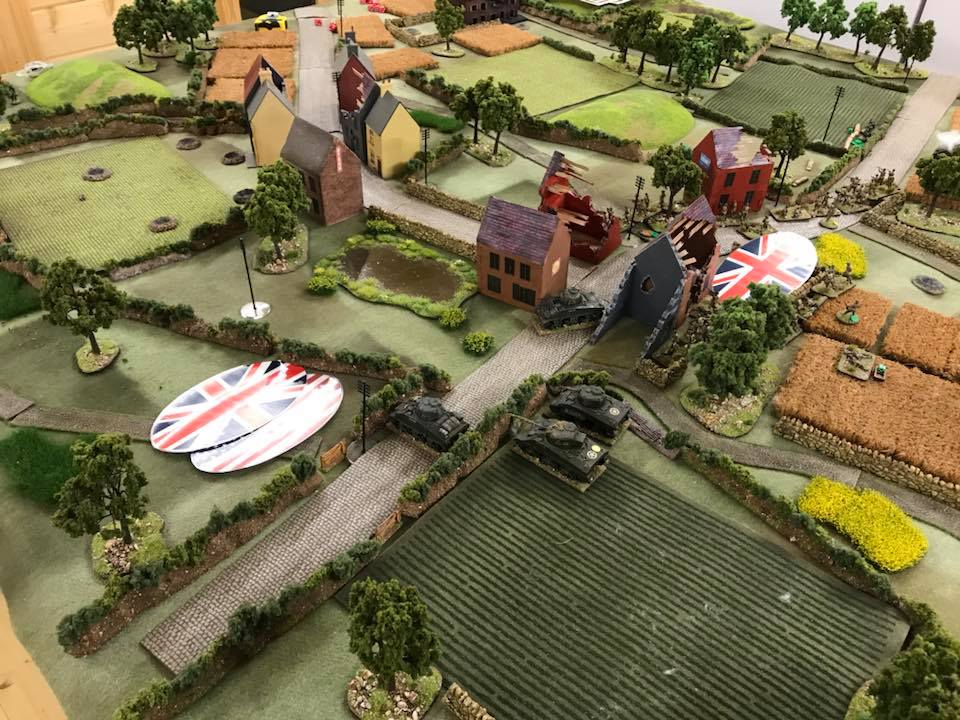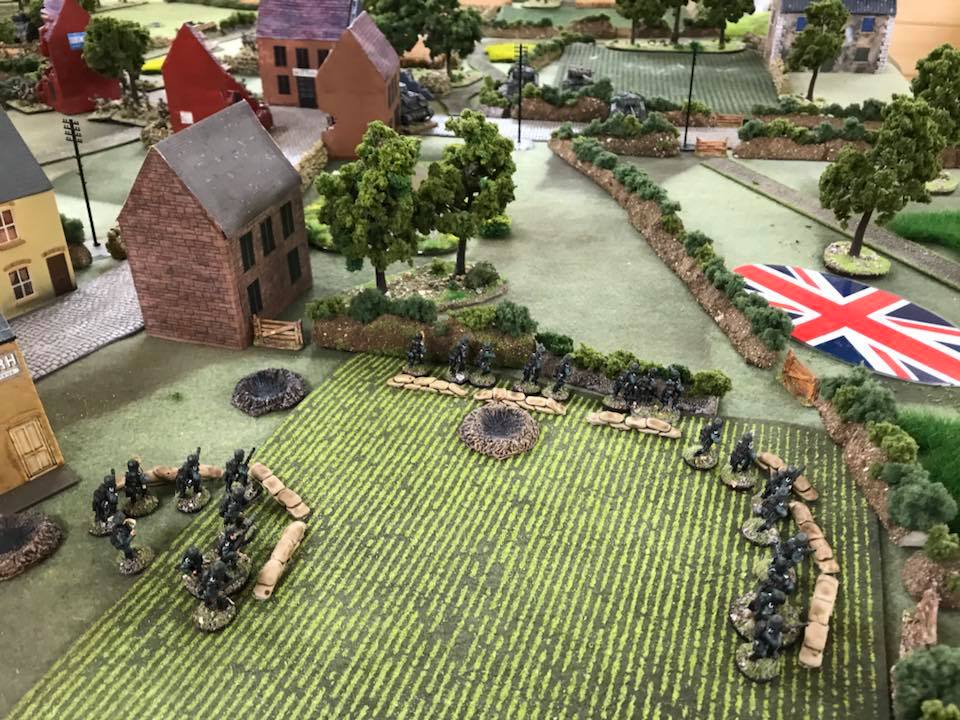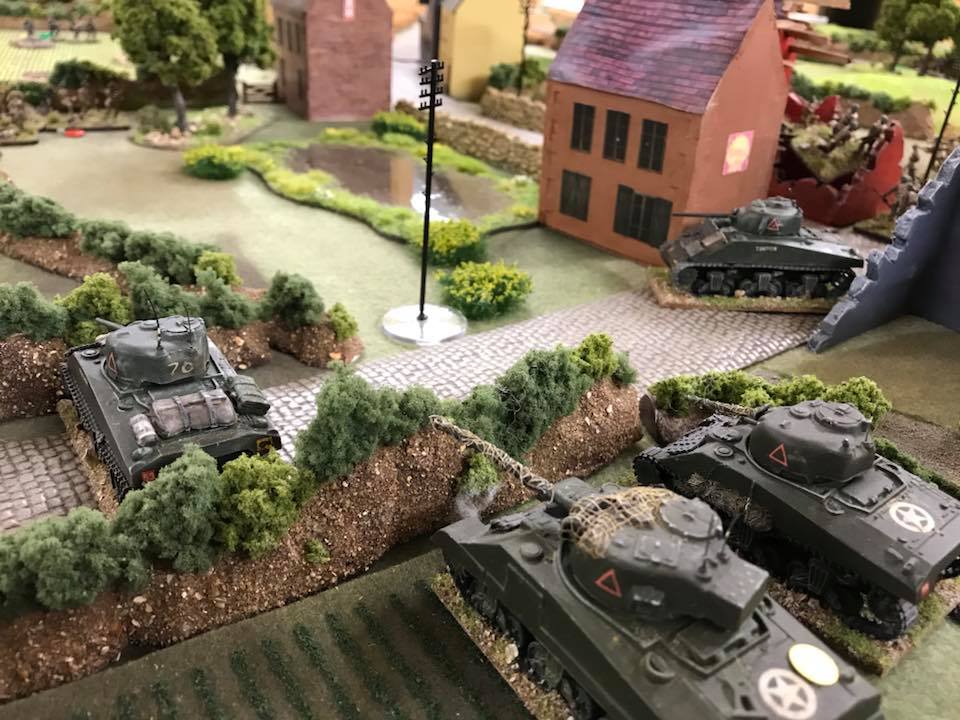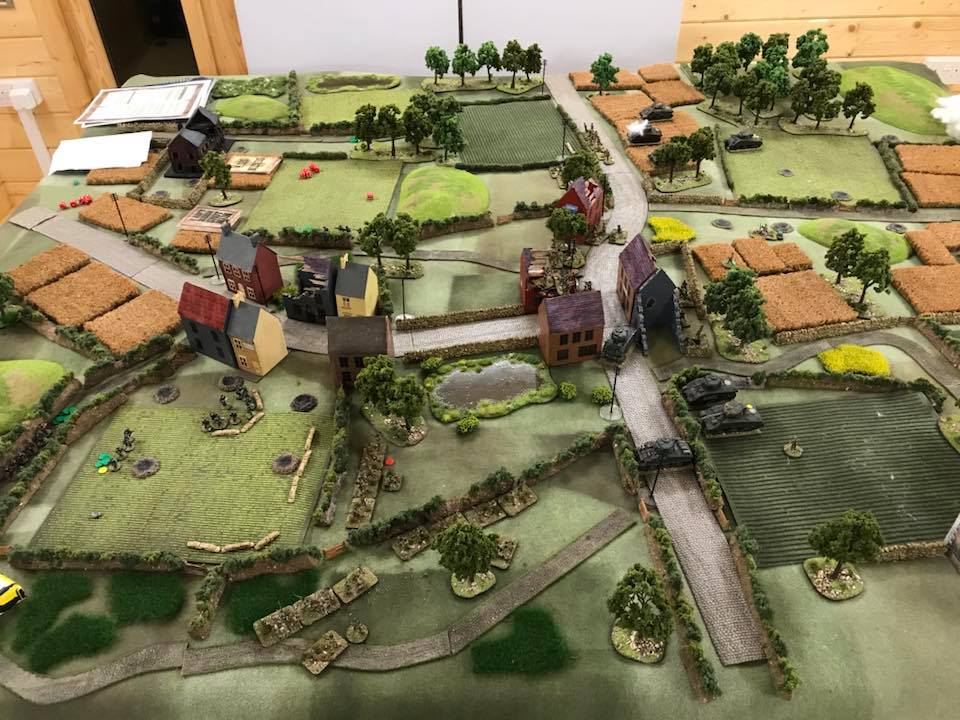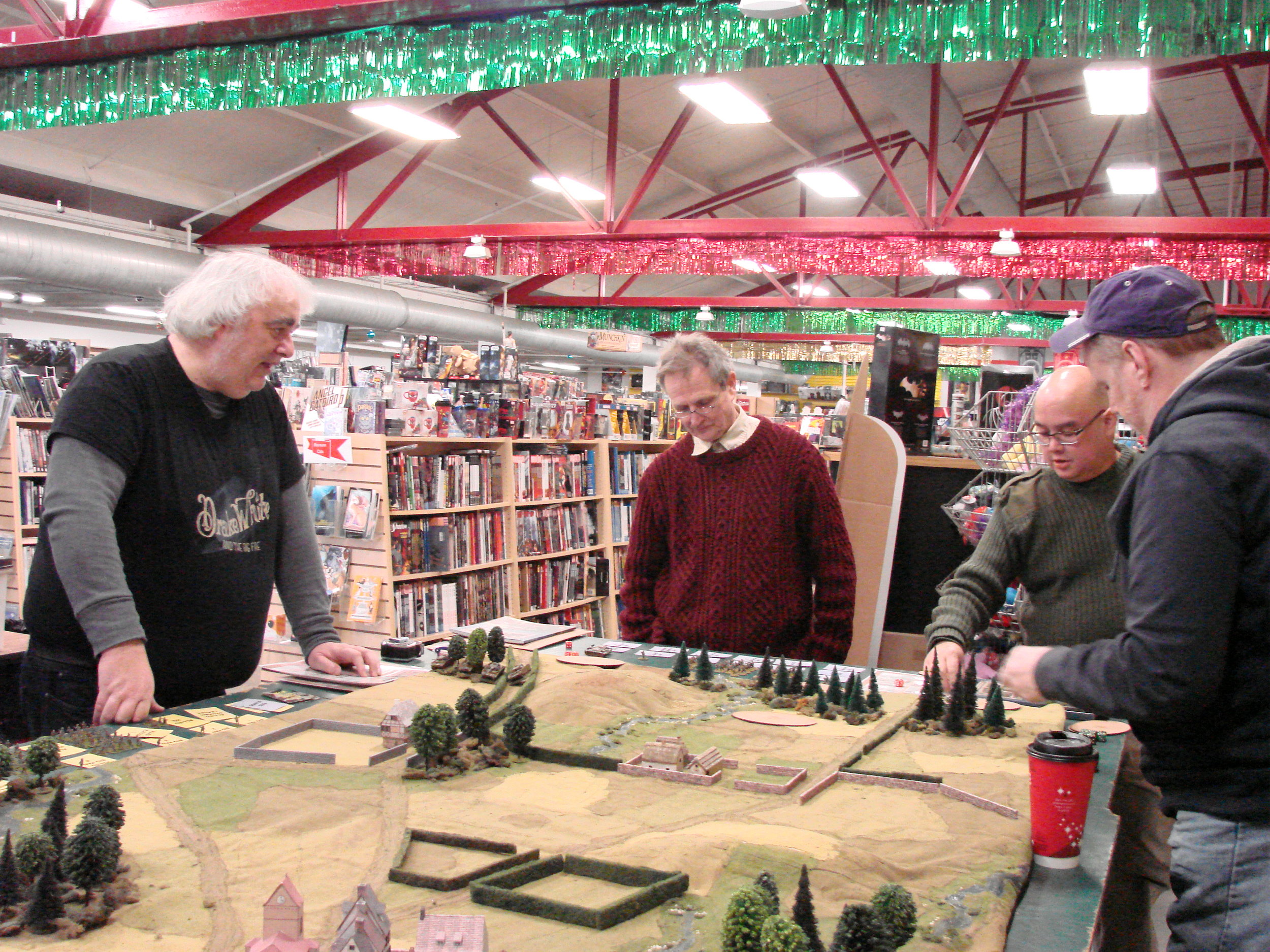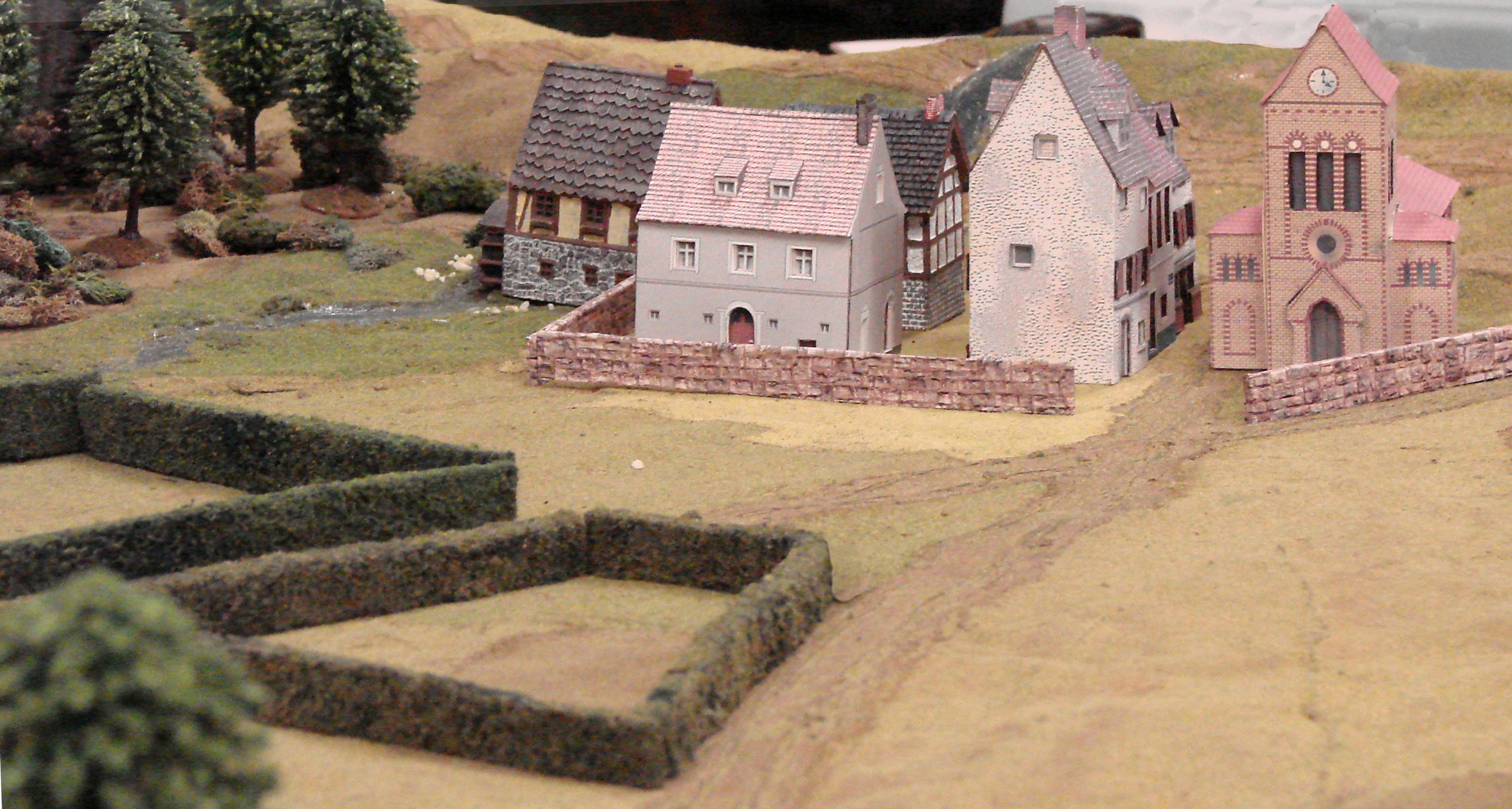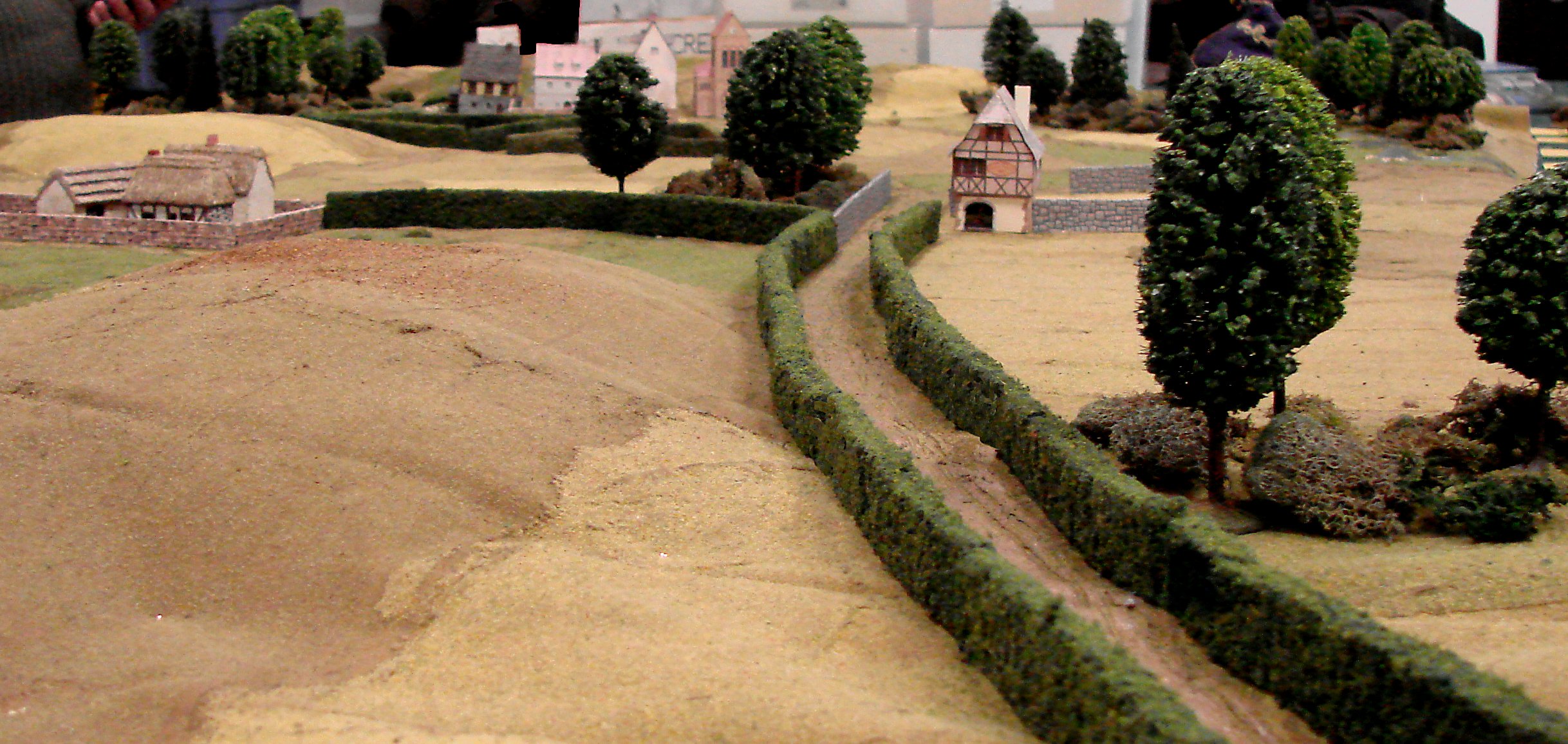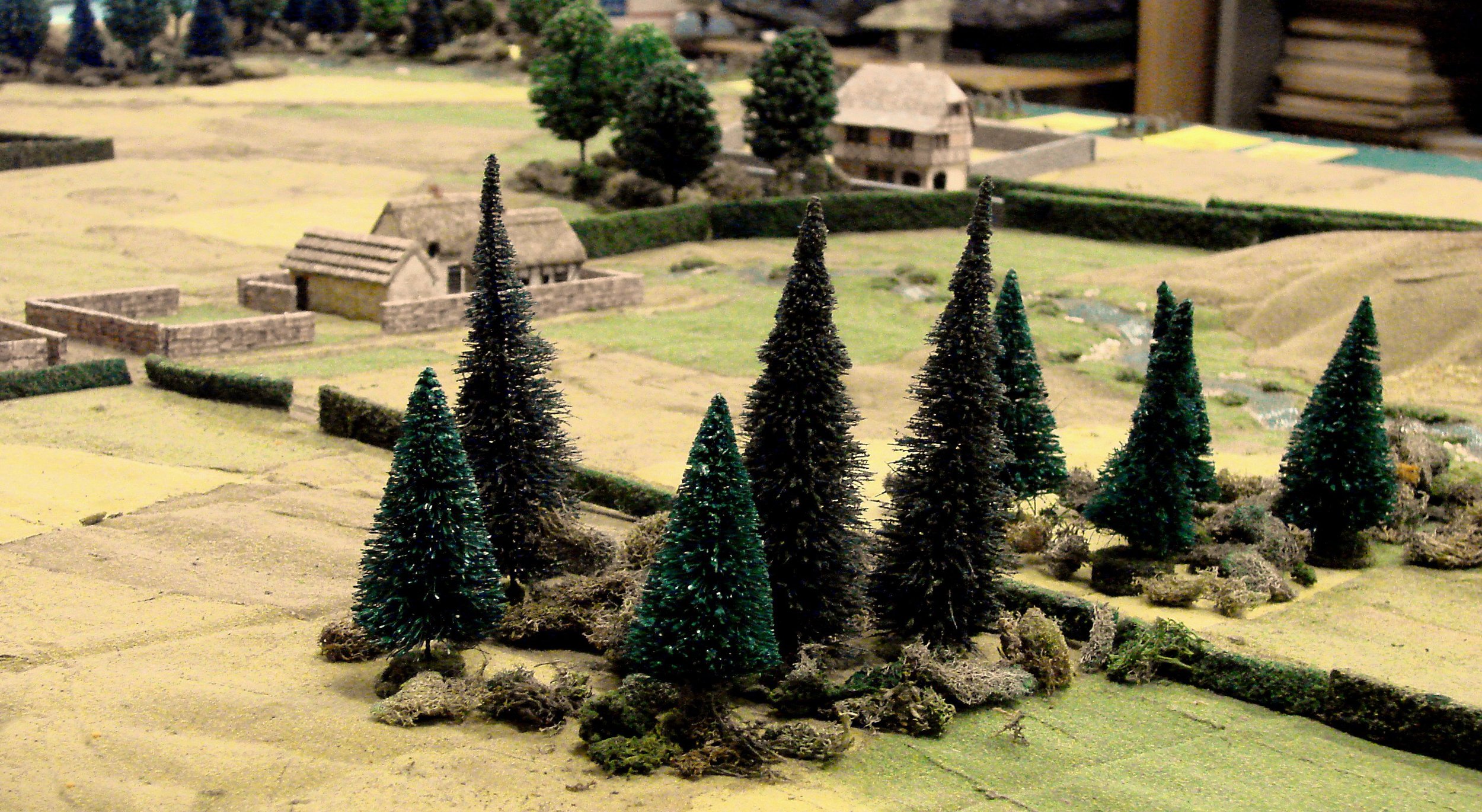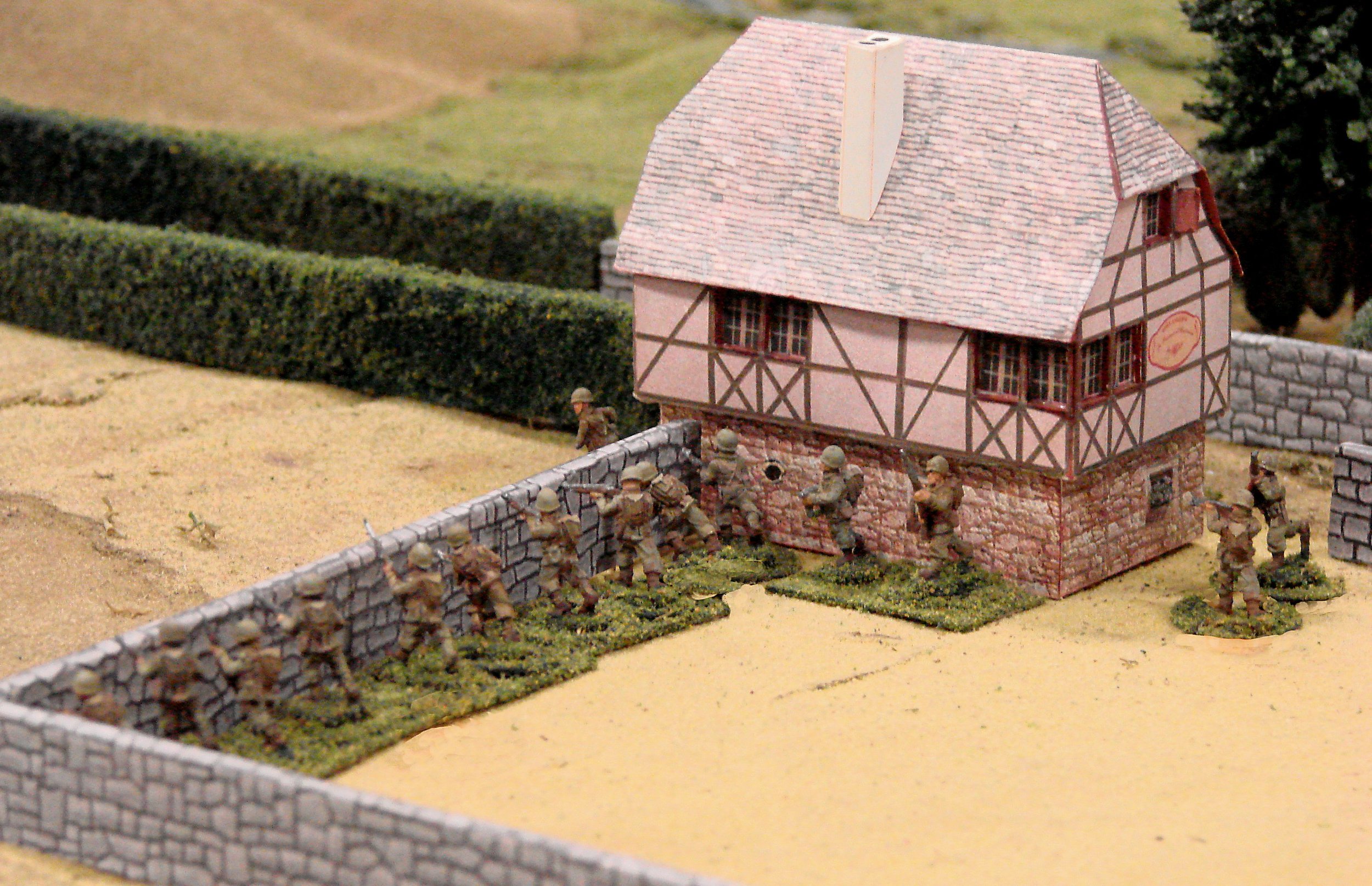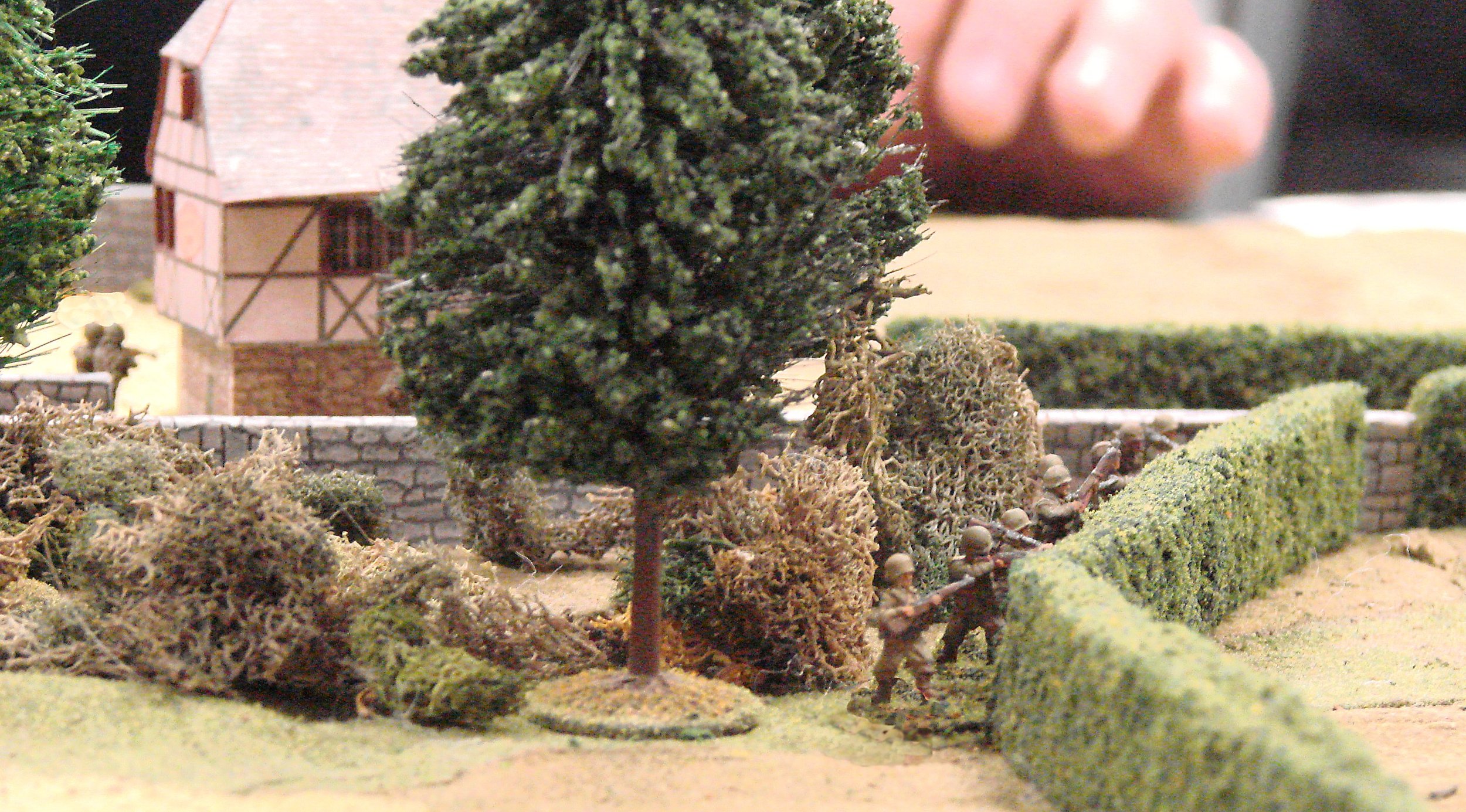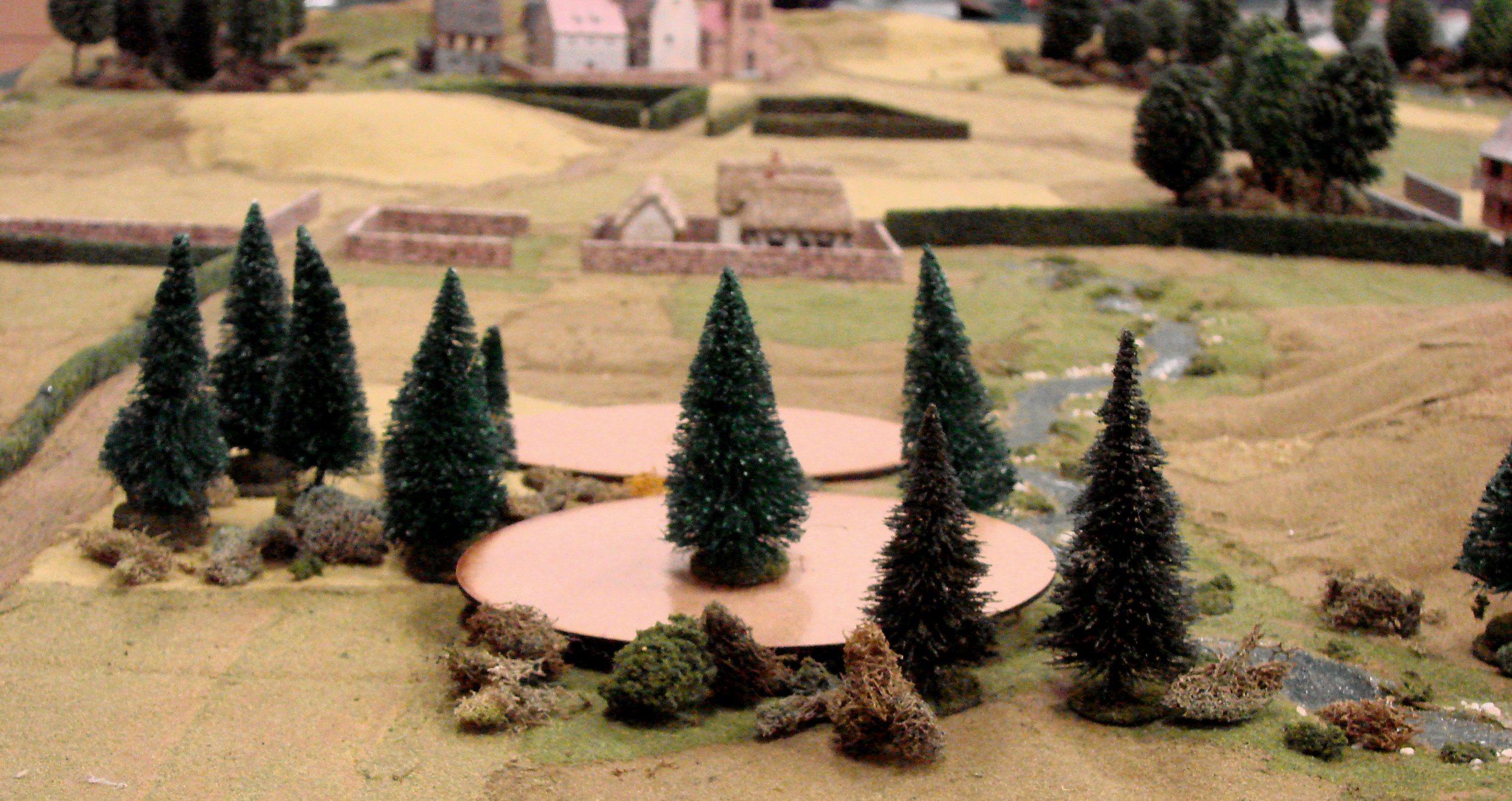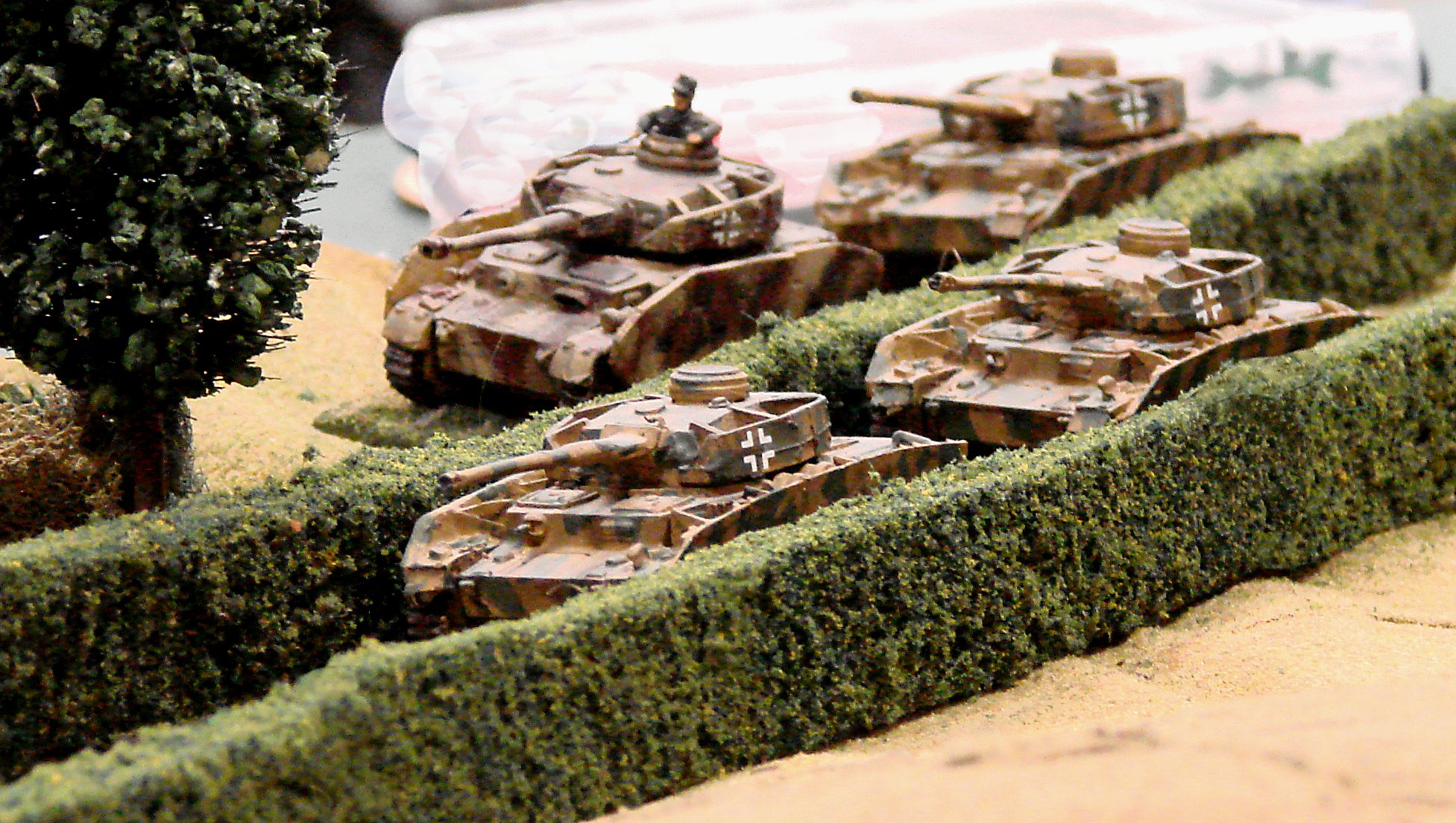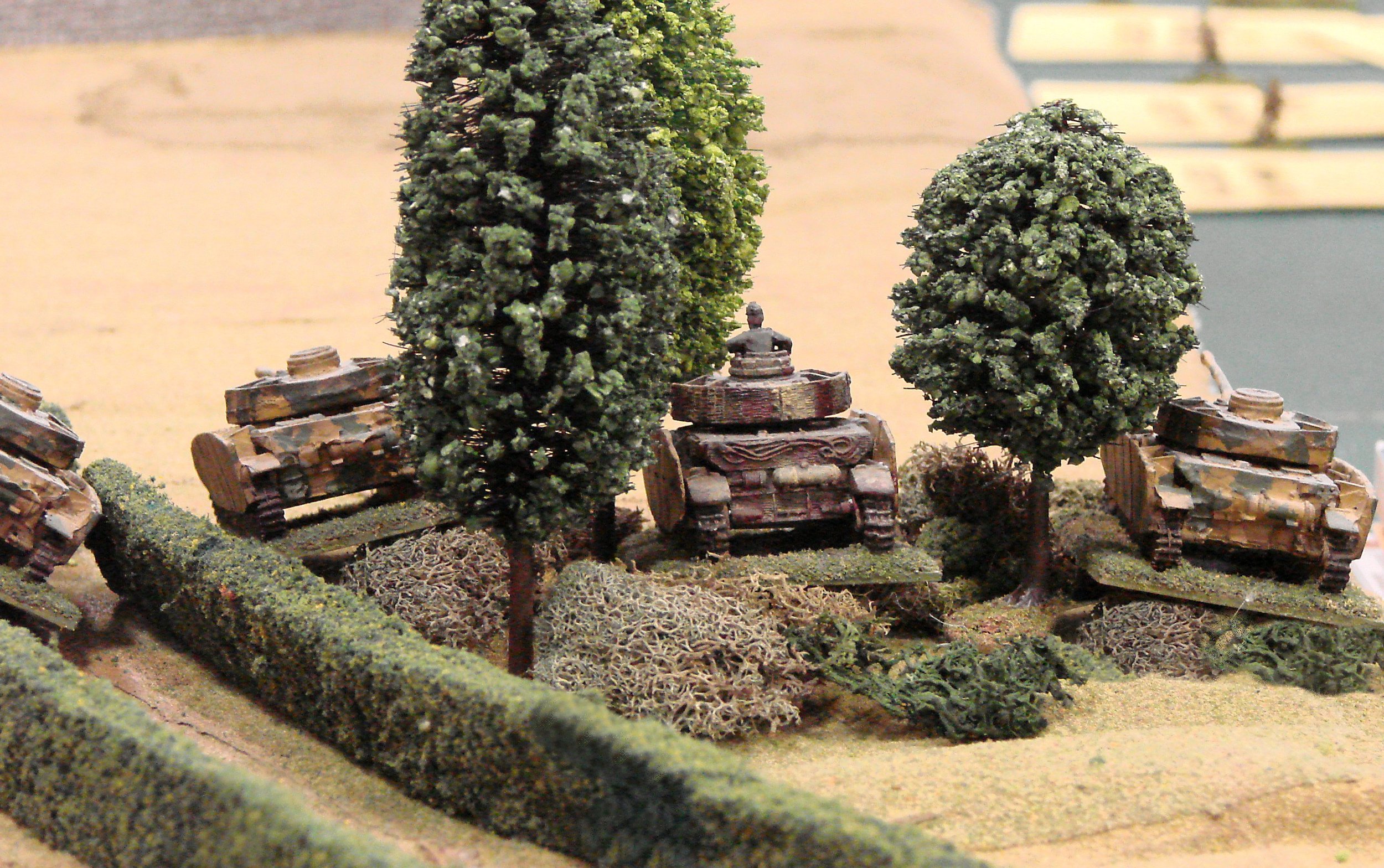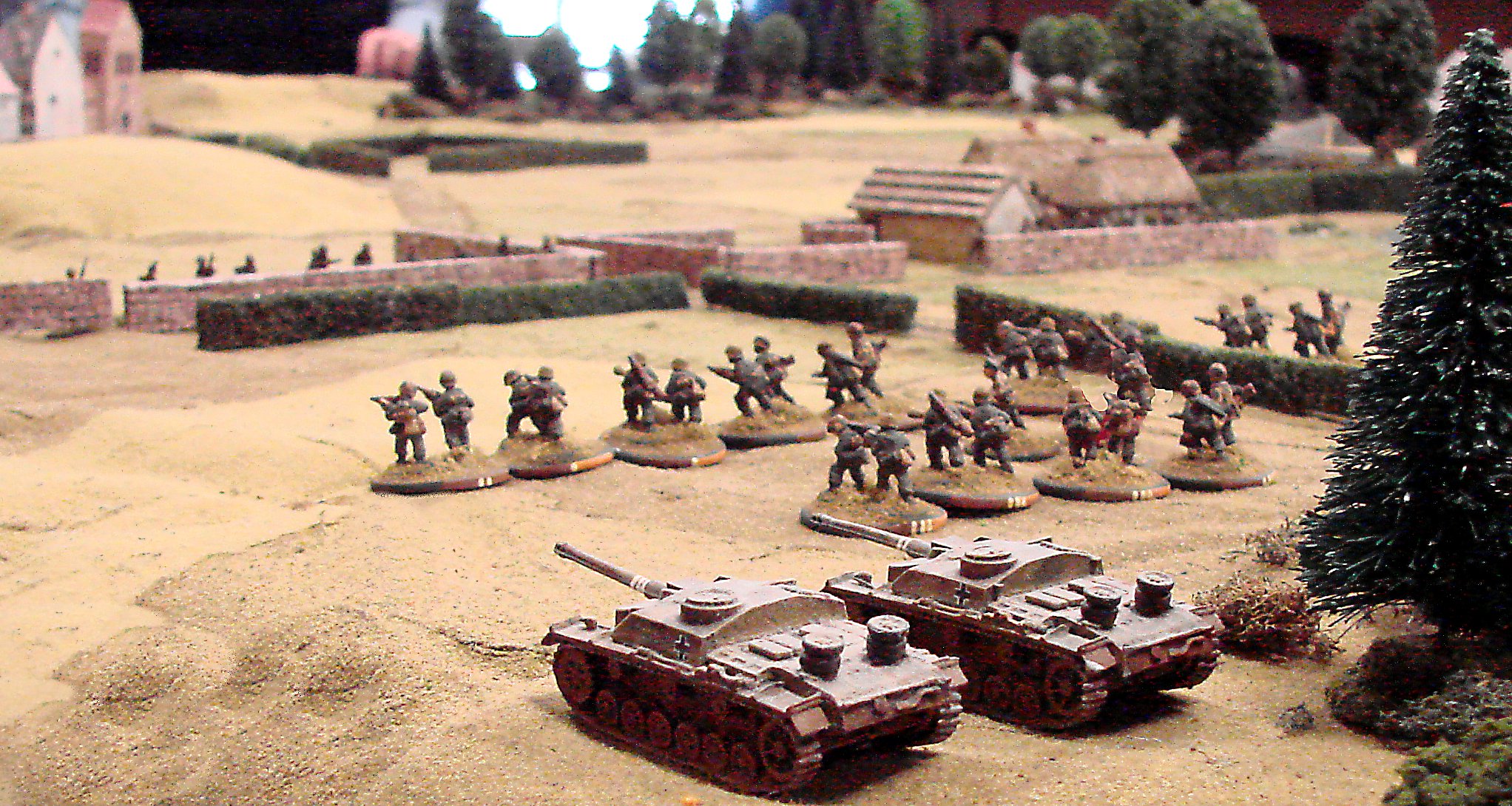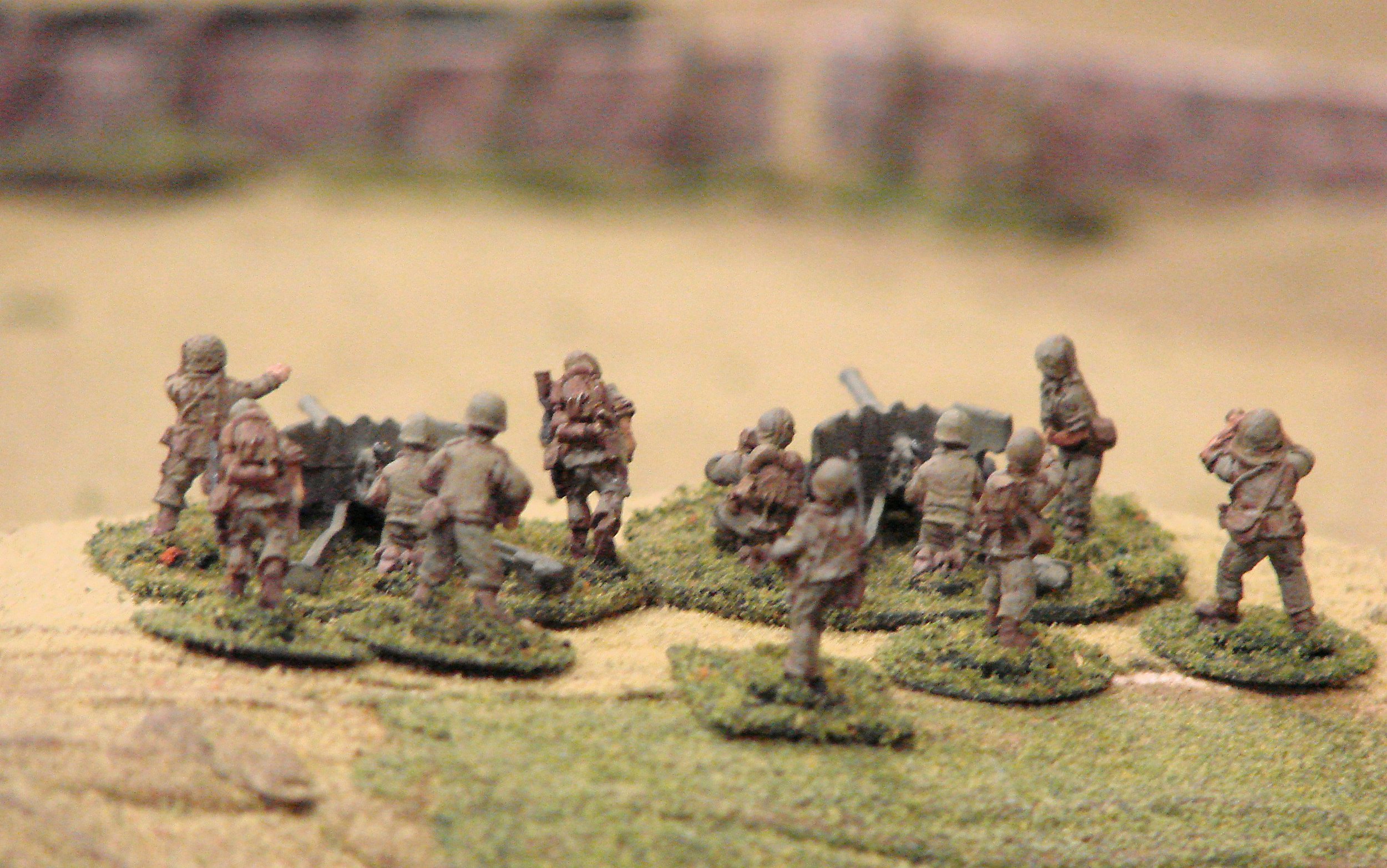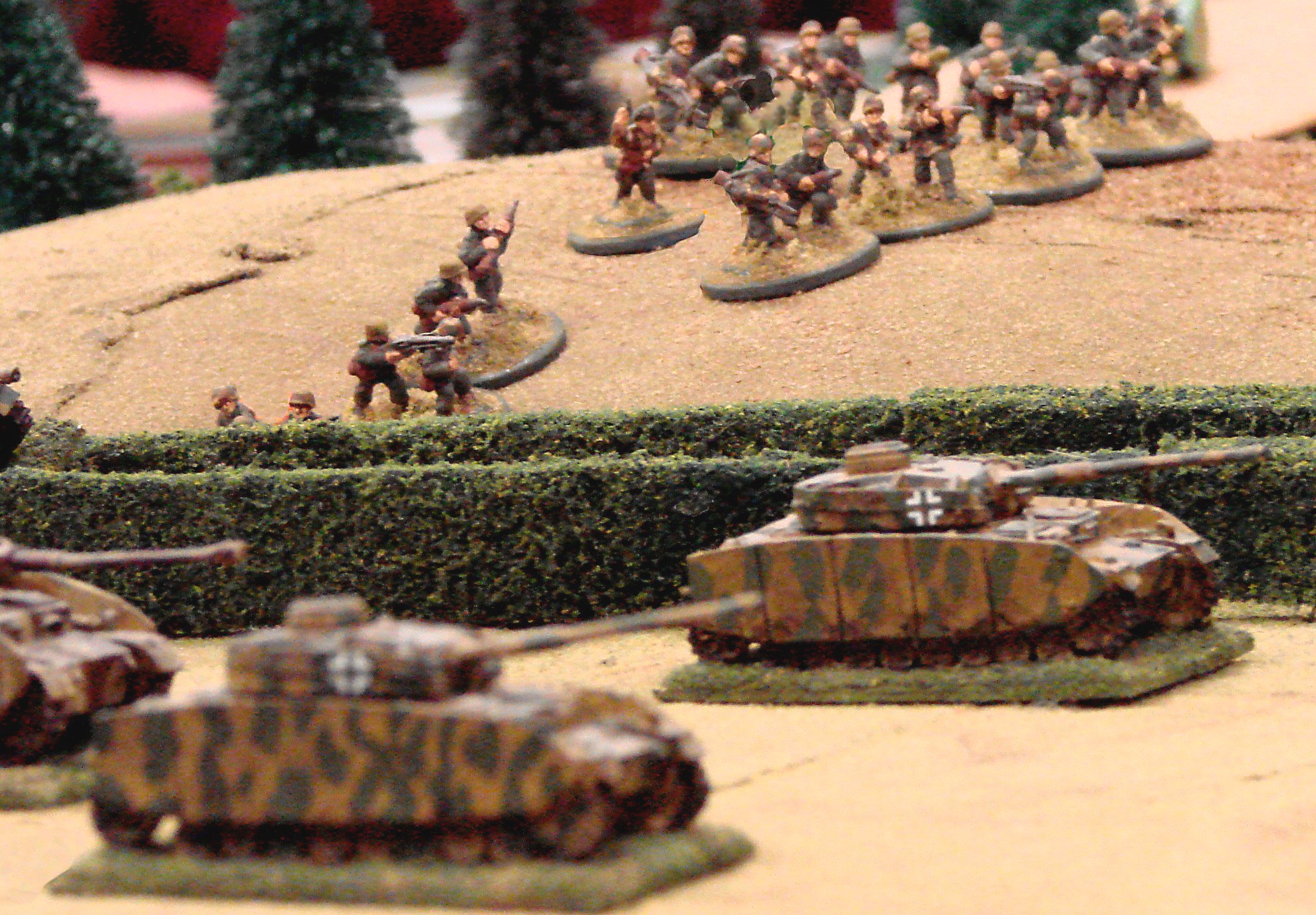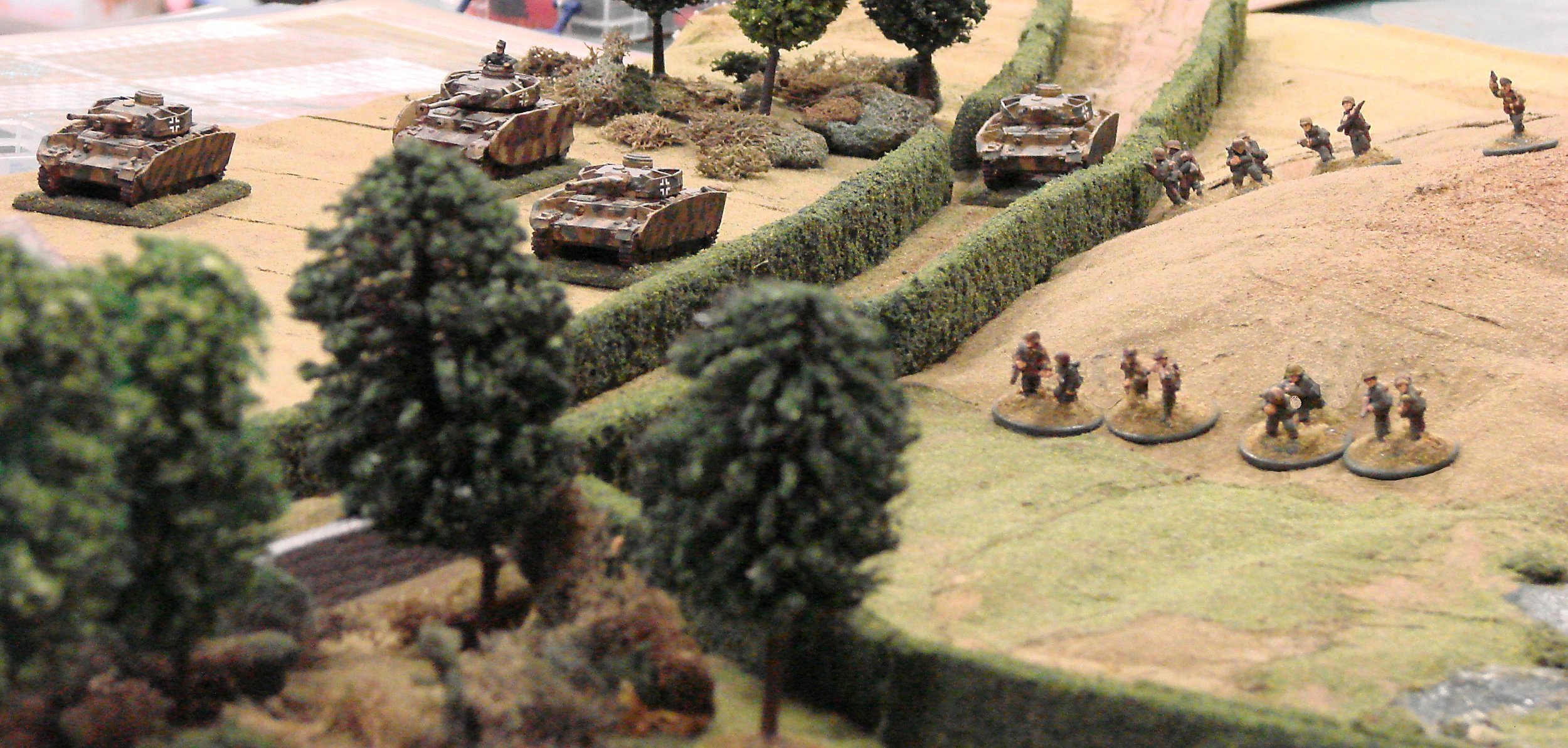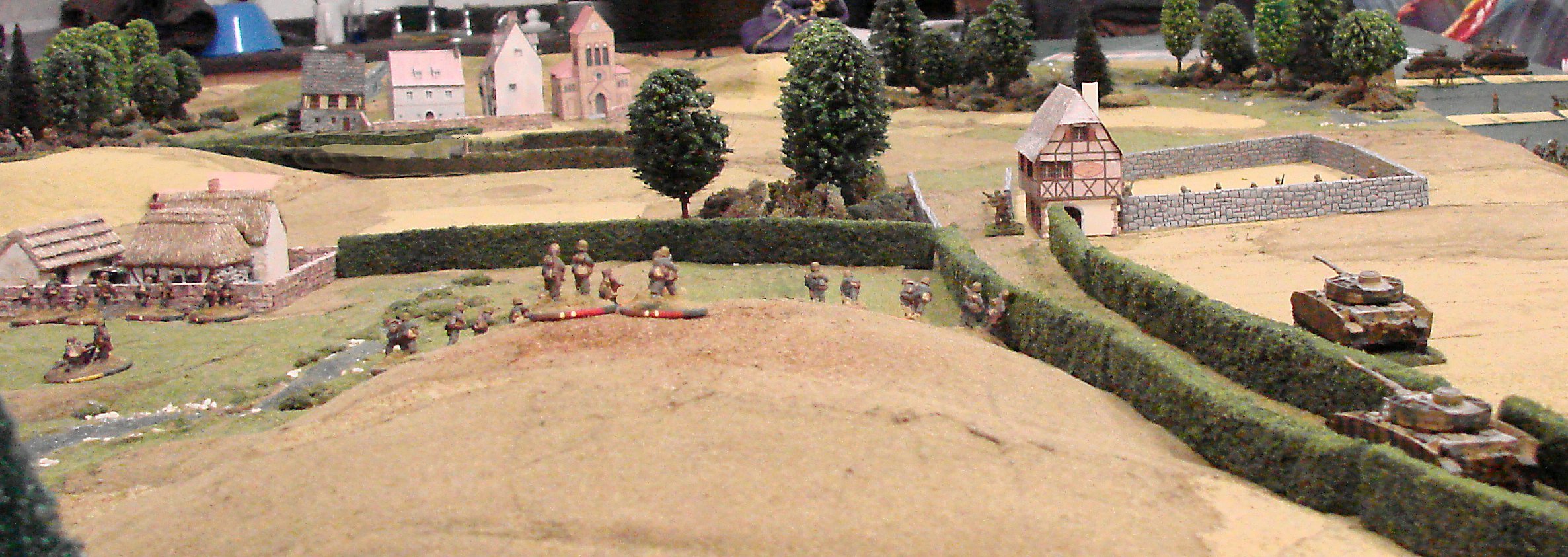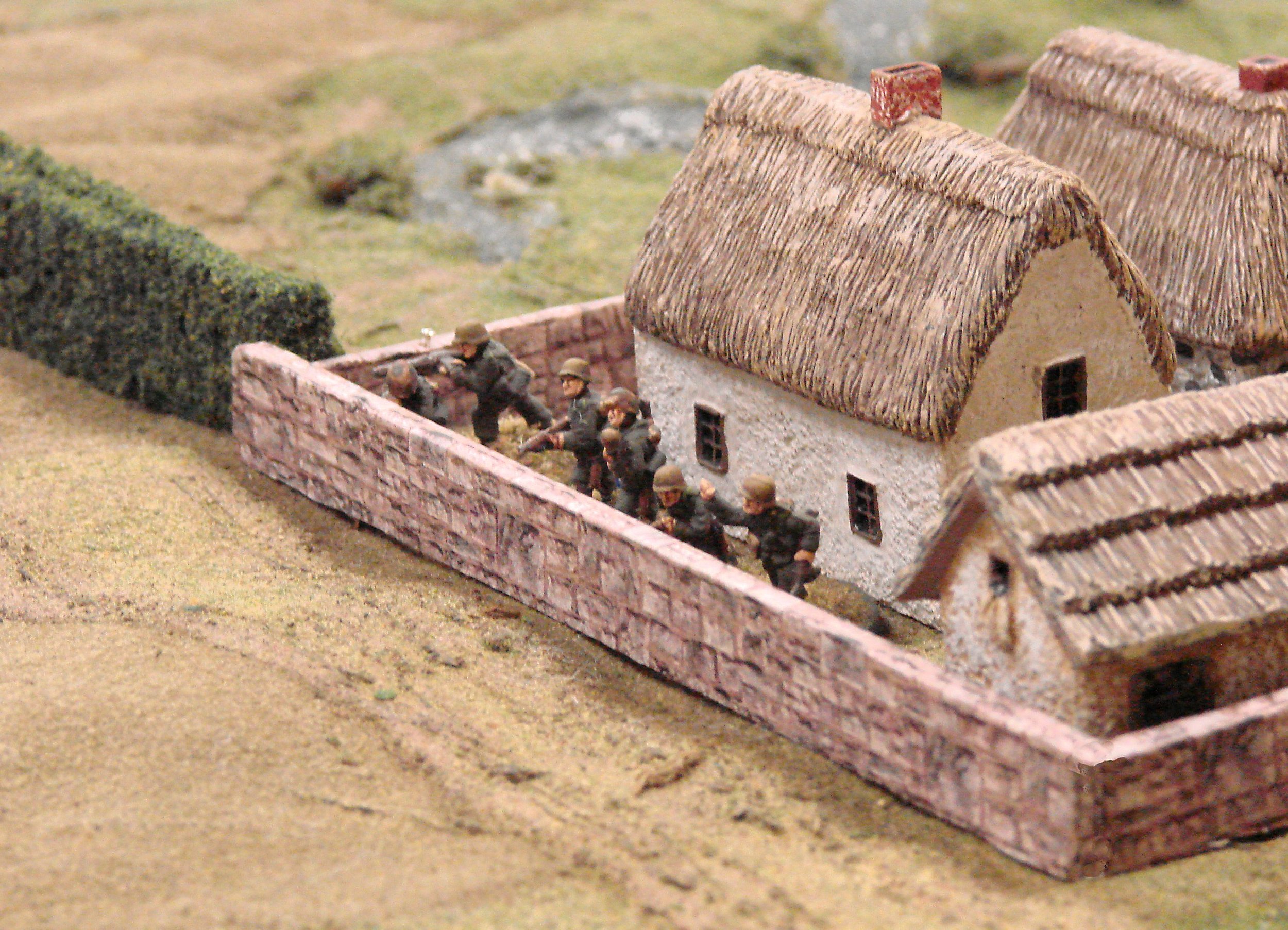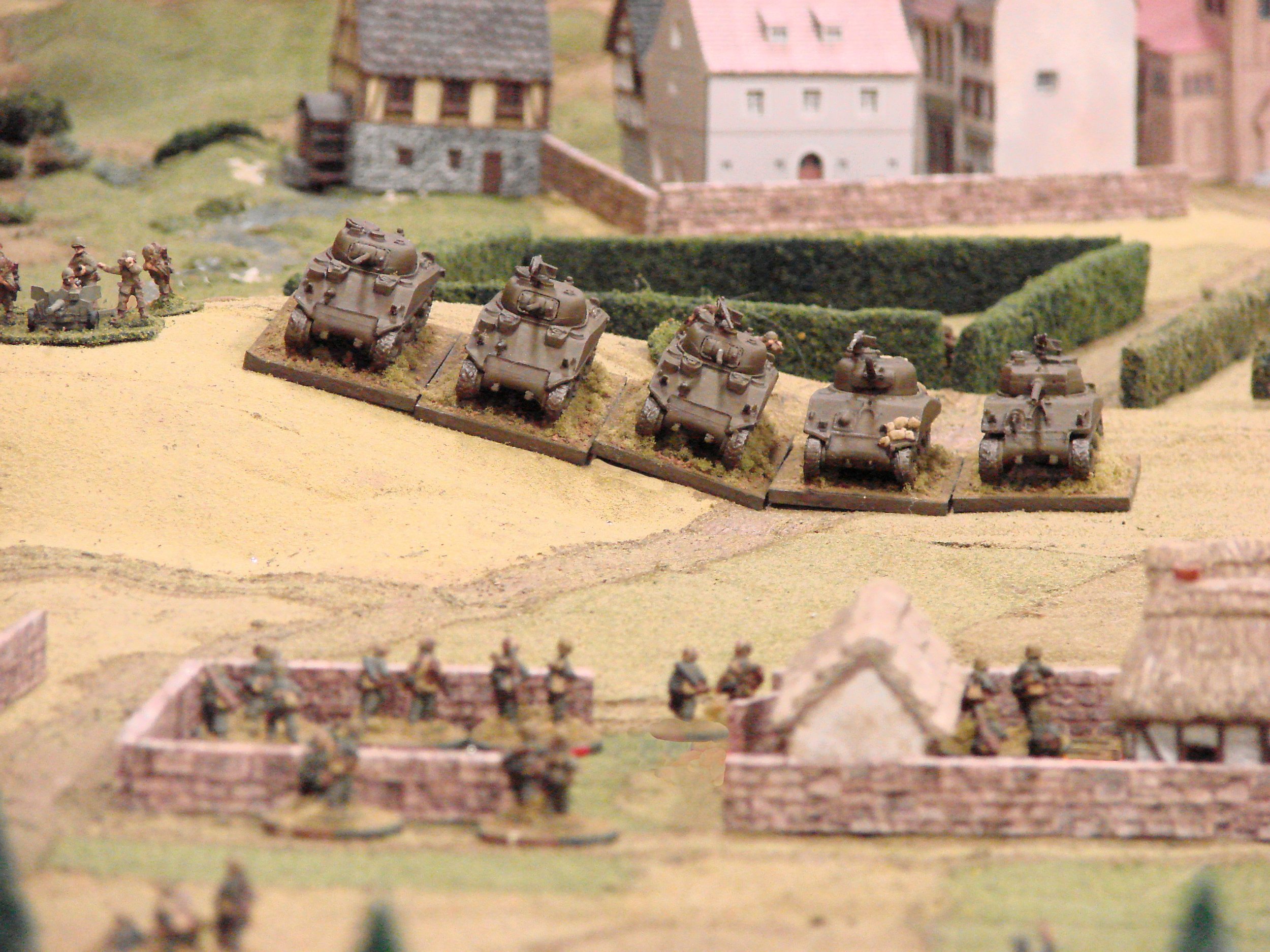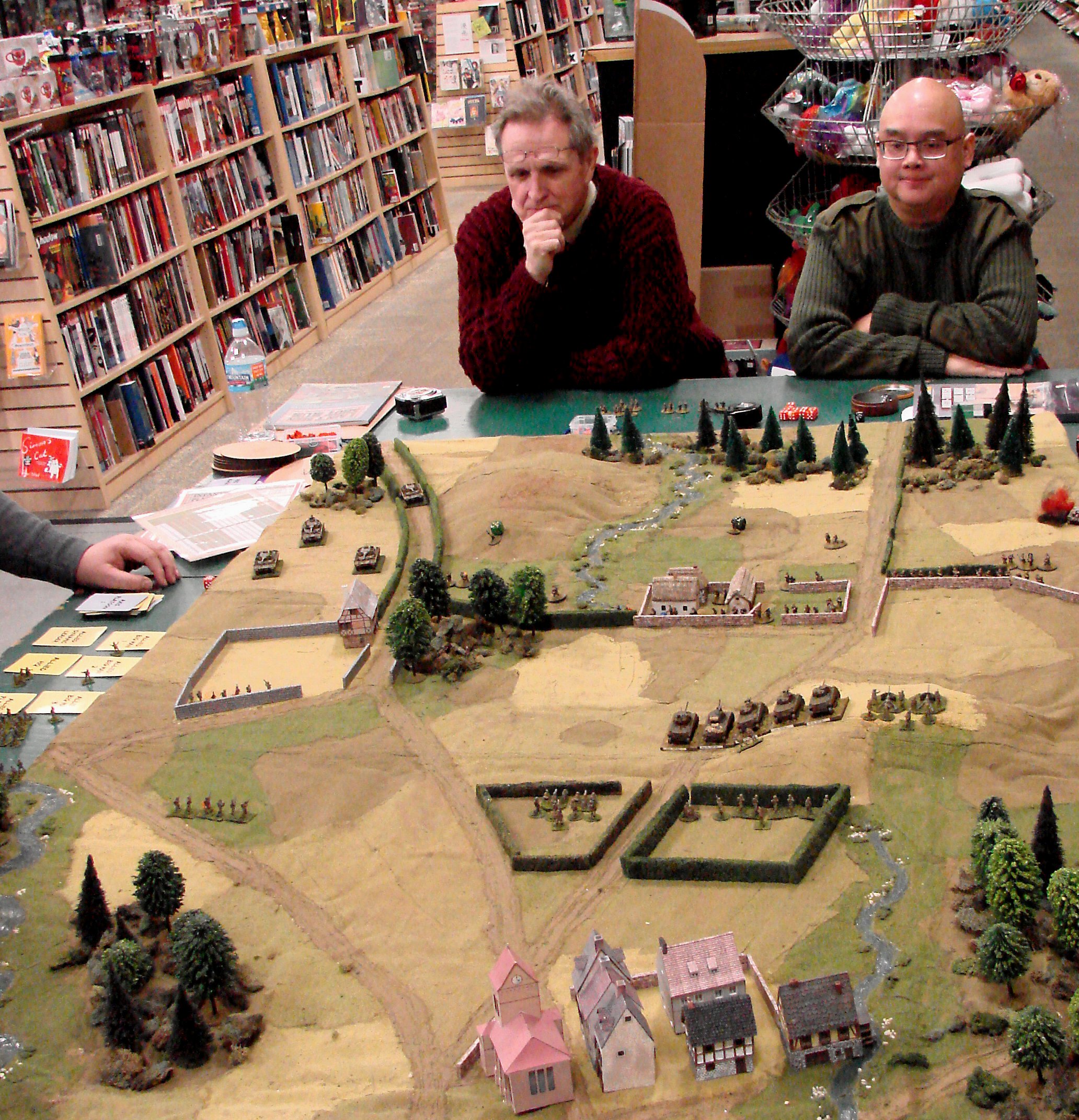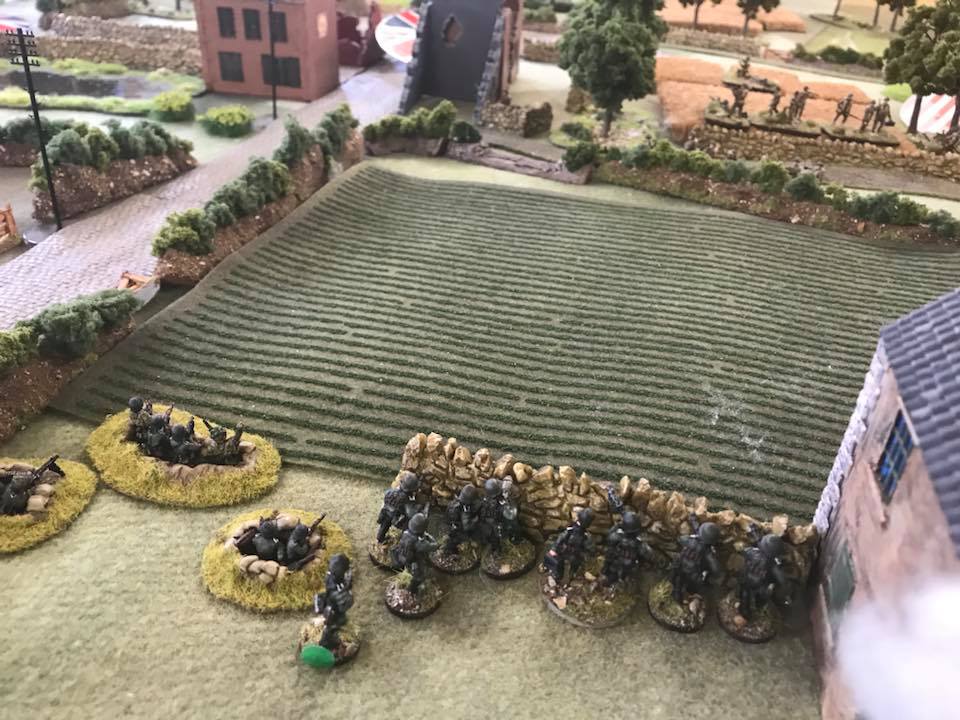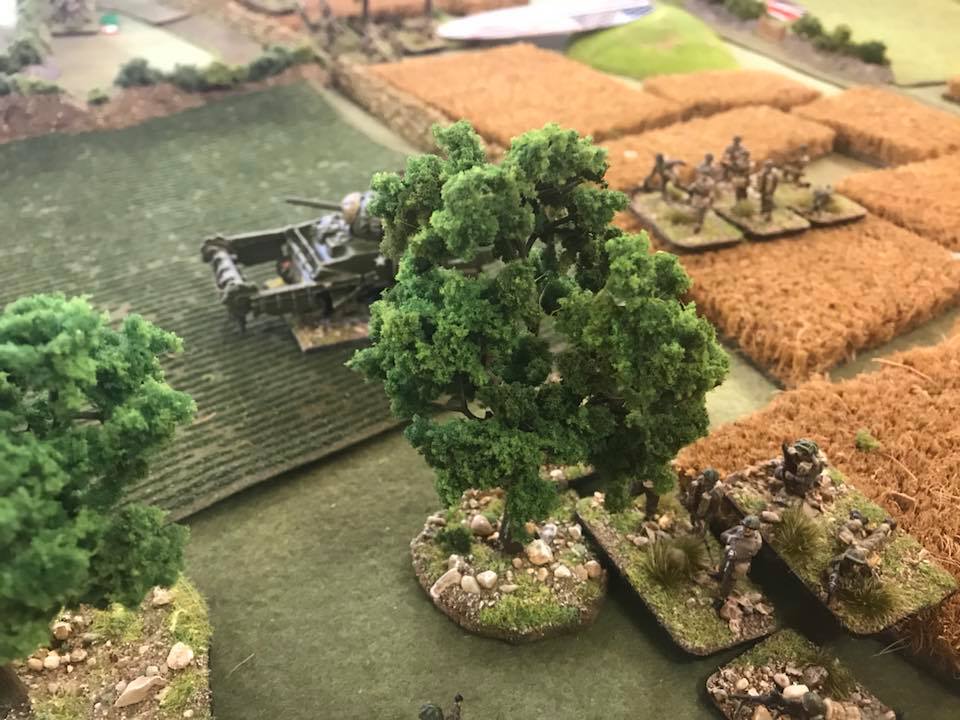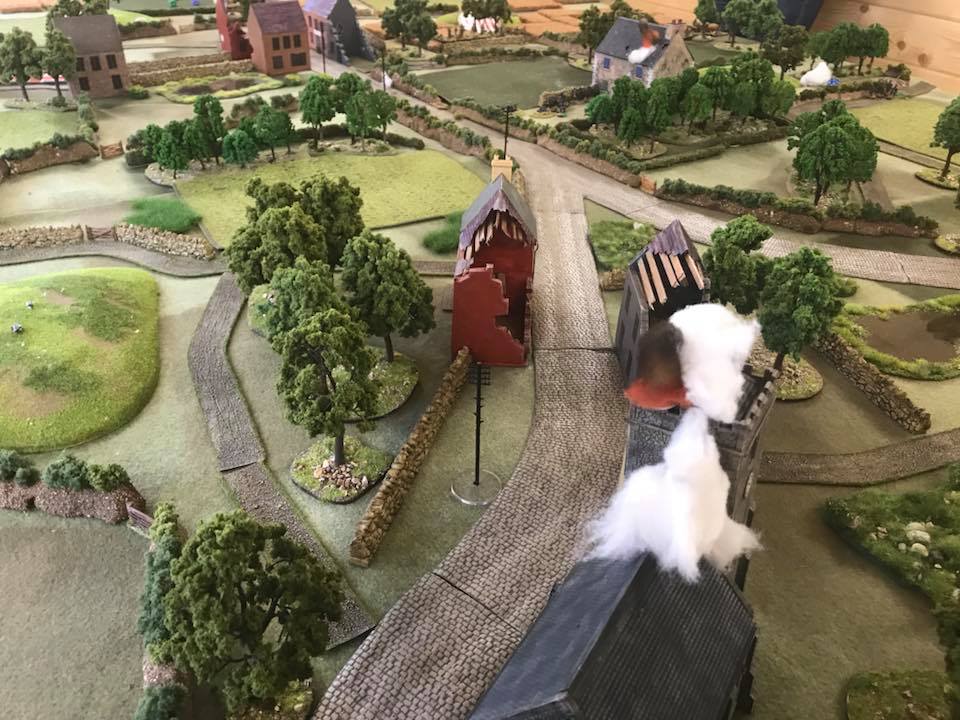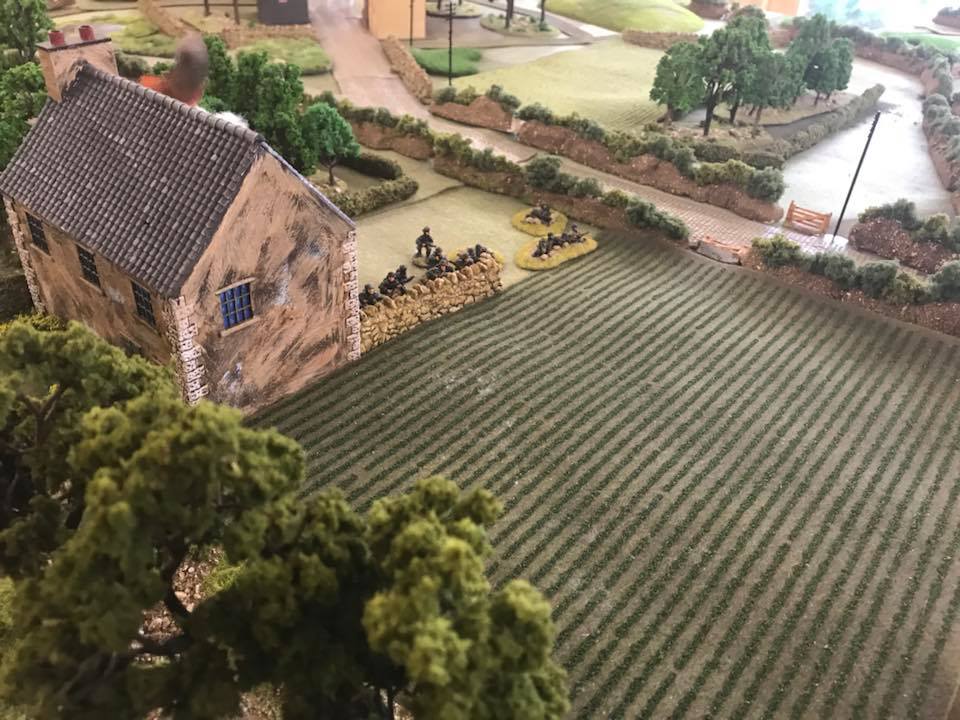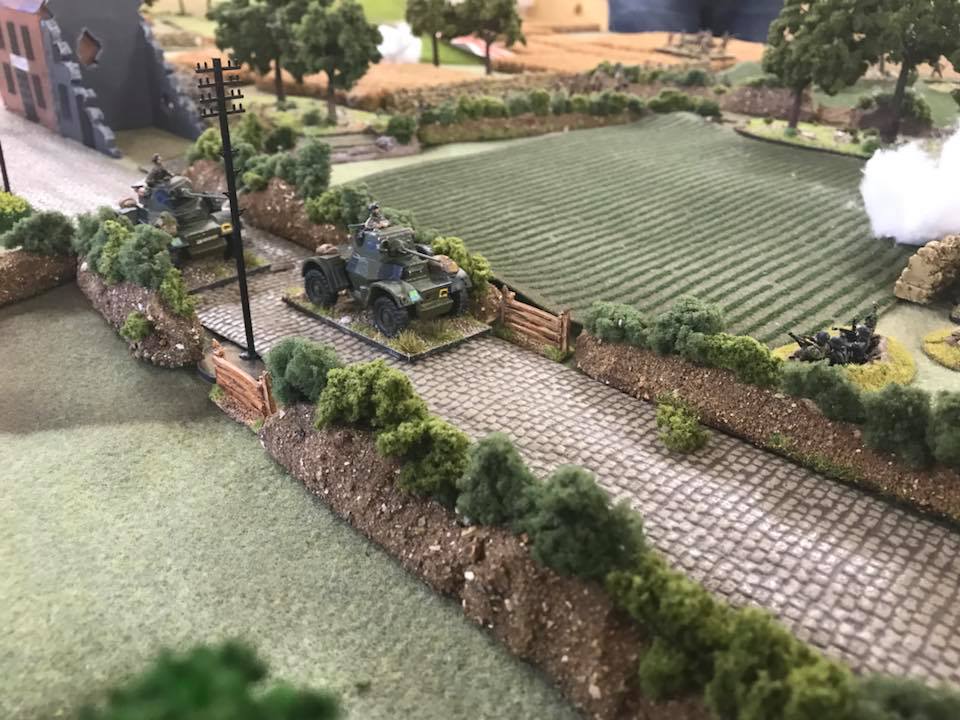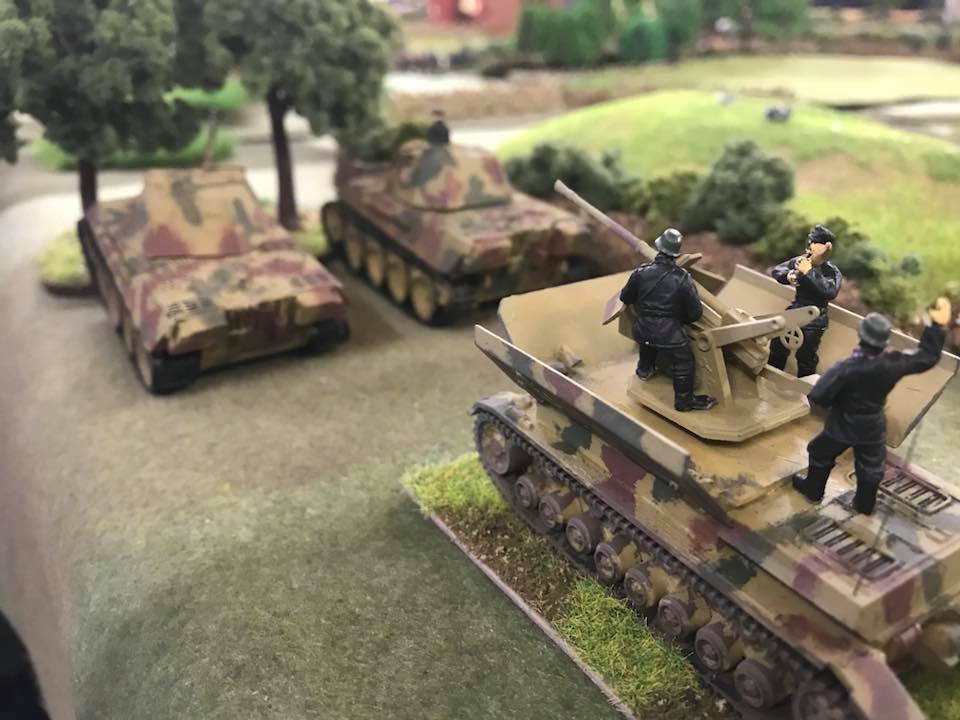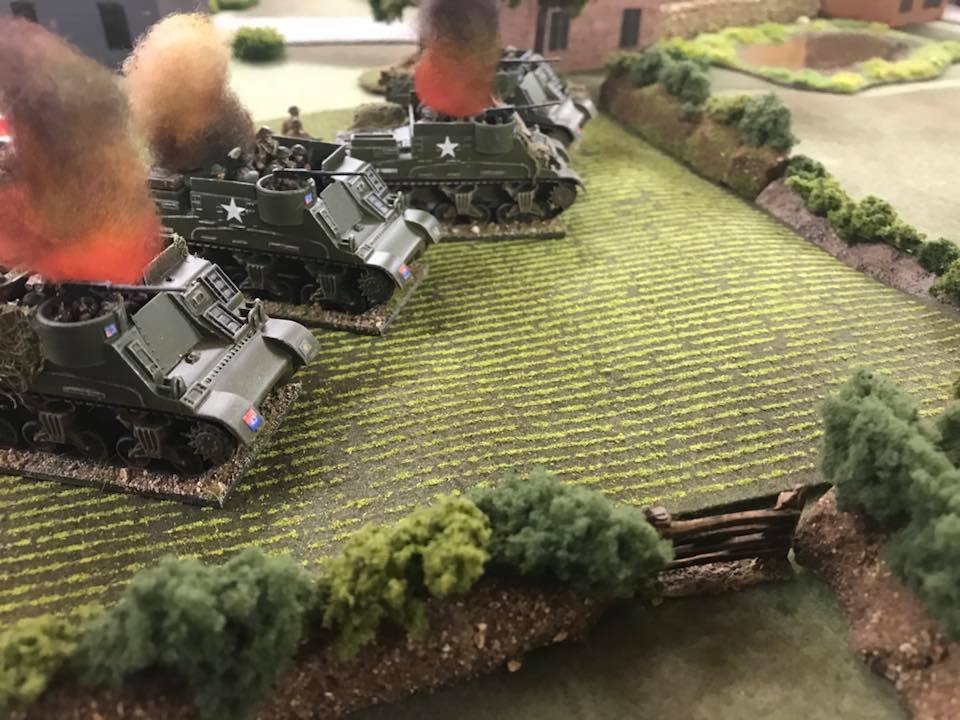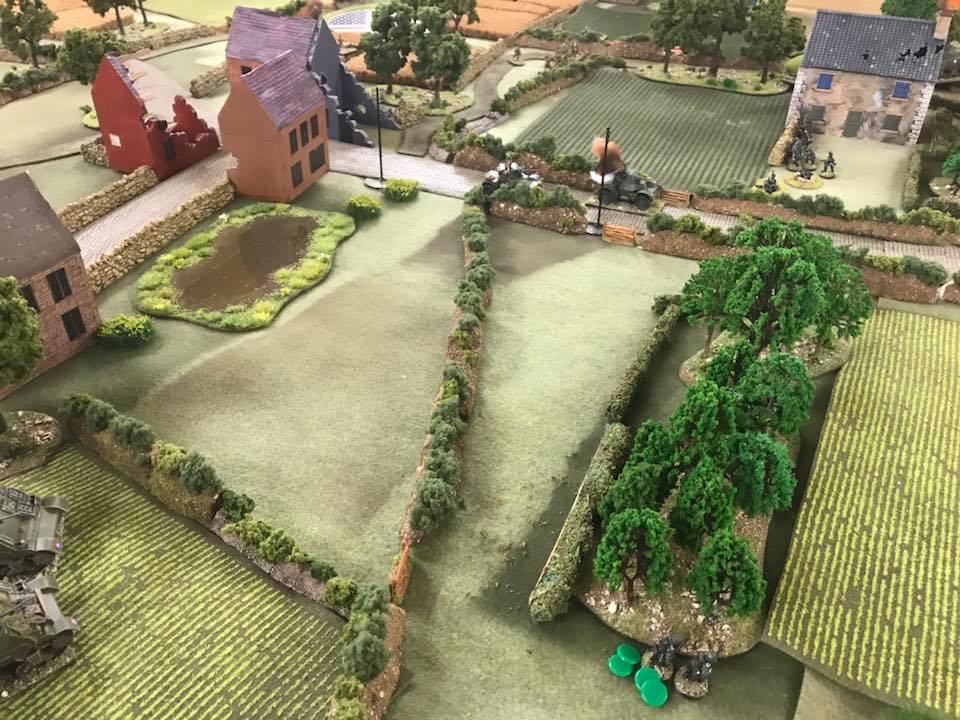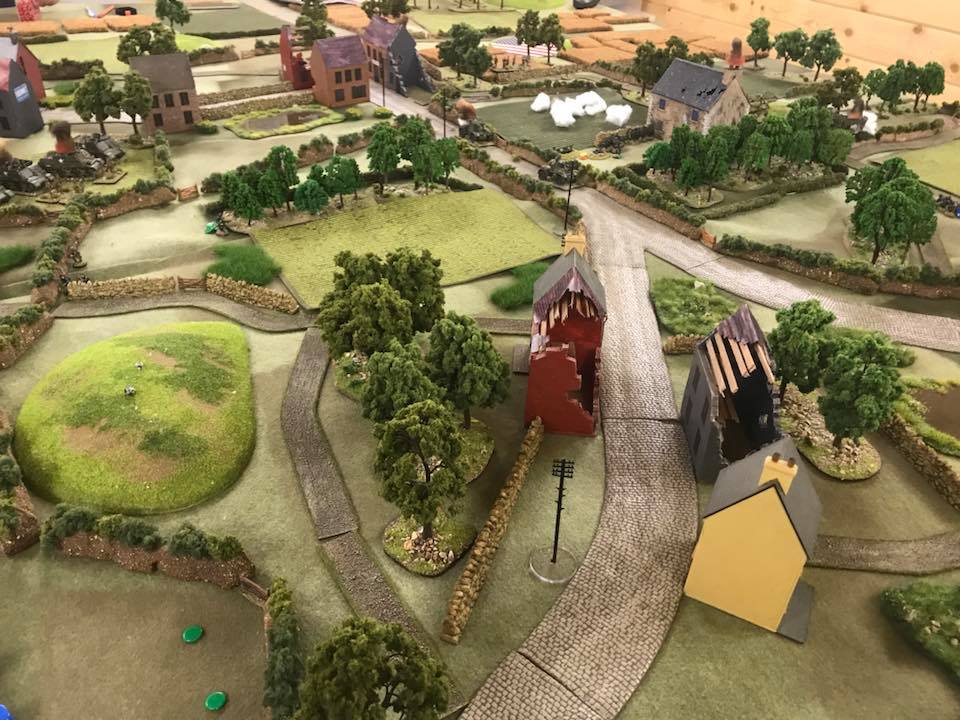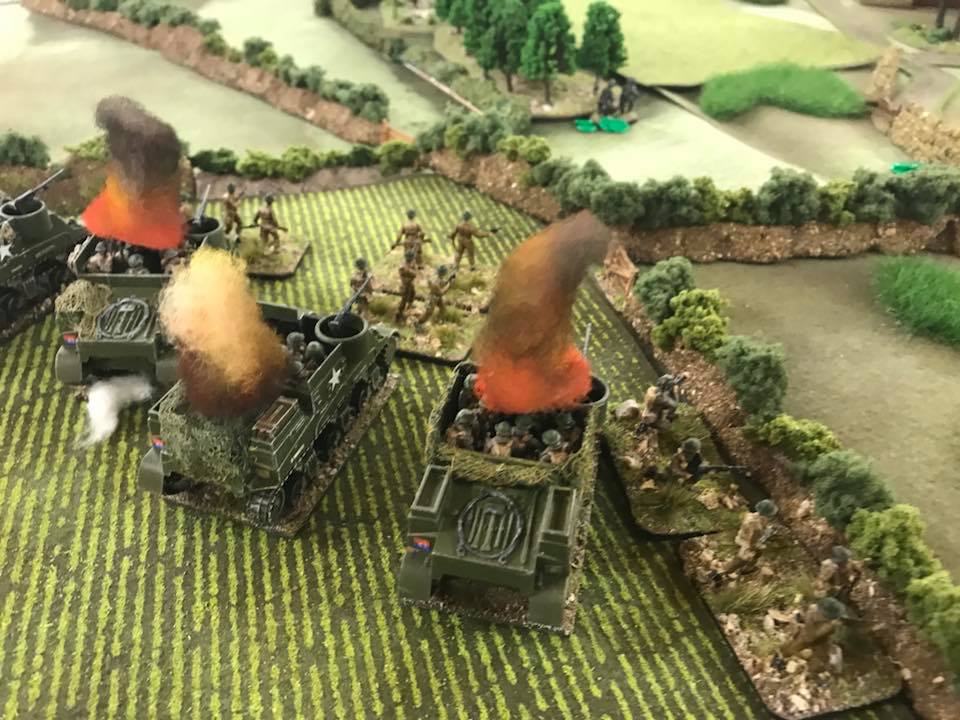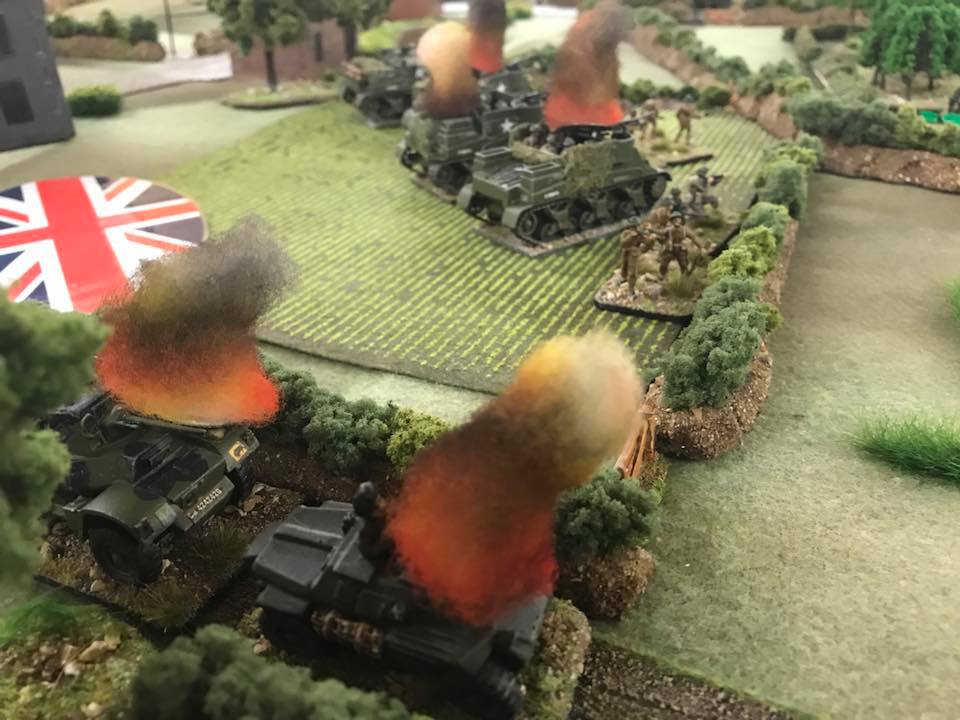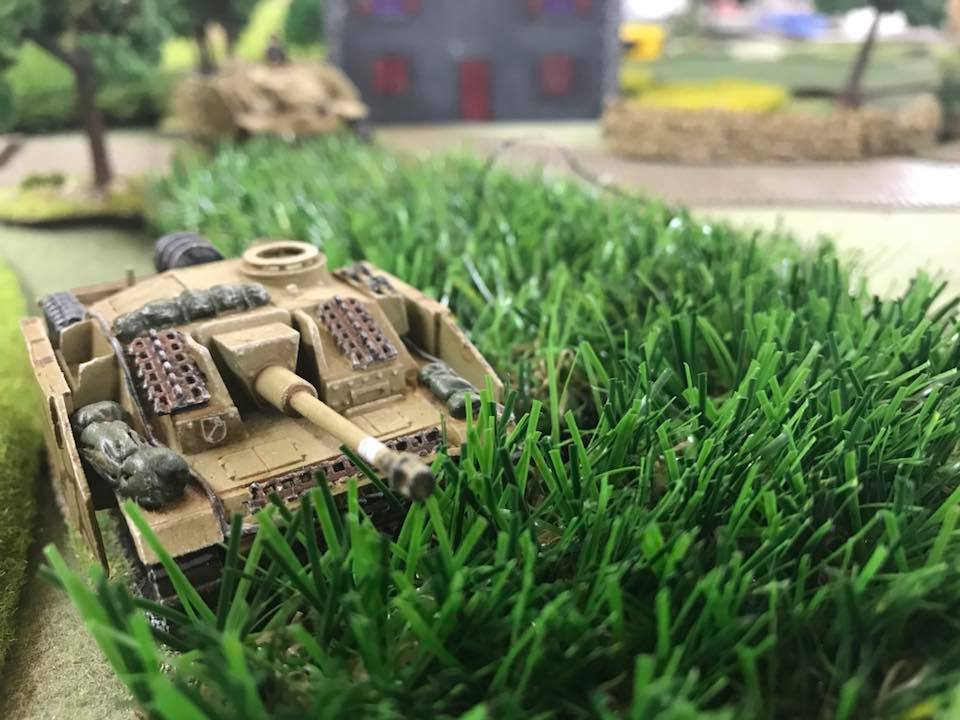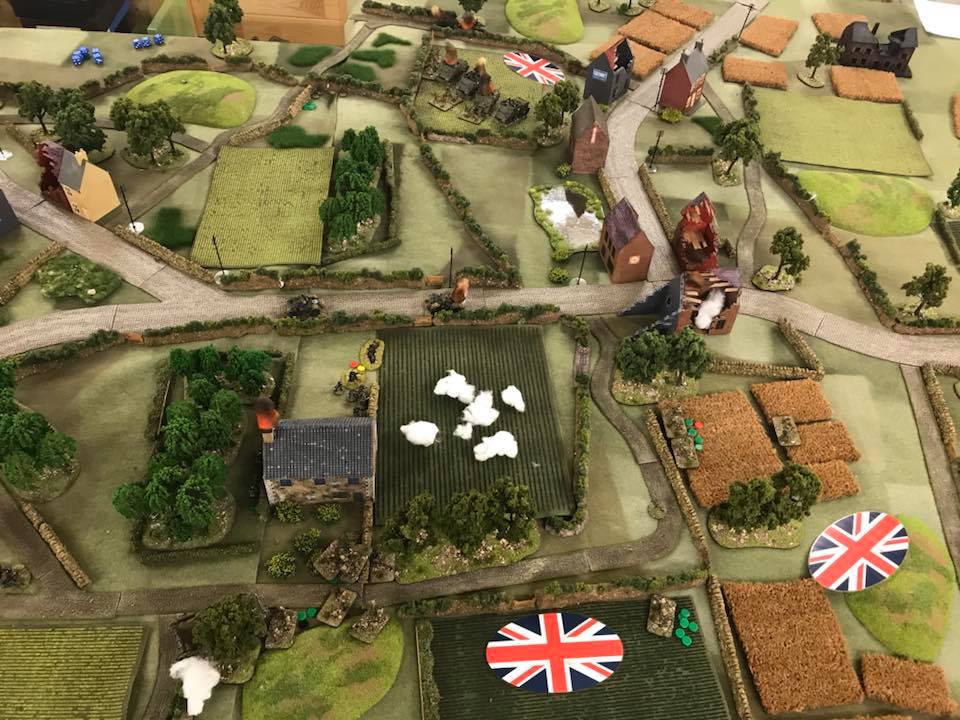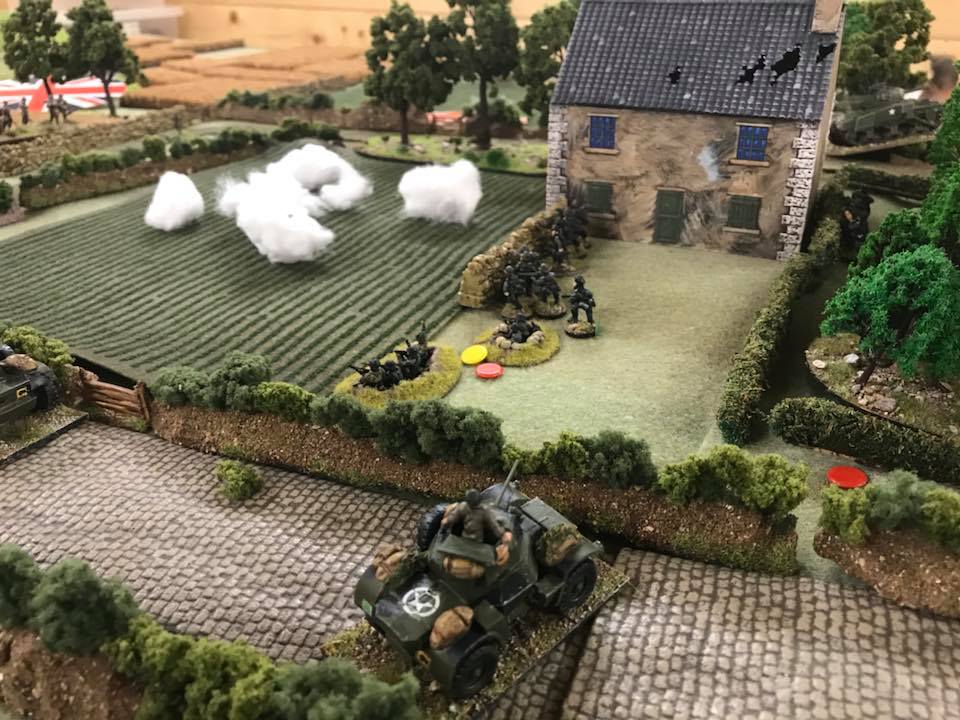Those of you who live in the UK may be aware that the Wyevale Garden Centres always sell off their winter model Christmas trees in early January (see previous post here). This year, I’d taken full advantage of the sale and bought several packets worth, and then added a new snow mat from Tiny Wargames to put them on. Now all I needed was an excuse to get everything onto the tabletop, and a game this Saturday just gone gave me the opportunity to do so.
As I seemed to have bought lots of trees, it would need to be a big game. Out came the extra bit of table, giving me an 8’ by 5’ playing area, on went the new mat, and on went the new trees. The result: a winter wonderland of epic proportions.
The Forces
This was to be a Soviet/German encounter battle set sometime in and around January 1944. As I found myself short of time in the preparation stages, I used the troop lists from one of the scenarios from the IABSM Bashnya or Bust scenario pack. A couple of the scenarios give listings of a re-inforced company for each side from which the players pick a number of platoons. As this was to be a big game, I used those lists but gave each side the entire list, not just a proportion of the list.
This meant that the Soviets (played by John) ended up with a company of ten T-34s, most of which were T-34/85s, supported by a re-inforced company of infantry: three platoons, an MG platoon, and a medium mortar platoon. As reconnaissance, the Soviets had a platoon of armoured cars and a platoon of scouts in lend-lease M3 halftracks. As support (well, it was supposed to be a big game), they also had a platoon of four SU-85 tank destroyers and a platoon of SU-76 SP guns.
The Germans (played by Dave), on the other hand, had a company of Gebirgsjaeger mountain infantry supported by an MG platoon and a mortar platoon. On top of this, they had a platoon of two infantry guns and a platoon of three Pak 40 anti-tank guns from regiment. Finally, they had a platoon of four StuG IV assault guns and a platoon of four Hetzer tank-killers.
The Objectives & Special Rules
As this was an encounter scenario by two reconnaissance-in-force kampfgruppes, I declared the initial objective to be the sawmill in the centre of the village. The secondary objective would be to exit the table on the opposite edge from each side’s start position. This would obviously necessitate defeated any enemy troops encountered en route. As the Germans were somewhat outnumbered, they would start at the table’s edge closest to the mill.
As this was a big battle, and taking place in winter, I had three special rules that would apply. Firstly, each time the Blinds card appeared, a d10 was rolled: with players only able to activate that number of Blinds. The other, non-activated Blinds would be assumed to be bogged down in tackling the wind and snow.
Secondly, there were two additional cards in the pack: the Snowdrift card and the Blizzard card. When the Snowdrift card was pulled, the next unit card out of the pack would be unable to move, being caught in a snowdrift. It could fire or spot, but not move. Once that unit’s activation was completed, both cards would then go into the discard pile. When the Blizzard card was pulled, the next unit card out of the pack could do nothing – being caught in a mini-blizzard – with both cards immediately going into the discard pile.
Thirdly and finally, as we were all on a 3½ hour time limit, we would use the force morale rules from Chain of Command adapted for IABSM from one of the recent Specials (and also used in several of the scenarios in the second September War scenario pack). For those of you unfamiliar with the mechanic, both sides started with ten force morale points; each time something bad happened to them (the loss of a Big Man or an AFV or an infantry squad etc) a dice was rolled, with certain results reducing the side’s force morale points by one or two points. Once force morale reached zero, that side would retreat from the battlefield.
Initial Moves
The game began with both players making a complete Blinds move onto the table with all their Blinds.
The Germans decided to split their armour, the StuGs on the right and the Hetzers on the left, and pack their infantry into the middle. Their plan was to take advantage of their initial advantage and get to the sawmill as soon as possible and then halt and defend from there. They would allow the Soviets to destroy themselves on their defence, and then carry out their secondary objective once the enemy were sufficiently weakened.
The Soviet plan involved sending their reconnaissance units forward to find the enemy, and then a broad advance right across the front: the Soviet steam roller in action. His armoured cars and scouts were therefore in front, with his infantry and armour evenly spread out in a line behind them.
The Germans continued to move their Blinds forward rapidly, and managed to get their company HQ into the vicinity of the sawmill before they were spotted and forced to deploy. A platoon of infantry would soon occupy the sawmill itself, with their MG platoon and Hetzers moving up on their left.
As for the Soviets, their reconnaissance forces quickly reached the tree line and started spotting the German Blinds. Unfortunately, they were themselves spotted in return, with the German commander calling in support from his mortars aiming to blow the scouts right out of their half-tracks.
The German Mortars card turned up remarkably quickly, and Dave rubbed his hands with glee. His rubbing became even more gleeful when he rolled a direct hit with no deviation!
Unfortunately, all this gleefulness had attracted the attention of the pixies, and his rolls for effect were so poor that all the Soviet scouts suffered were a few scratches to the paintwork and a single point of Shock.
Oh, sorry, I meant to say that the first box of ammunition opened turned out to have been ruined by being exposed to the elements for too long and was full of duds, so all the Soviet scouts suffered were a few scratches to the paintwork and a single point of Shock!
The pixies were only teasing, however, as the next card out of the pack was the German Mortars Bonus Fire, and this time the ammunition was good, and two of the half-tracks took a direct hit and were destroyed, with scouts bailing out everywhere before desperately trying to take cover.
It’s All About The Armour
The action now switched to the flanks and the various units of armour rolling forward through the snow.
On the German left, the Hetzers faced off against a platoon of T-34/76 tanks. The Germans had a numerical advantage, four to three, and were “low profile” but the Soviets had some cover from the edge of the treeline. Despite this, two T-34/76s were soon ablaze, with the third immobilised but still able to shoot. Good work from the Hetzers.
On the Soviet left, the lead platoon of T-34/85s bumped into the four StuGs. One StuG was immediately destroyed, with another having bits knocked off it right, left and centre. This was, however, just a temporary setback for the Germans: a moment later, two of the three T-34/85s had been destroyed.
Meanwhile, in the centre, the German machine gun platoon had occupied a small dwelling on the flank of the Soviet armoured cars. They opened fire, but their initial volley was pretty ineffectual despite the flank-fire advantage. The BA-64s, on the other hand, returned fire and promptly took out the MG team in the house itself.
All this action had had quite an effect on each side’s force morale, with the Soviets already being down to under half their initial allocation, with the Germans not far behind them.
The Steamroller Reveals Itself…Too Late!
Now that they had located their enemy, the Soviet Blinds all moved forward and deployed. On their right, the largely destroyed T-34/76s were reinforced by the four SU-85 tank killers and a single T-34/85. In the centre, their infantry moved forward towards the edge of the treeline. On their left, the rest of the T-34/85s (three of them) appeared and moved forward to engage the StuGs.
Unfortunately, the cards gave the waiting German Hetzers another round of fire, which they hammered into the newly-arrived SU-85s which, as tank killers, have a very big gun but pretty rubbish armour.
The Soviets had just thrown the tank-killers forward with no consideration for cover, and two were knocked out/forced to bail out almost immediately. This tipped the Soviet force morale into negative numbers, and they were forced to retreat. They would probe forward elsewhere…somewhere where the opposition was not quite as strong.
Aftermath
Both players declared it to be a great game.
John, commanding the Soviets, was frustrated that he hadn’t been able to bring his numbers to bear properly. In retrospect, he also thought that, as per Clausewitz, he should have concentrated his attack on either of the flanks or the centre rather than just advance on a broad front across the entire tabletop.
Dave, playing the Germans, was happy to have survived the Soviet onslaught. He was pretty happy with the way that his plan had worked, although had a few improvements that he would have made to his deployment.
As for me: well, I was happy too. A big game that both players had enjoyed on a big table with my new mat and with lots of new trees. What more could one want!
Robert Avery








